Rocky Mountains
Images collected from around Colorado, beginning in April, 2017, Most all images are landscapes from the hills, forests, mountains and streams surrounding towns such as Crested Butte, Telluride, Durban, and Steamboat Springs, Colorado, and the different National Forest that can be found nearby. There can be a contrast with these images, some of them bright with snow flurries and white, while others represent the tranquility of mesmerizing sunrise or sunset.
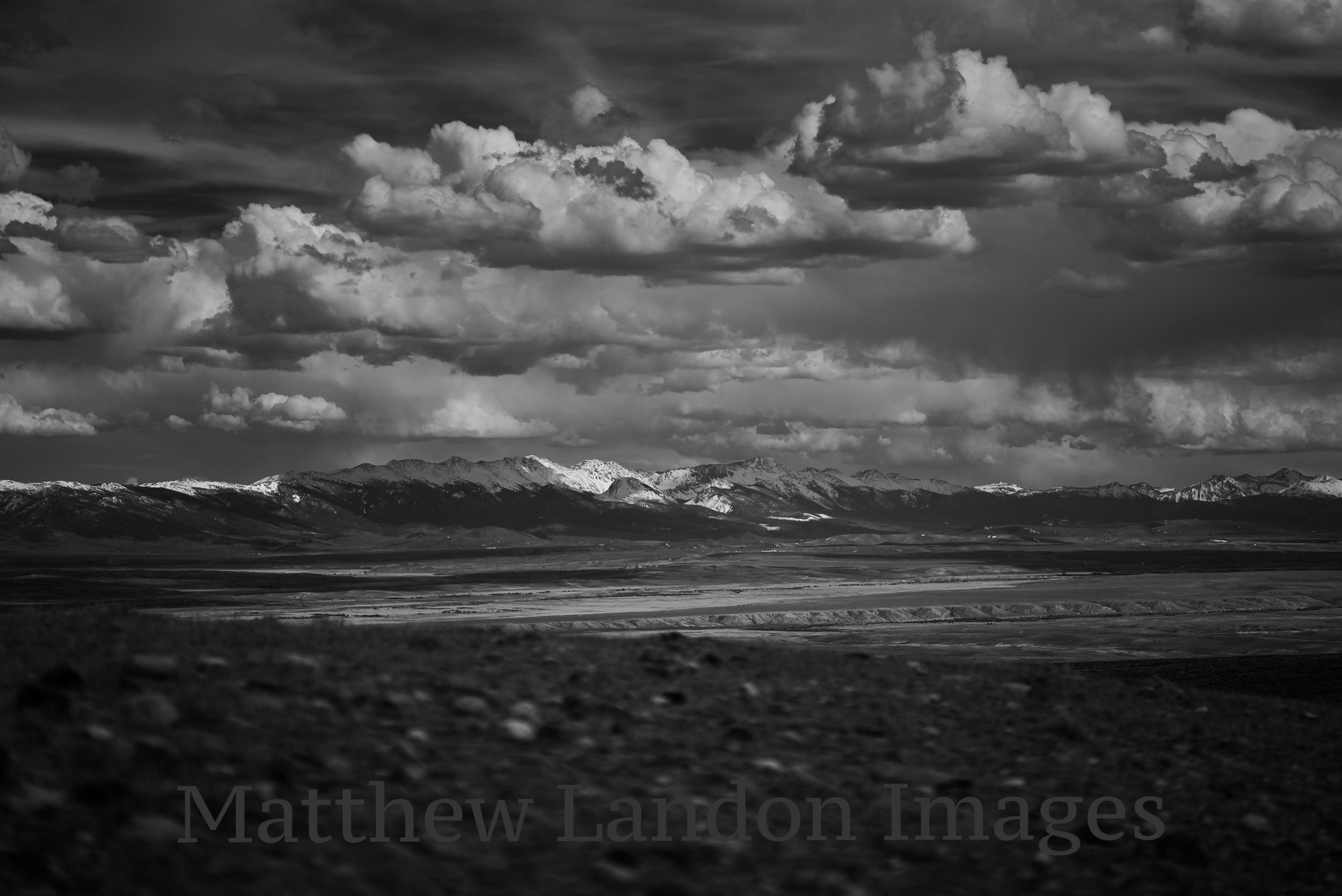
Images collected from around Colorado, beginning in April, 2017, Most all images are landscapes from the hills, forests, mountains and streams surrounding towns such as Crested Butte, Telluride, Durango, and Steamboat Springs, Colorado, and the different National Forest that can be found nearby. There can be a contrast with these images, some of them bright with snow flurries and white, while others represent the tranquility of mesmerizing sunrise or sunset.
This photo is from near Cowdery and Walden, towns nestled within three distinct ranges, along with the North Platte River tributaries of Northern Colorado.
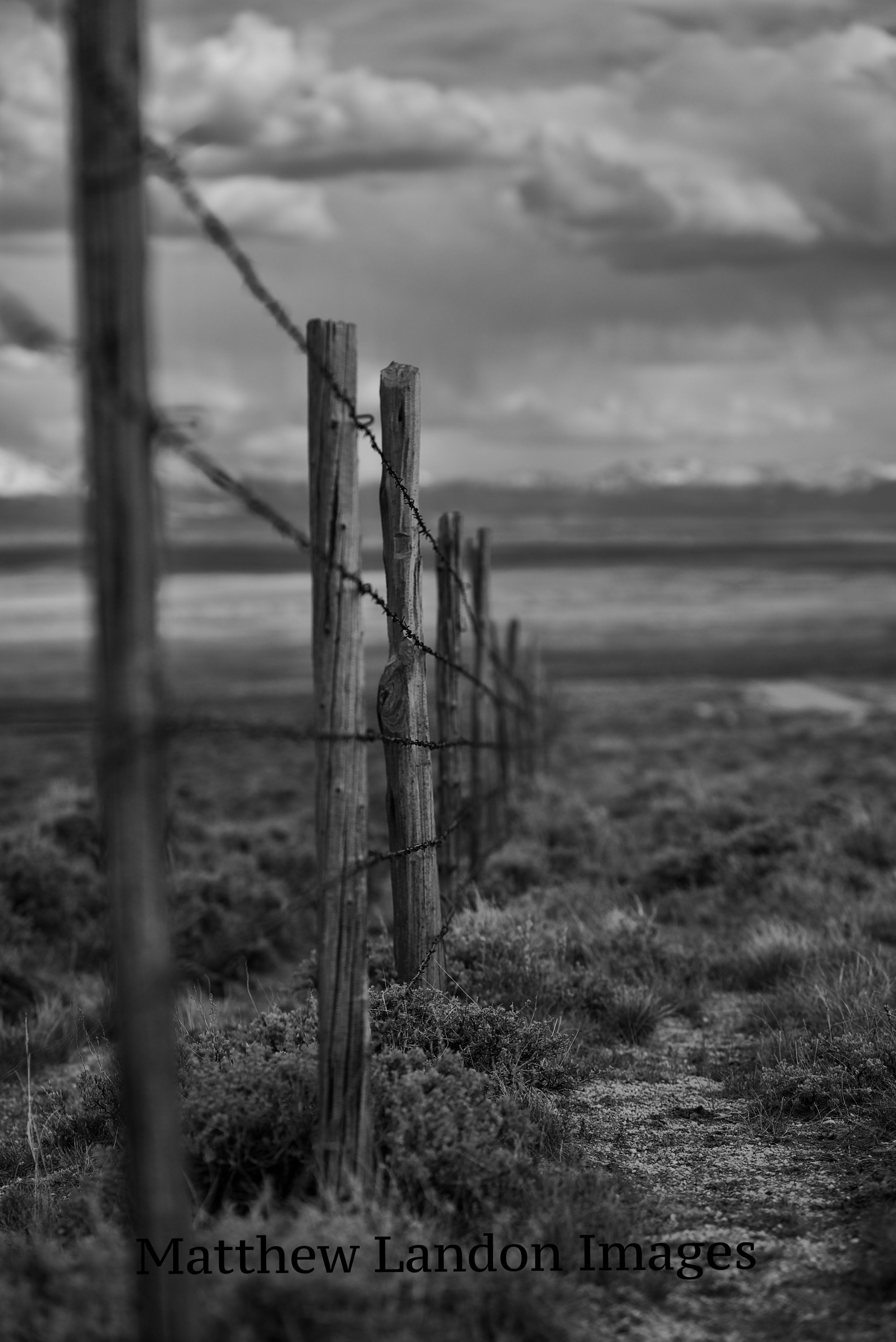
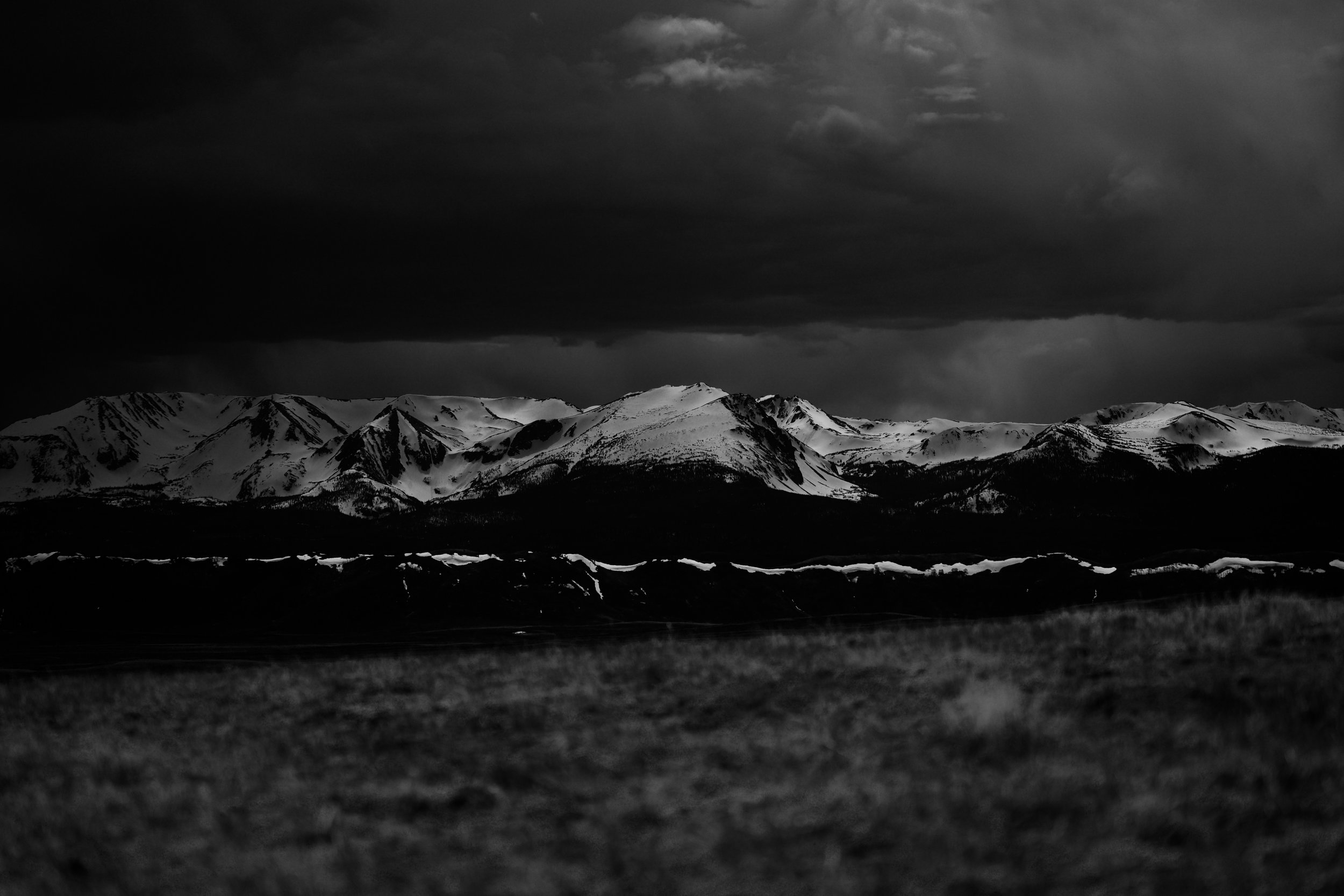
"There are no rules for good photographs, there are only good photographs." Ansel Adams
I have found that the more pictures I take of a subject, the more I like that subject. Mt. Zirkel is no exception. I spent a few hours driving up this lonely ridge with this beautiful view. I will certainly spend a night there, soon.
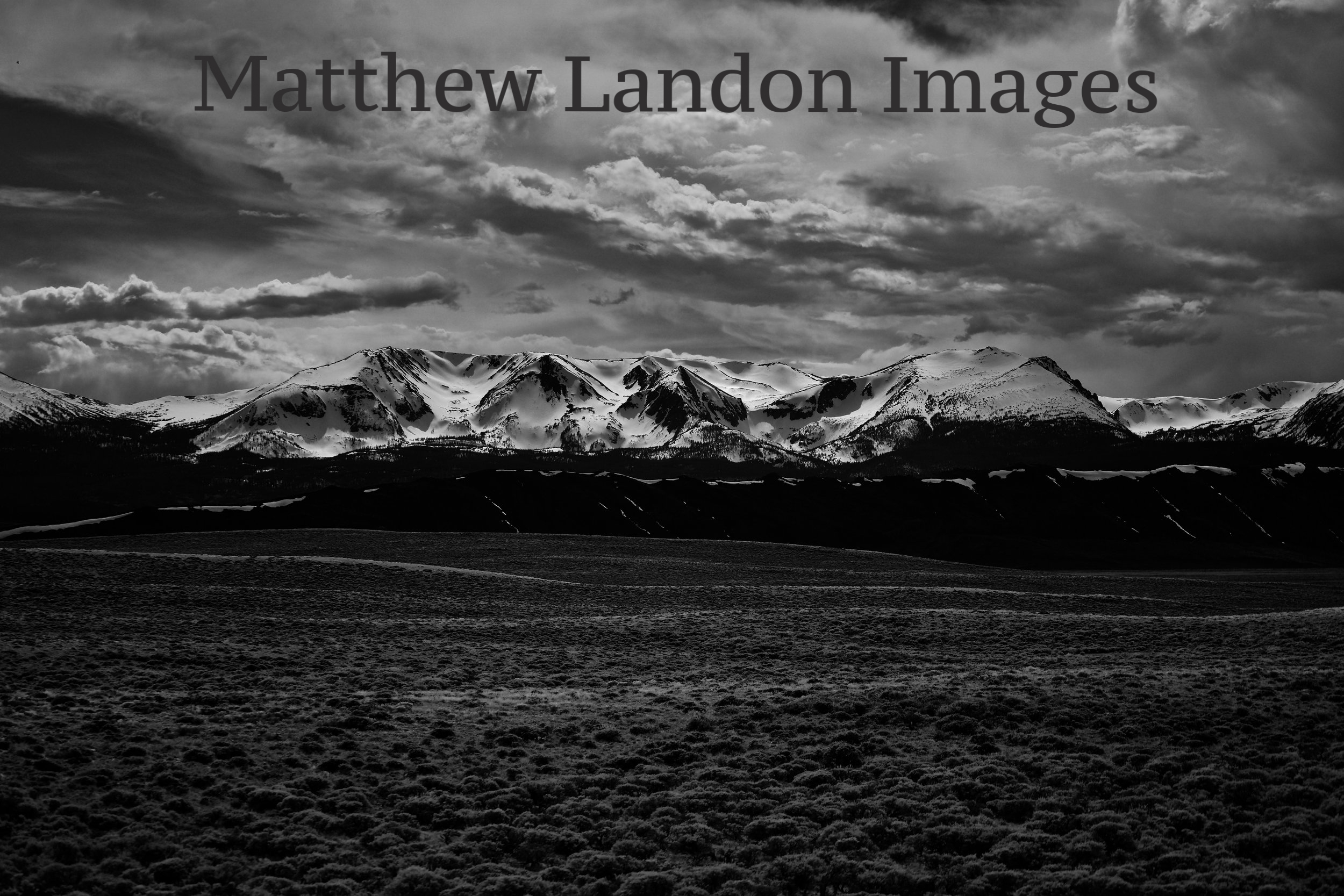
I haven't practiced with panoramas, or with "stitching" photos together yet. Stitching multiple frames together can produce the massive landscapes that seem to stretch for ever, and they make such stunning pieces to display. This was a single exposure, handheld with a longer lens. The clouds reflected enough light to foretell the coming rains. Beauty in North Park abounds.
24x36 aluminum print. Comes with framed backing, ready to hang.
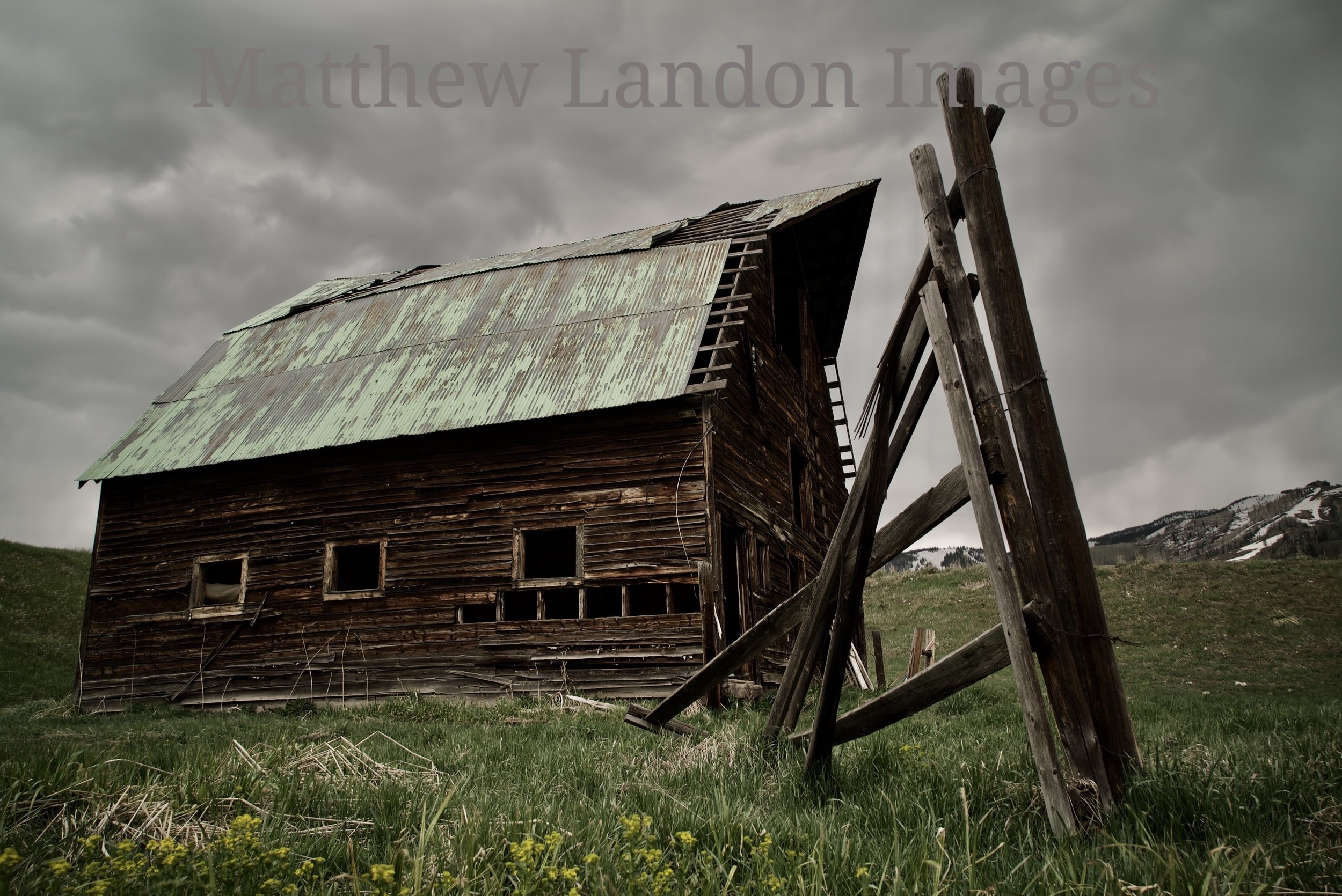
The little barn really did captivate me. I will probably shoot it many more times in the next few years. I titled the print "Left Behind..." as an homage to it's place in a rapidly changing ski town, with million dollar homes surrounding it and the 21st Century just a few feet away.
I moved around it multiple times, and I want to share all of it's changing character with you here.
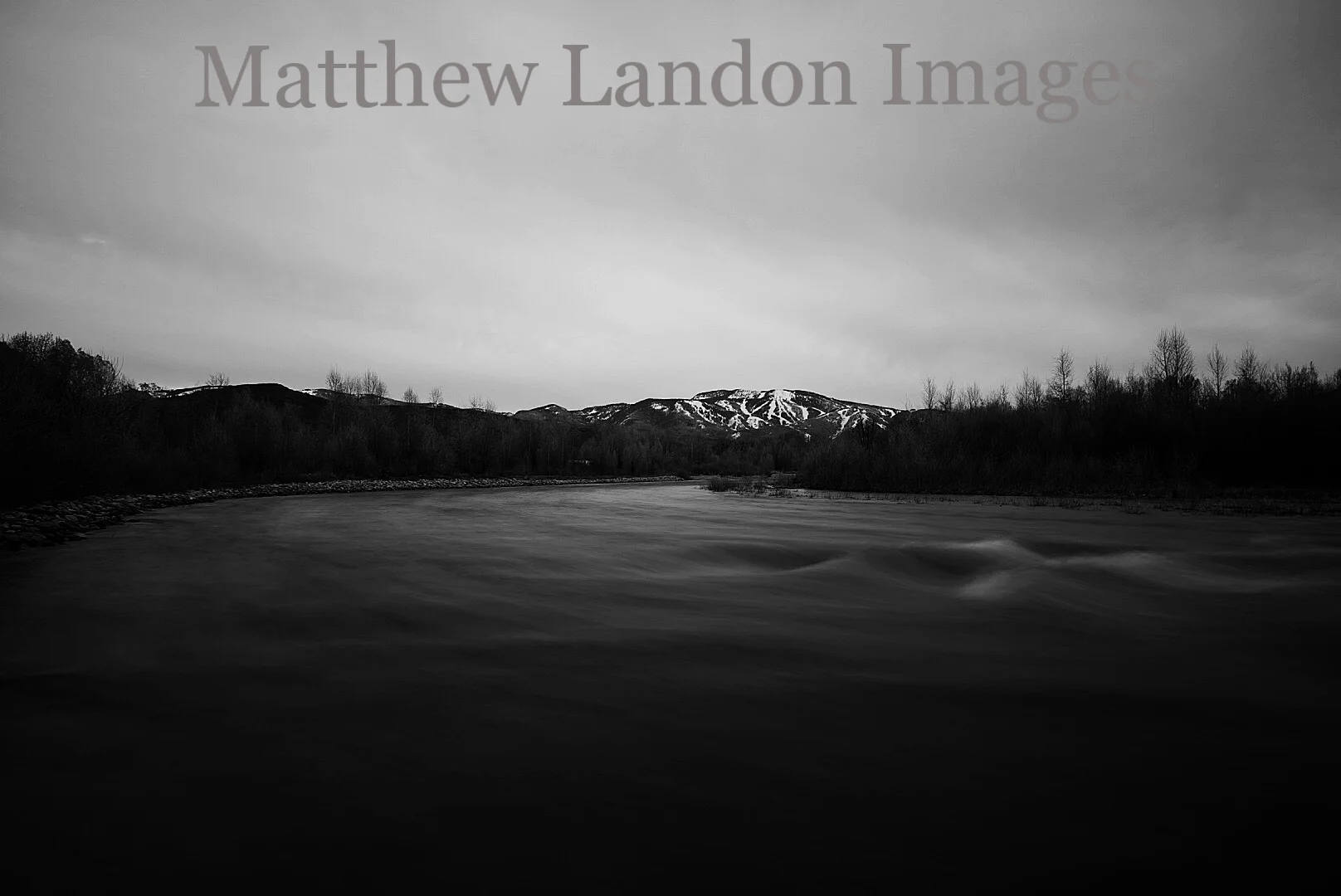


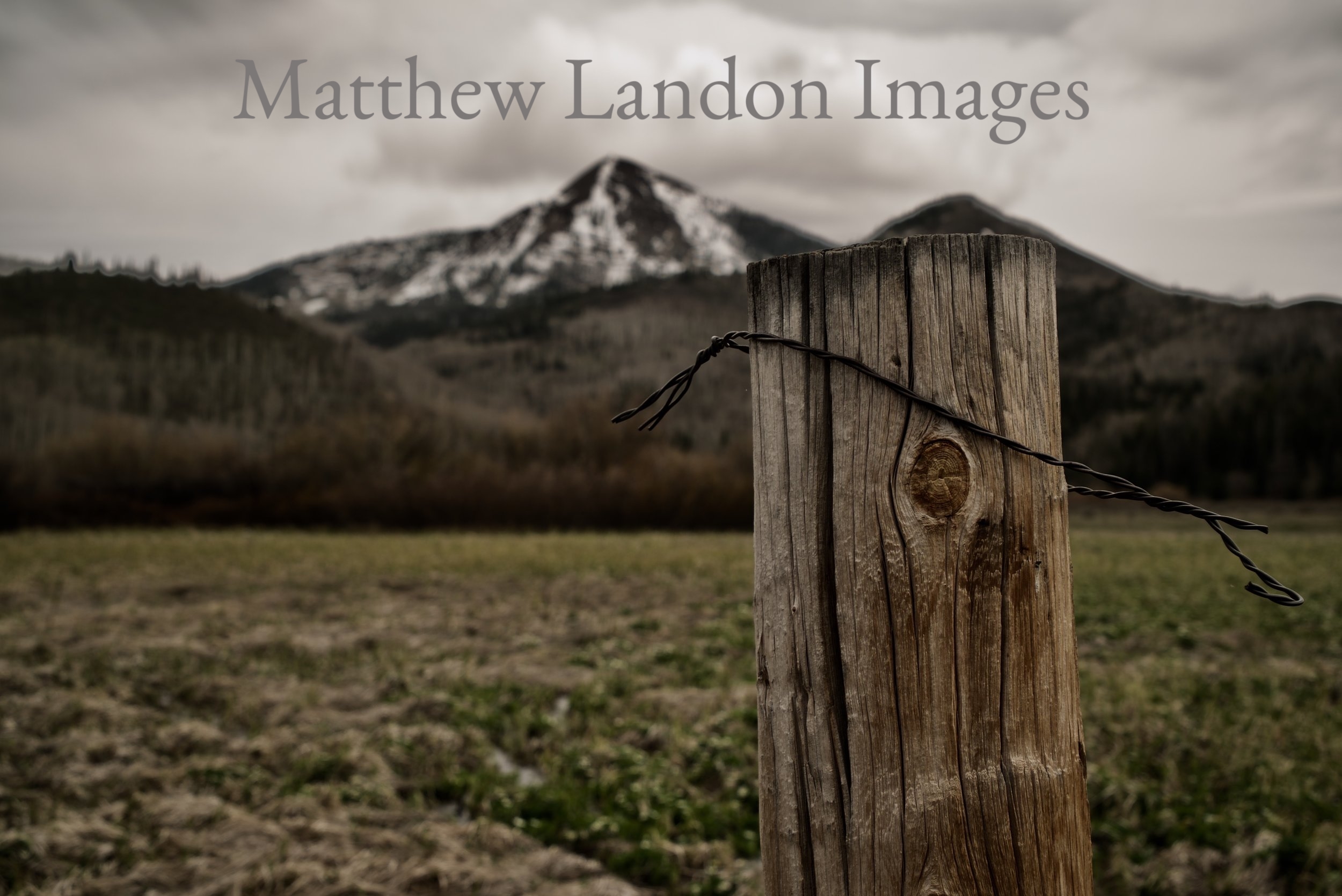
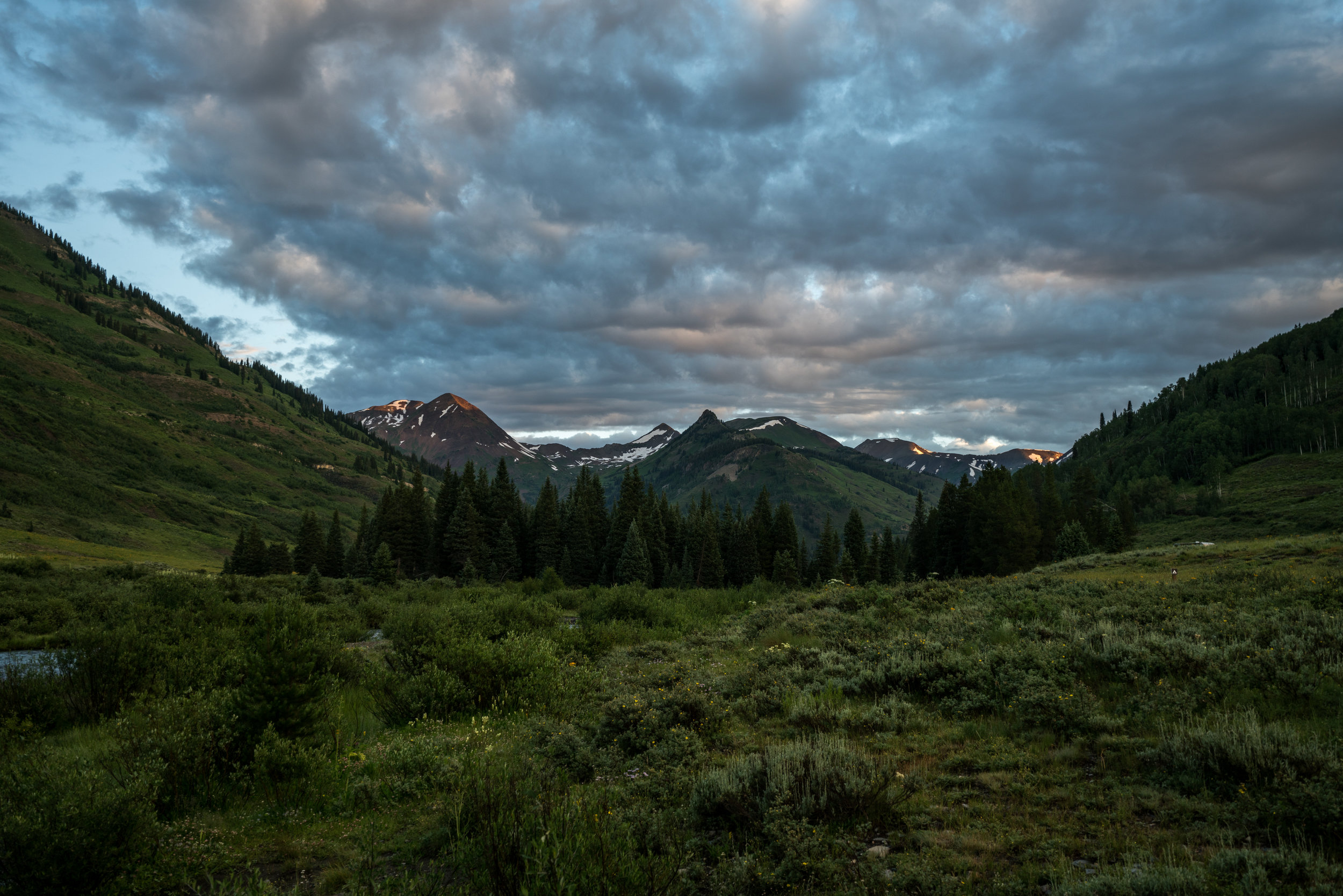
Arguably one of Colorado's wildflower capitals, I'd had high hopes when I arrived in Crested Butte of capturing some of the iconic images I'd been imaging. Maybe it was residue of the West Coast trip, or maybe a heightened awareness of "what" I wanted the image to be, or maybe it was spending too much time packing up my camp, but I didn't find the icons I was hoping to.
My favorite camp site is just off to the left, on Slate Creek. It is a set of undeveloped sites, and most evenings I can quickly find a place among the pine trees to settle in for the night. The sun rises and sets along the shoulders of the peaks to the north, truly Colorado at it's best.
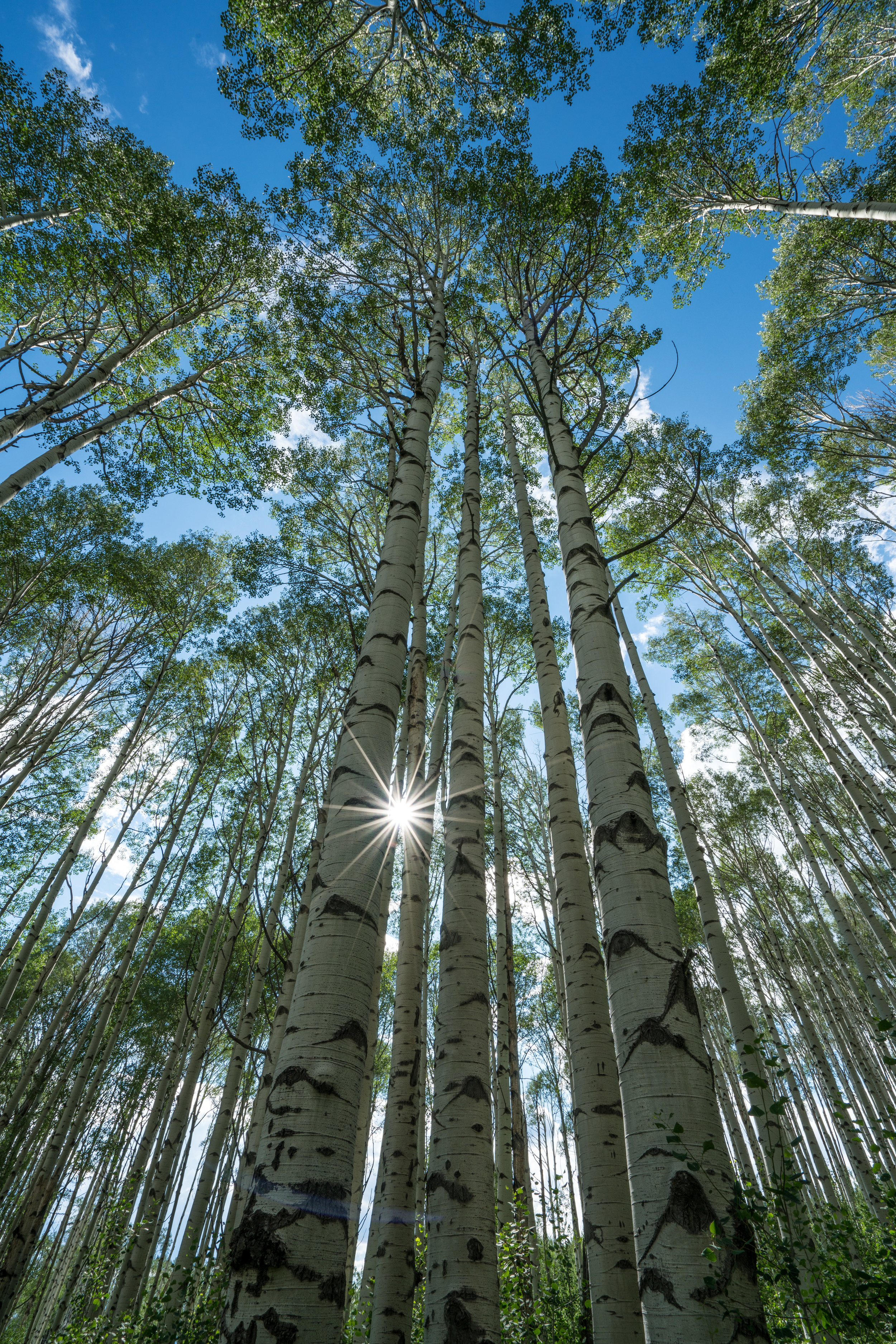
Stoic and magical, the other icon of Colorado's mountains, these creatures grow to be some of the worlds largest organisms. The different hues of the their white can sometimes glisten and other times mute the light. Anytime I find myself in an Aspen grove, I'm instantly transported to a simpler time and a simpler place. They are my fountain of youth.
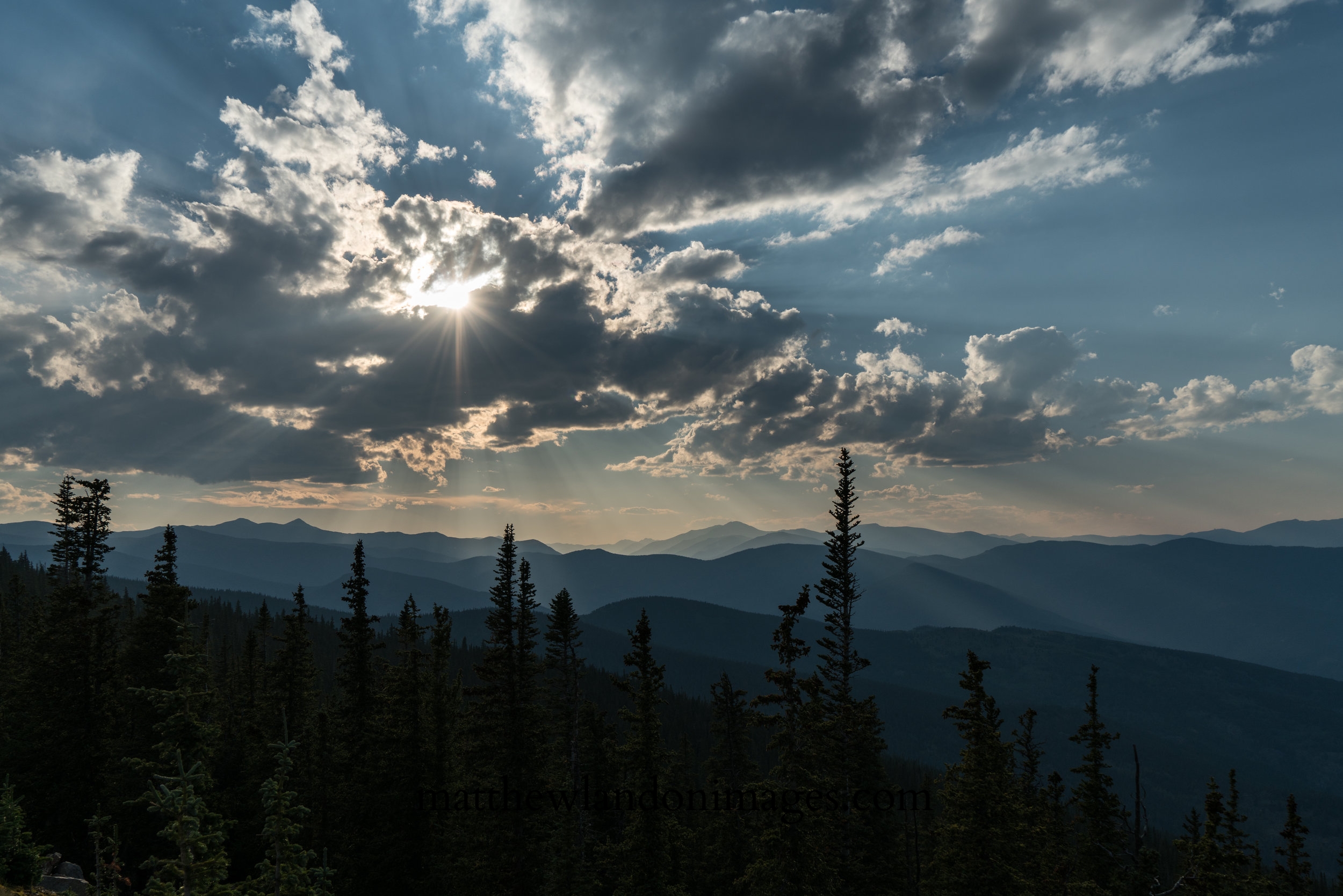
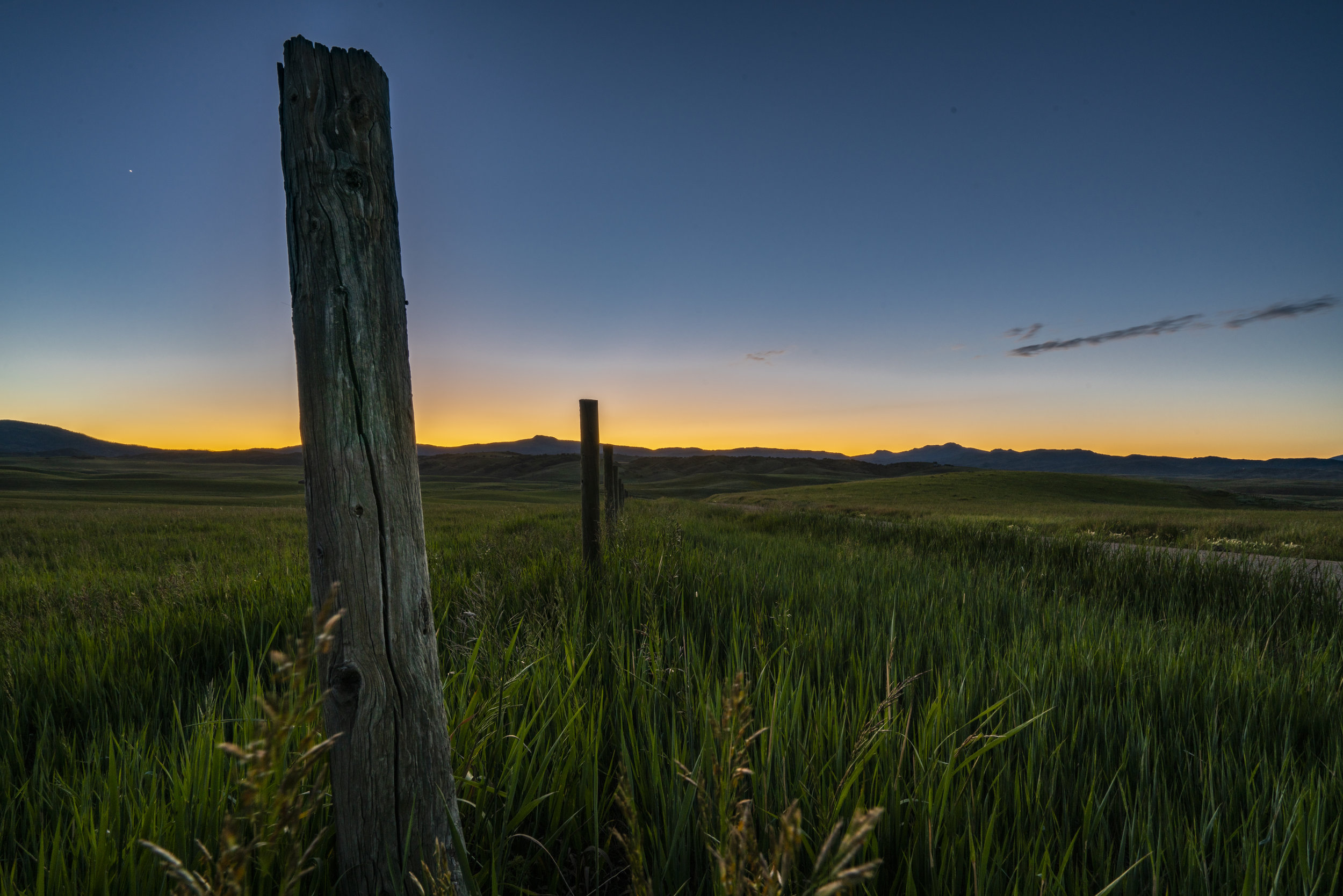
North of Steamboat there are hundreds of miles of county roads that twist and turn and climb and descend the irregular and rolling features of this landscape. Ranches dot the landscape, old and new, and the long forgotten wagon and train stops still bear witness the the sunrises and sunsets that never cease.
Mystic is just one of these forgotten boroughs, tucked in the shadow of the Sleeping Giant. The abandoned fence post a reminder of that older time.
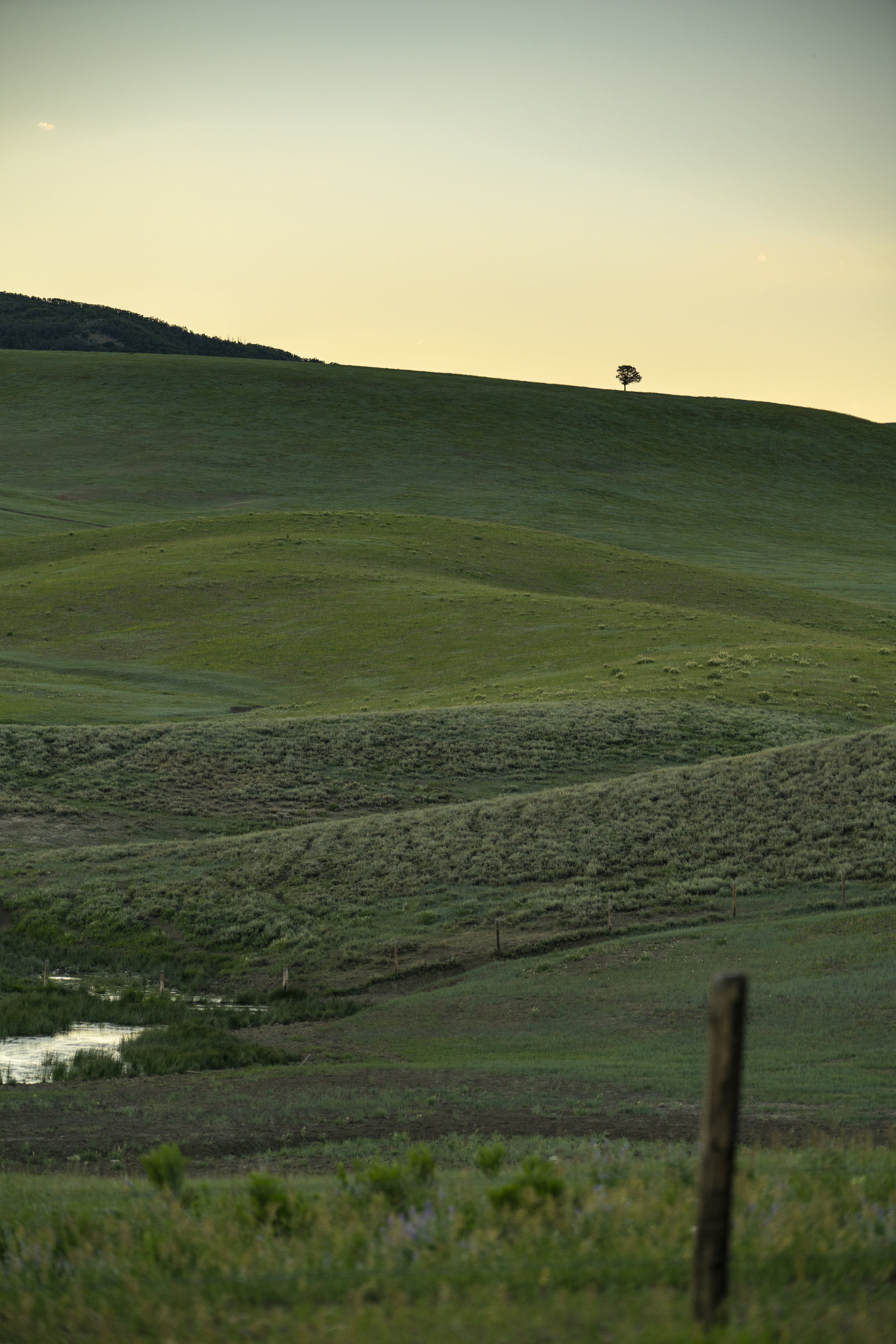
The Sleeping Giant is dominant geological feature to the northwest of Steamboat Springs. It is easily recognized and equally iconic to Mt. Werner, Hanh’s Peak, and Howelsen Hill. And just like this other features is seems difficult to capture, yet the surrounding landscape, the hills, valleys and hummocks that it creates add depth and texture to the landscape.
This lone tree, standing on the eastern flank of the Giant is just one such example of how a physical feature can change and effect the landscape surrounding it, just by it’s presence.
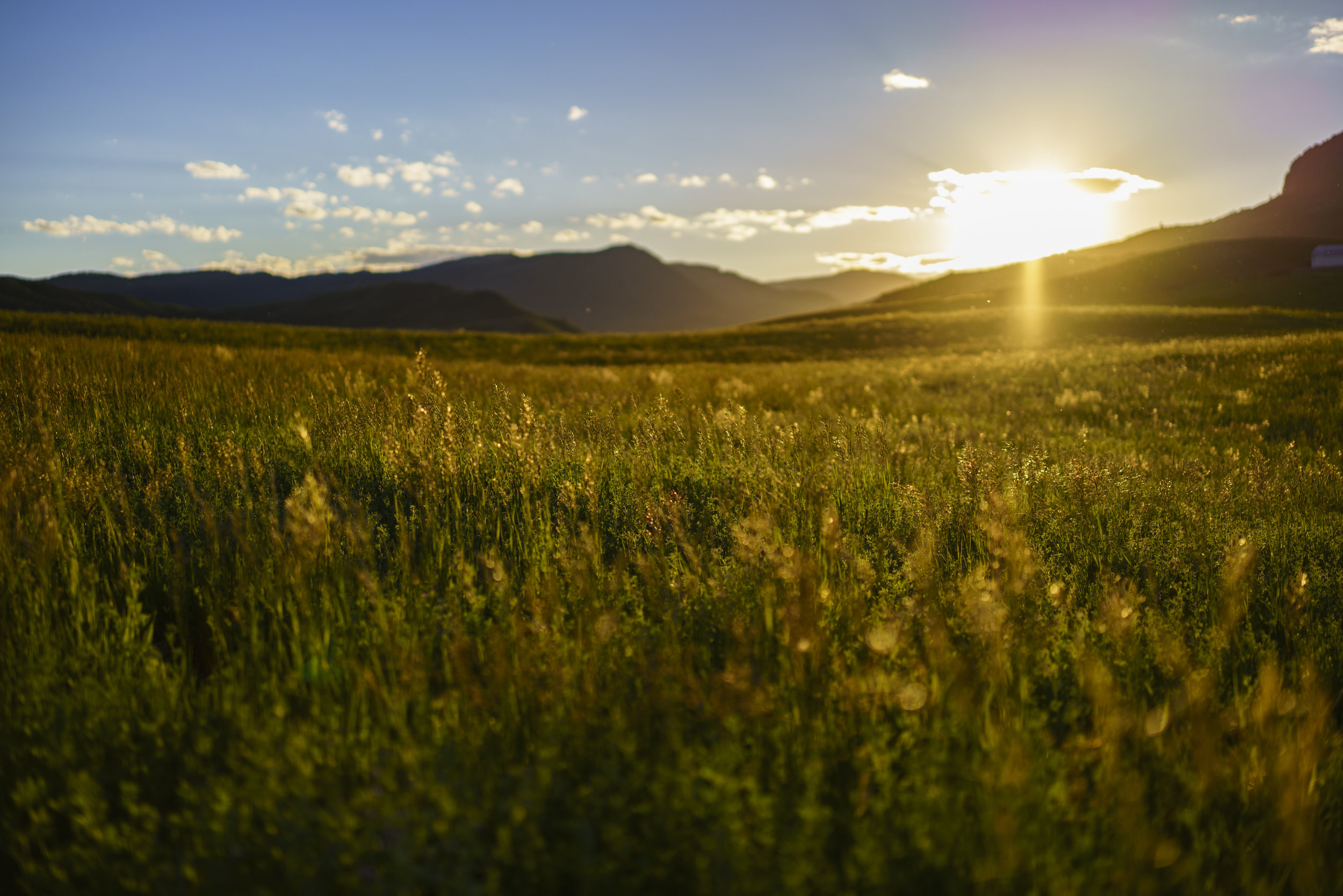
The land, the animals and the people all depend on this humble and simple grass. Looking the soil in its place, providing a simple sustenance or arranged to create lasting childhood memories, hay is a byproduct of centuries of cultivation, and symbol of summer to all those who grew up around a farming.
I consider myself fortunate enough to have memories that span a lifetime with this grass. Running across massive bales, throwing it up on the back of stock trucks, cutting it out of its twine in order to feed the milking cows, I’ve been lucky enough to see it in all its’ stages.
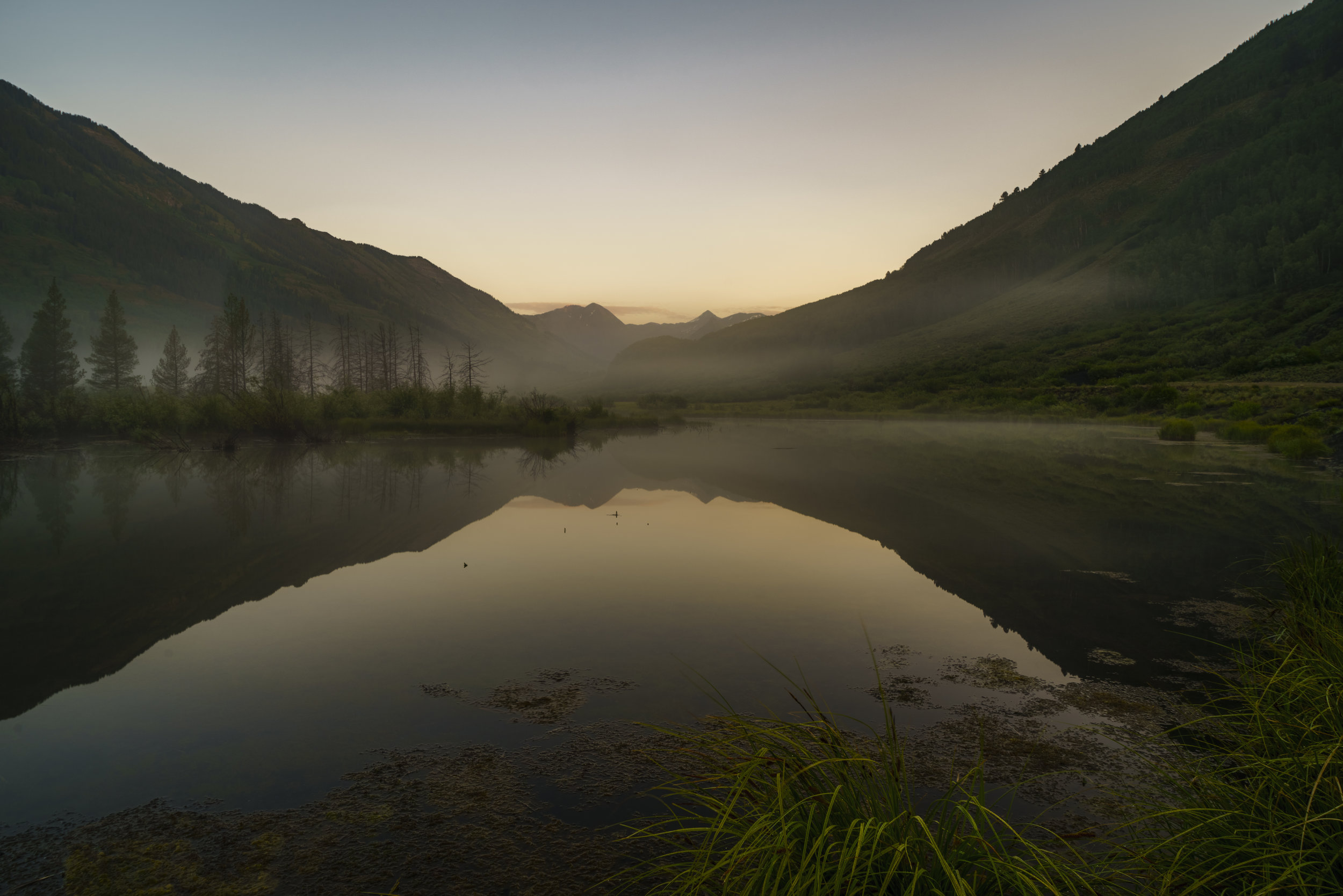
more real. Getting up before dawn to go find a sunrise composition is my strength. I feel that I do best when I have a very specific image in mind, as I have either been to the location or have seen it enough times. Most of my trips to Crested Butte have been on a motorcycle, so I’ve usually been moving too much to try think of compositions. This pond though, is extraordinary. It begs to photographed. And though I have a few phone images, I didn’t have anything like this, until this morning. It isn’t symmetrical, and it isn’t the blown out colors of many sunrises here, but is subtle, and calm. It’s exactly what I needed.
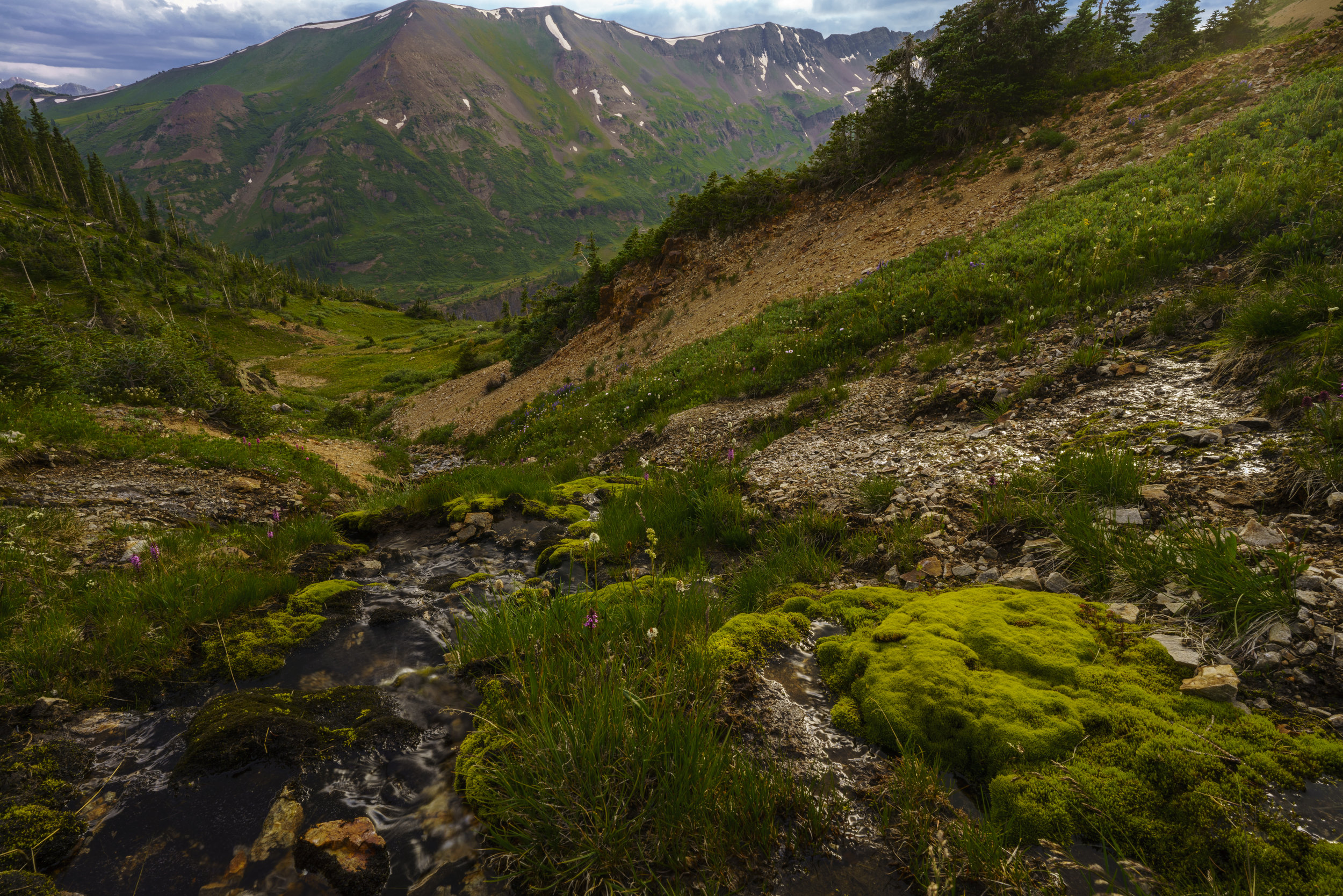
The depth didn’t resolve here as I was hoping it would. This little couloir has probably rained small avalanches and rock slides to the bottom of the pass many hundreds of times. Peering down into it an a lesser hospitable day would certainly take all the nerves one could muster. Today, it was bliss.
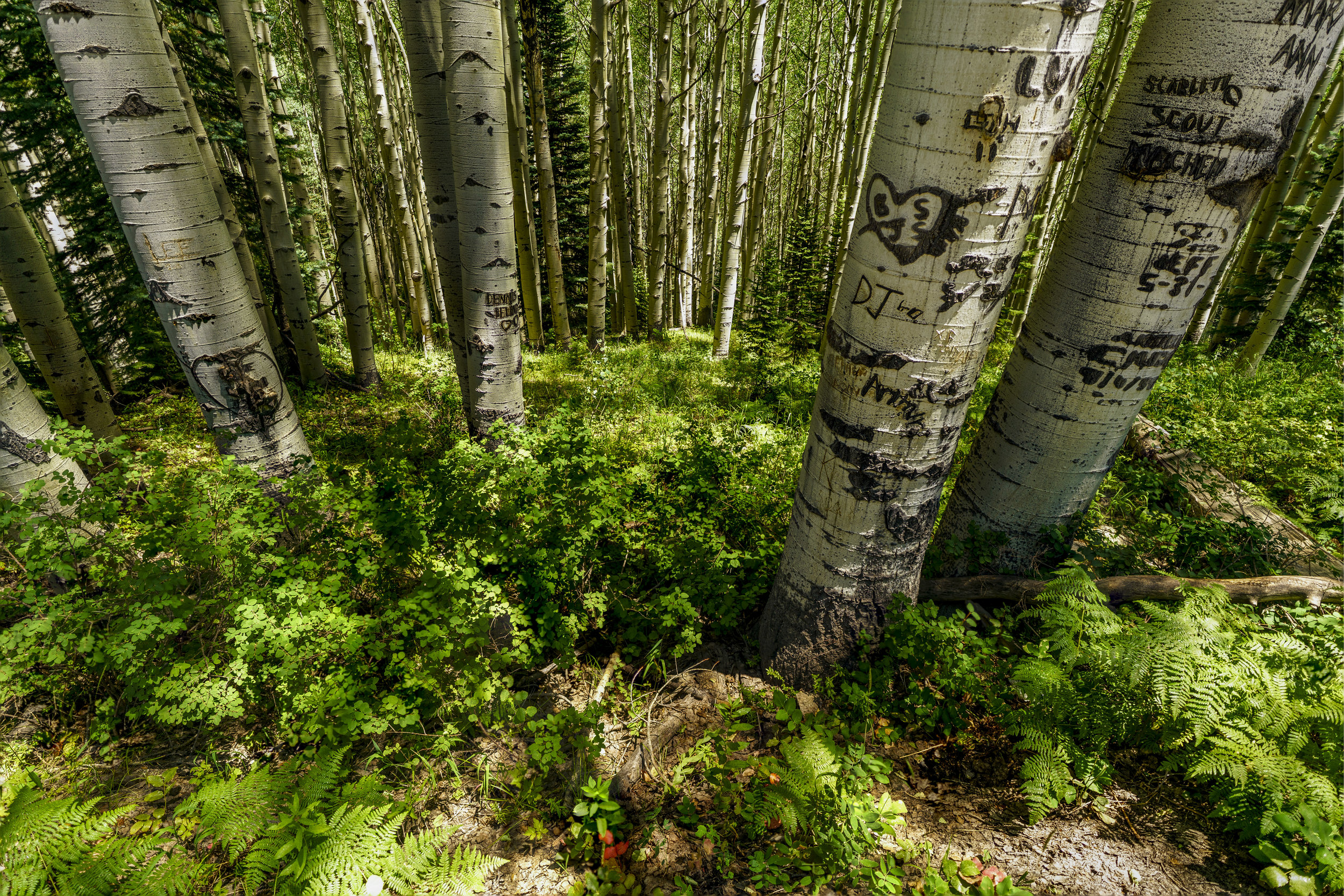
Reshooting one of my favorite Aspen compositions in the middle of summer.
Sometimes the words are hard to hear.
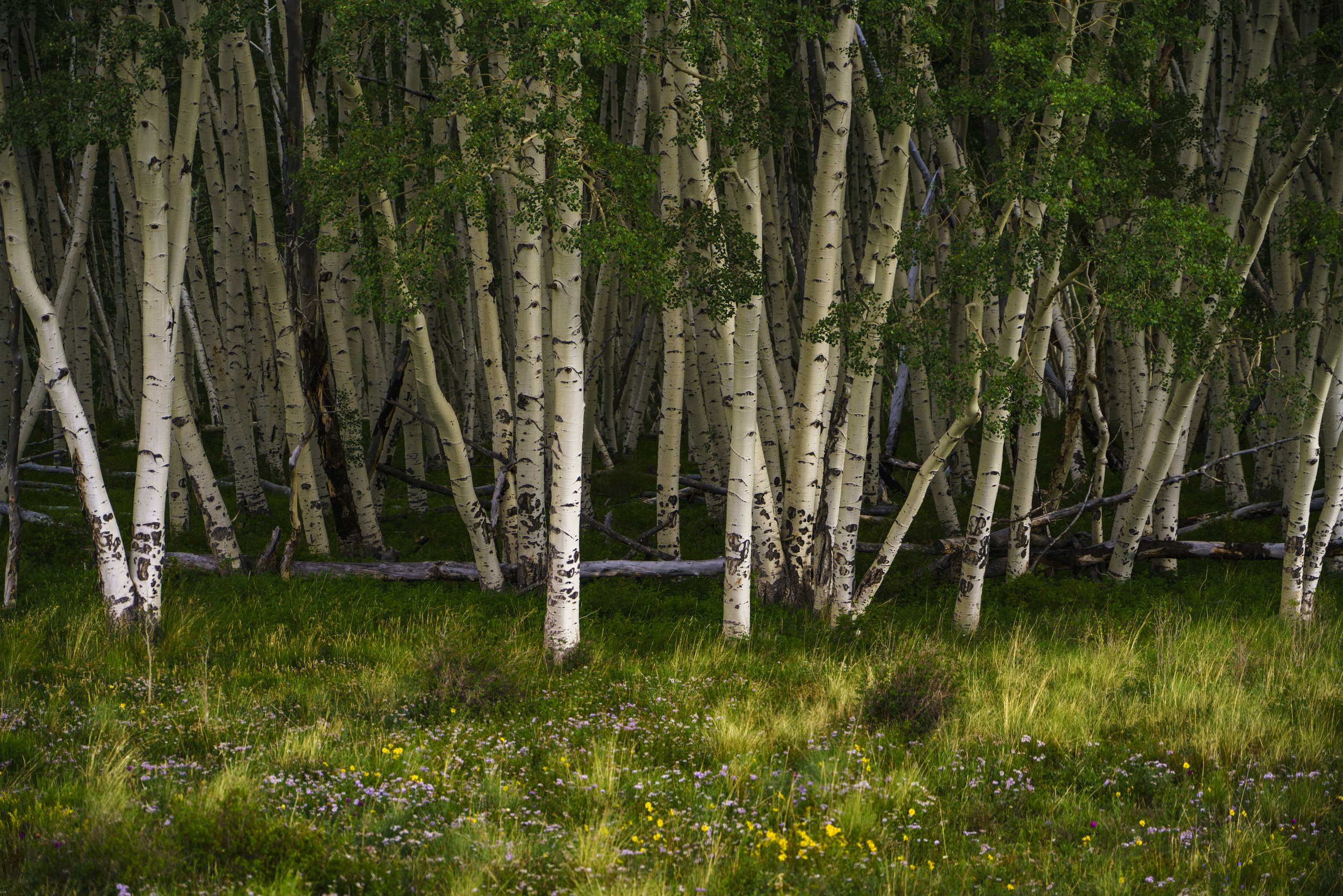
This is one part of Colorado that I have not explored thoroughly in my 30 years of living here; the San Juan Mountains. Bordered in the east by Lake City, the south by Durango, and in the north by Telluride and Ouray, this is the region of Colorado referred to as “the Alps of America!” And if holds this title well. A legendary place for skiing, backcountry expeditions’ and four-wheel trails, it is remote, rugged, and rarely to you rejuvenating.
This stand of Aspen is found on the Last Dollar Road, west of Ridgway. Many great Western movies have been filmed near here, including the original True Grit, and most recently The Hateful 8.
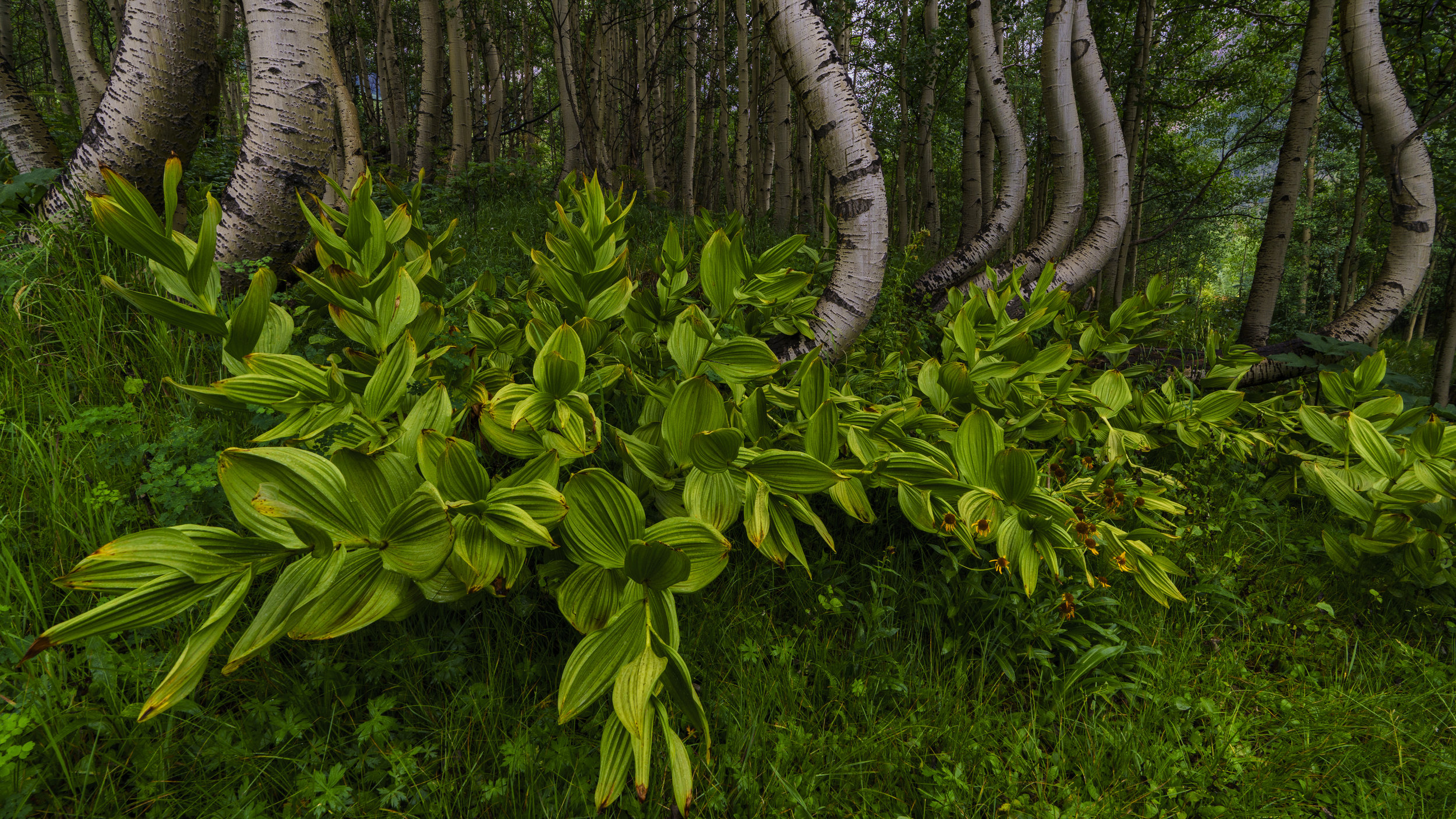
This is one part of Colorado that I have not explored thoroughly in my 30 years of living here; the San Juan Mountains. Bordered in the east by Lake City, the south by Durango, and in the north by Telluride and Ouray, this is the region of Colorado referred to as “the Alps of America!” And if holds this title well. A legendary place for skiing, backcountry expeditions’ and four-wheel trails, it is remote, rugged, and rarely to you rejuvenating.
I don’t know what contorted these trees, I just know that Dr. Suess saw something that the rest of us didn’t
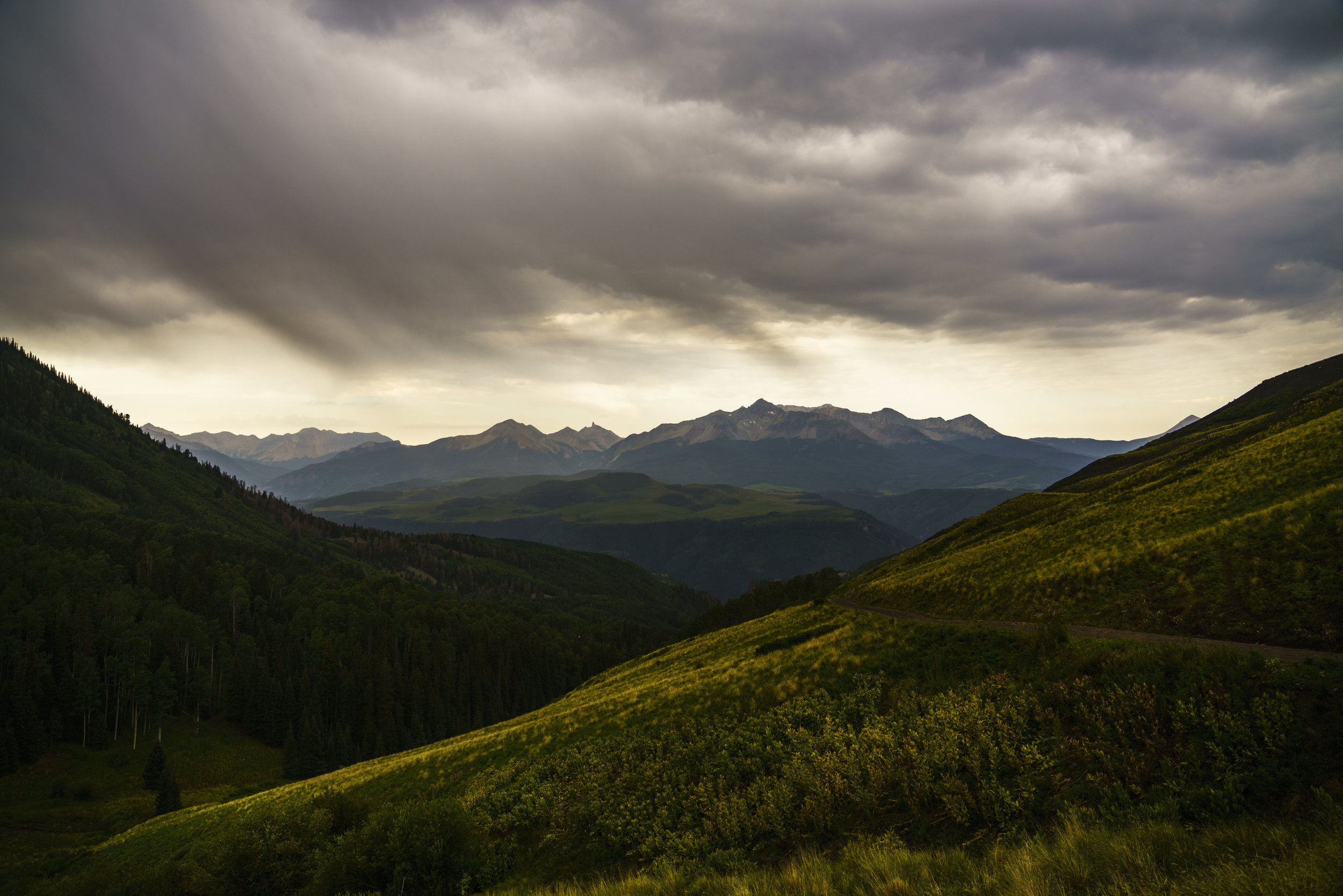
This is one part of Colorado that I have not explored thoroughly in my 30 years of living here; the San Juan Mountains. Bordered in the east by Lake City, the south by Durango, and in the north by Telluride and Ouray, this is the region of Colorado referred to as “the Alps of America!” And it holds this title well. A legendary place for skiing, backcountry expeditions’ and four-wheel trails; it is remote, rugged, and a rarity in it’s ability to rejuvenate.
The Wilson Massif, which contains three distinct 14’ers: Mt. Wilson, Wilson Peak, and El Diente, has provided strange solace for me. I hiked into the basin with two close friends not long after my divorce when my heart and mind were a world of constant torment, and not many months later I met the most amazing individual who, under the shadow of the massif, helped me realize that my heart might not always stay broken.
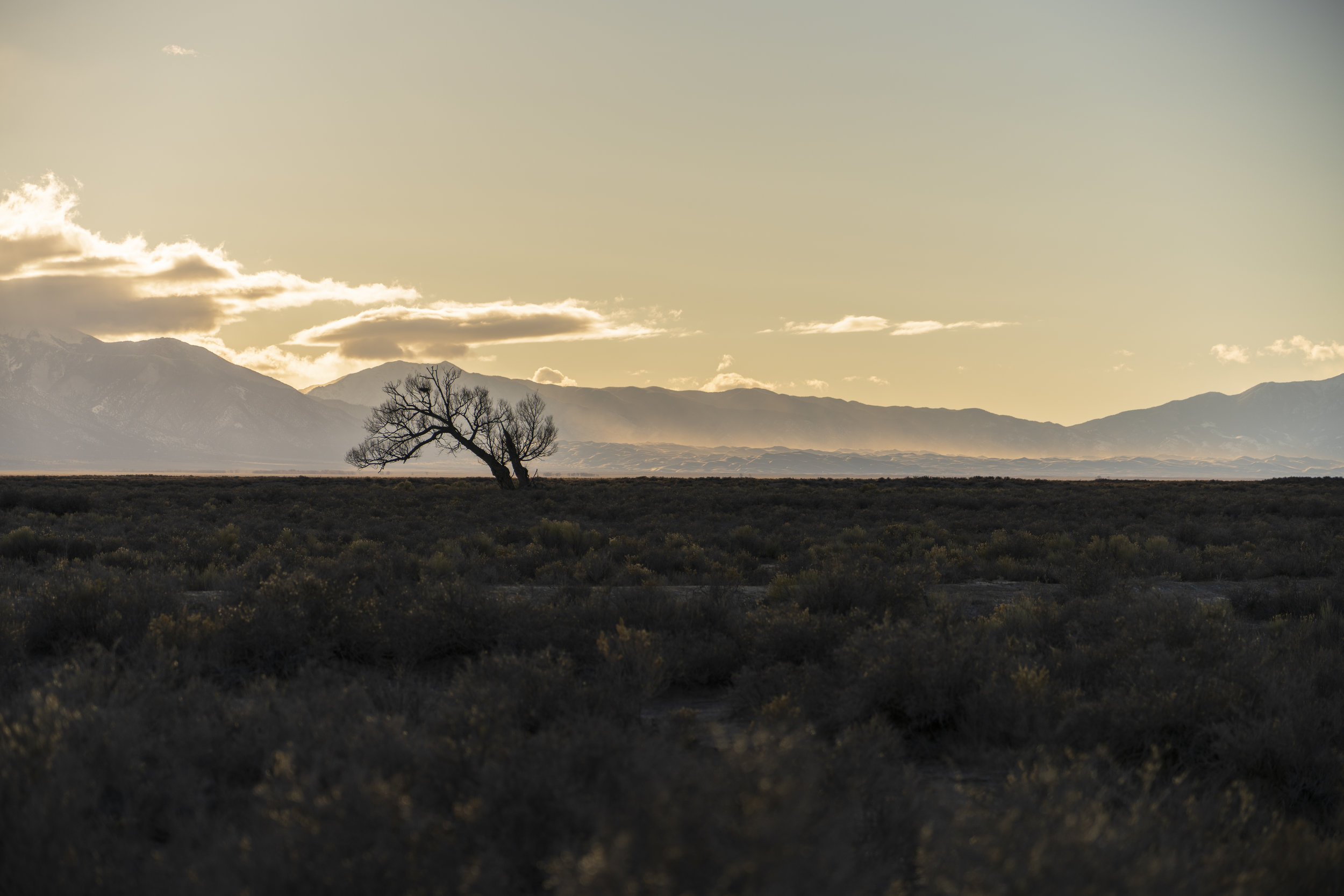
The lone vigil must be either a desperate act, or a holy salvation. The grander image often eclipses you, but you nonetheless hold your ground.
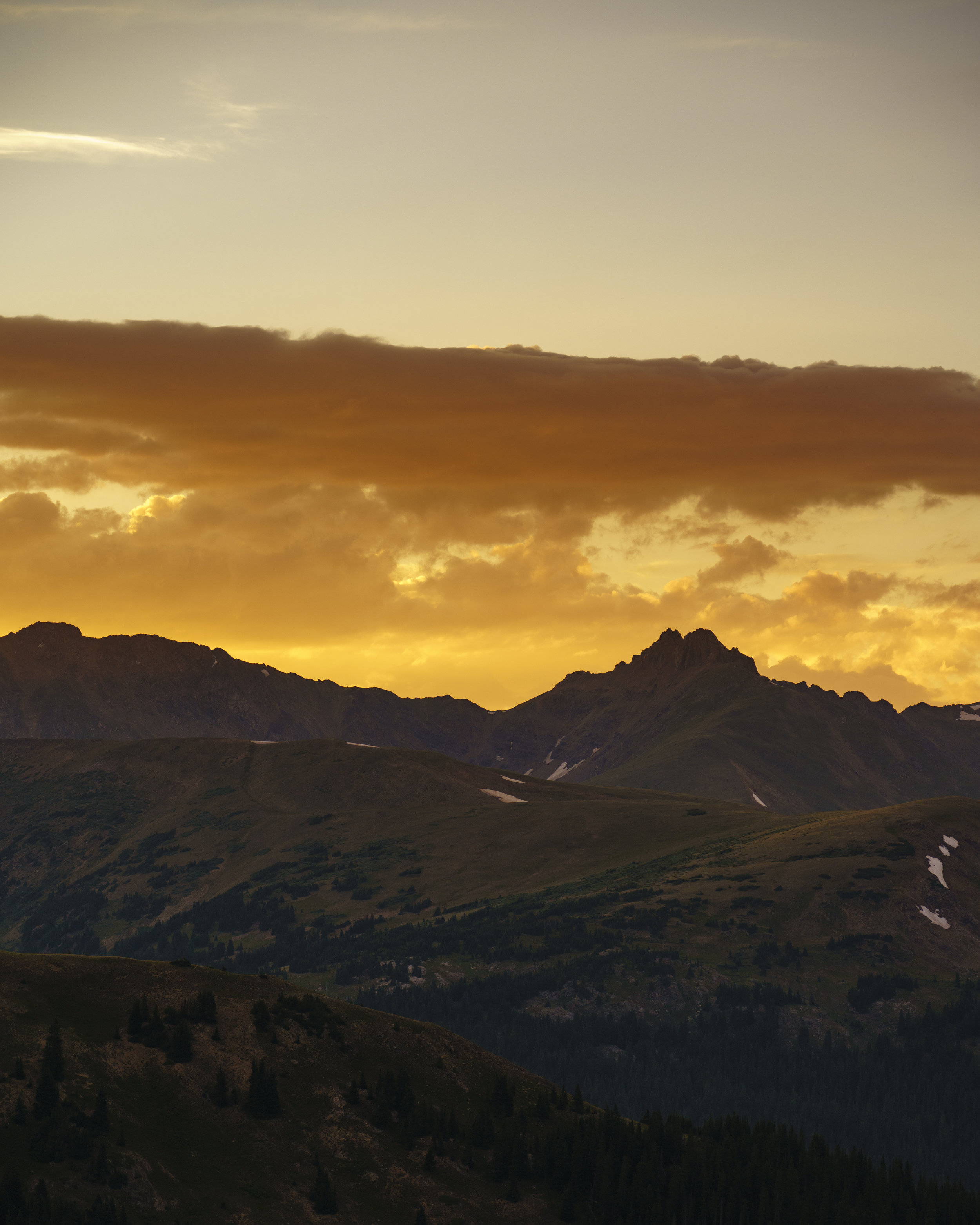
Summer is on the the other side now, and changes are ahead.
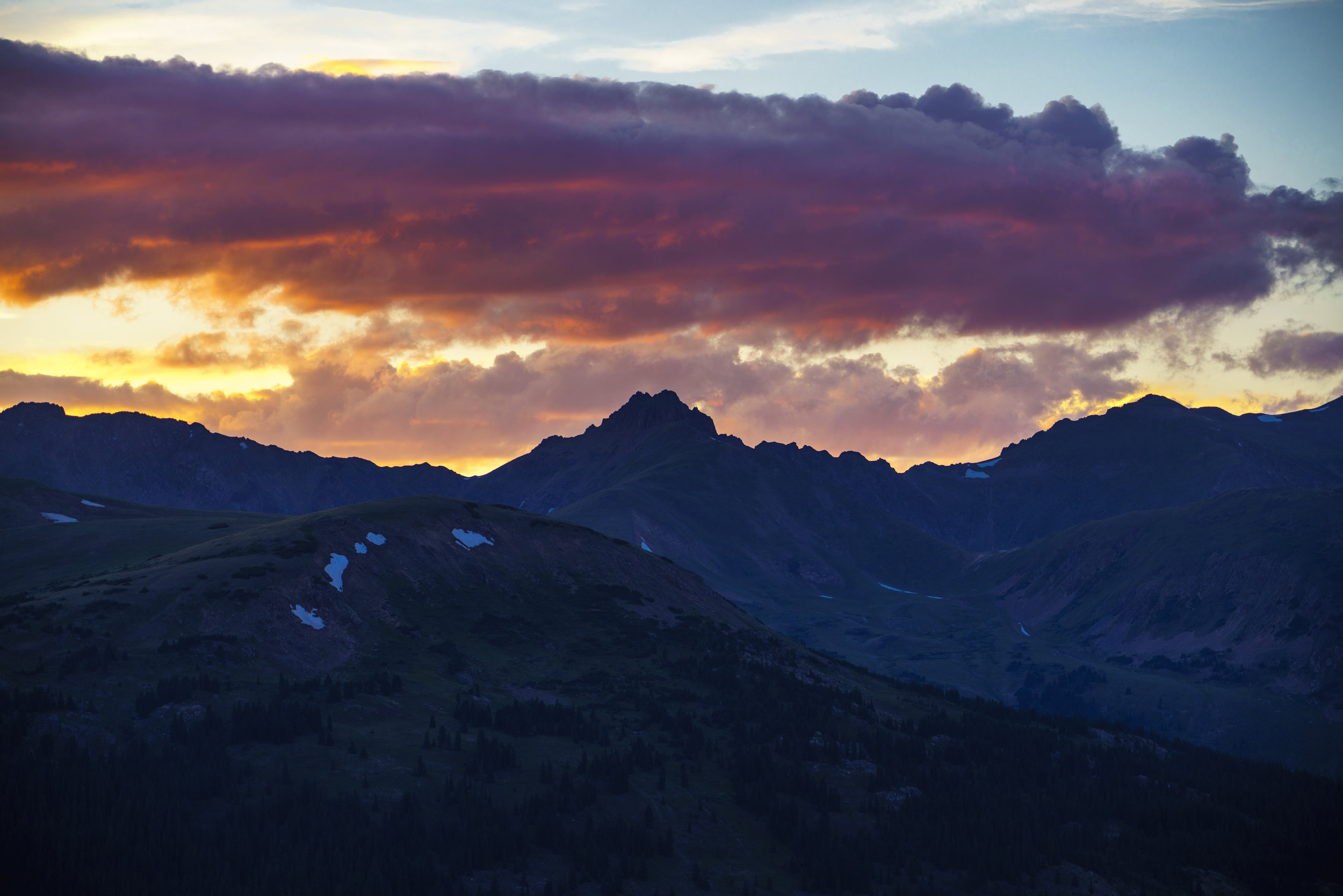
One of the genuine joys I’ve come to know because of photography is the changing light. I’ve had more and more experiences when not giving up, waiting for one more change, brought even more brilliance to an already beautiful scene. This night was another one of those experiences.
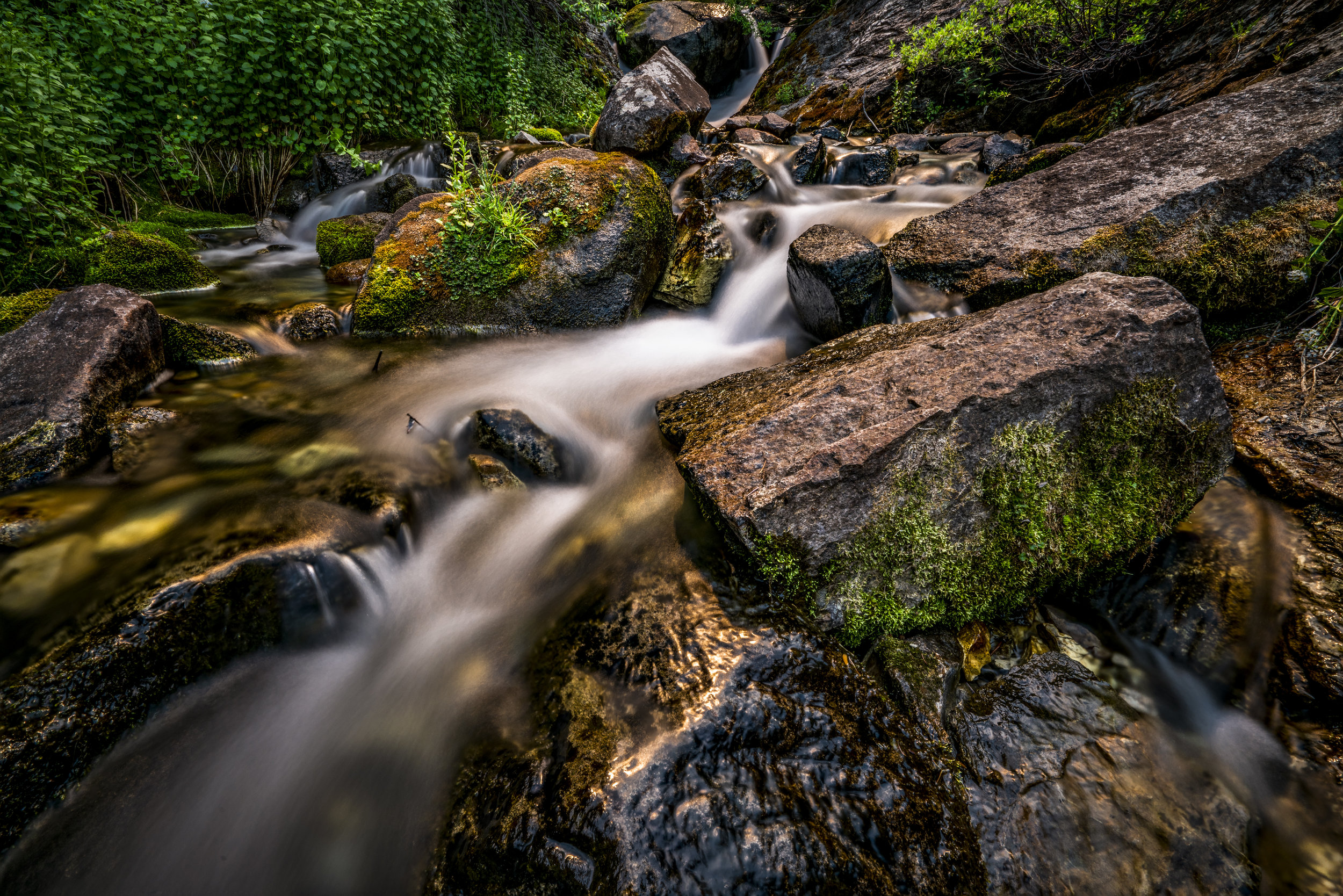
Creating the depth in an image by focus stacking has become a favorite technique for me. Though it takes more time to create, both shooting and in editing, it does slow me down, it does allow me to breathe more, it does allow the time to linger.
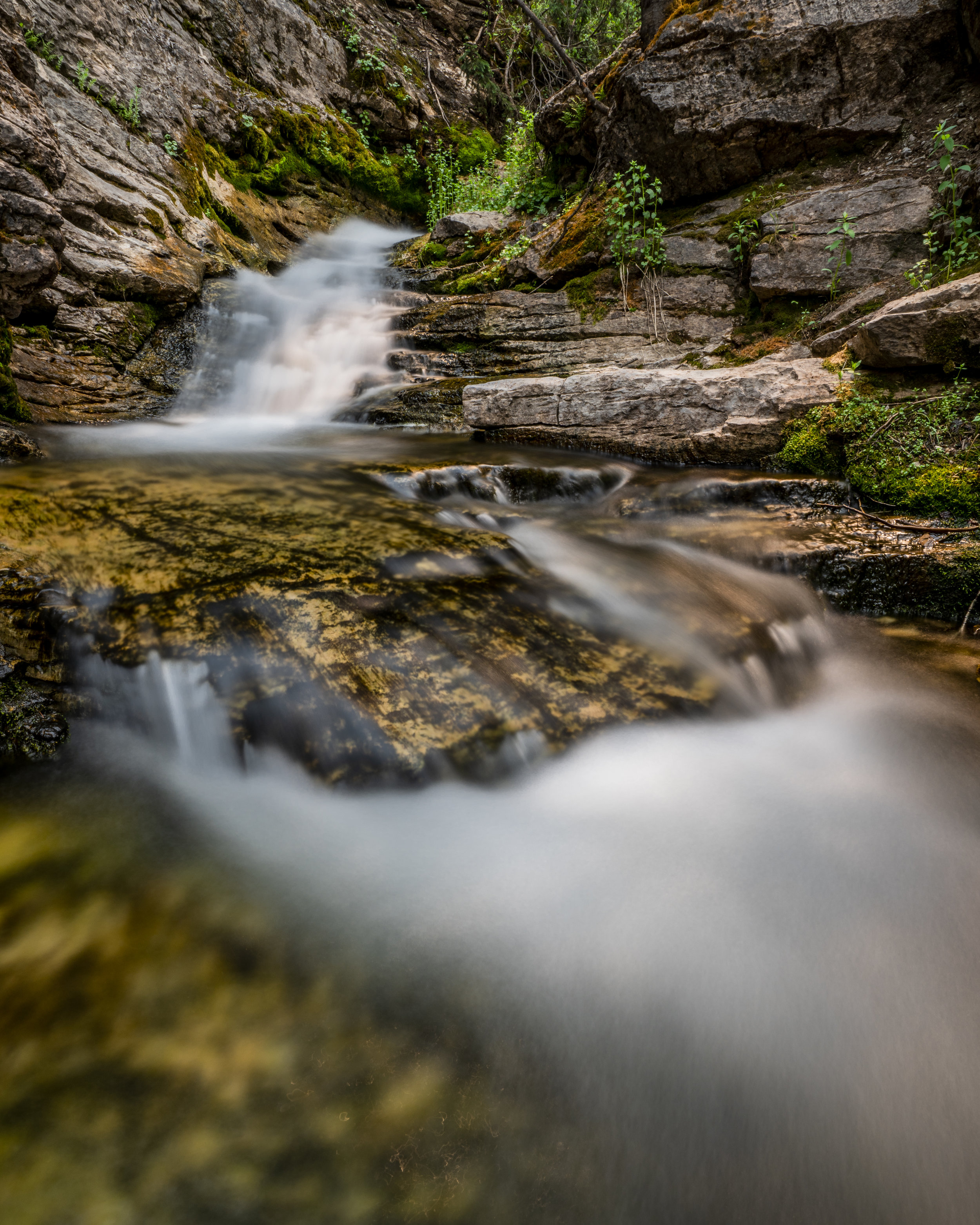
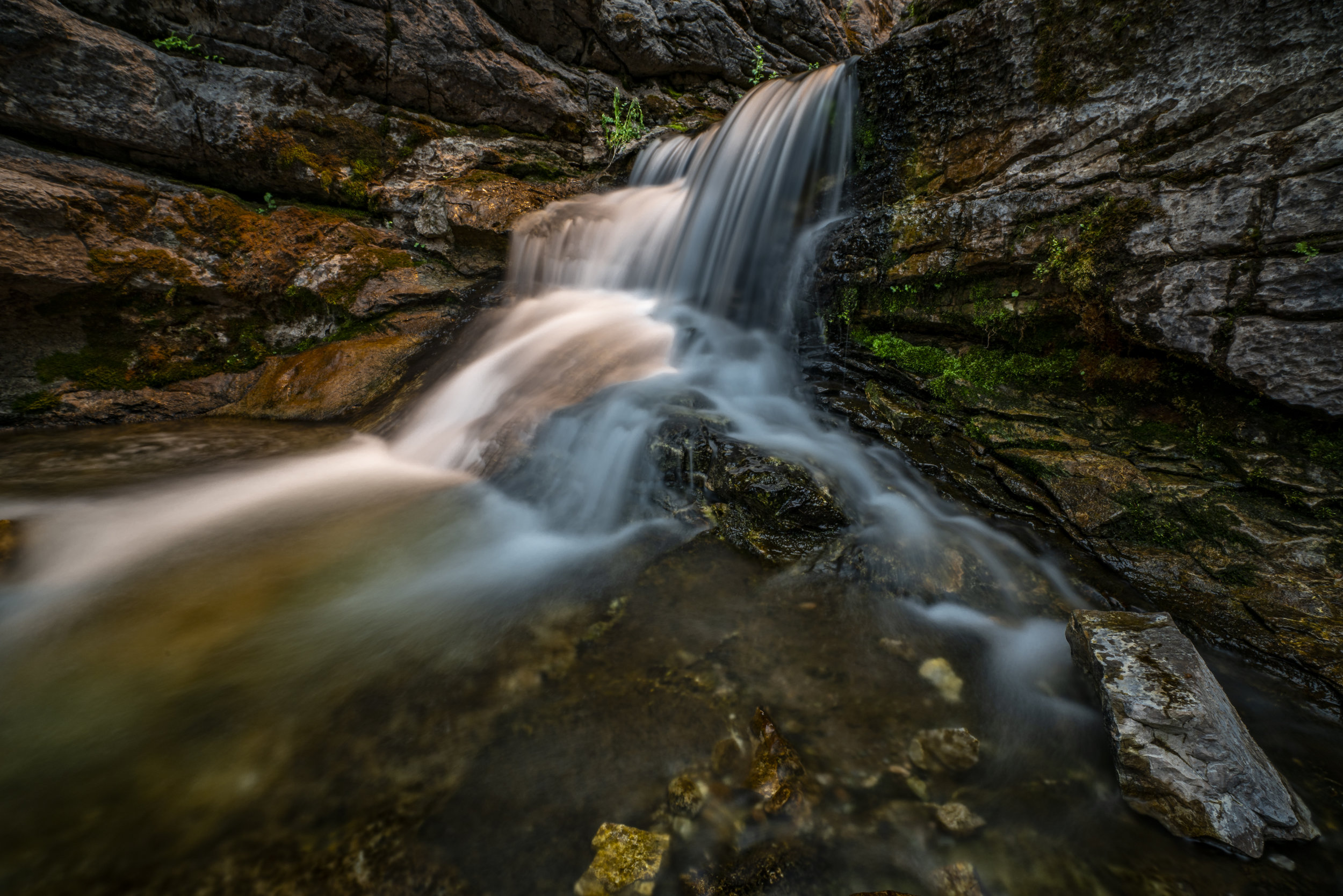
The fires of early summer throughout the state highlighted the tensions of the West: we are a dry region and we are a beautiful region, people want to be here, but the added pressure of population and declining snowpacks will only make future situations worse.
As a photographer, I can benefit for the diffuse light brought on my smoky conditions, but I’d rather not accept that benefit.
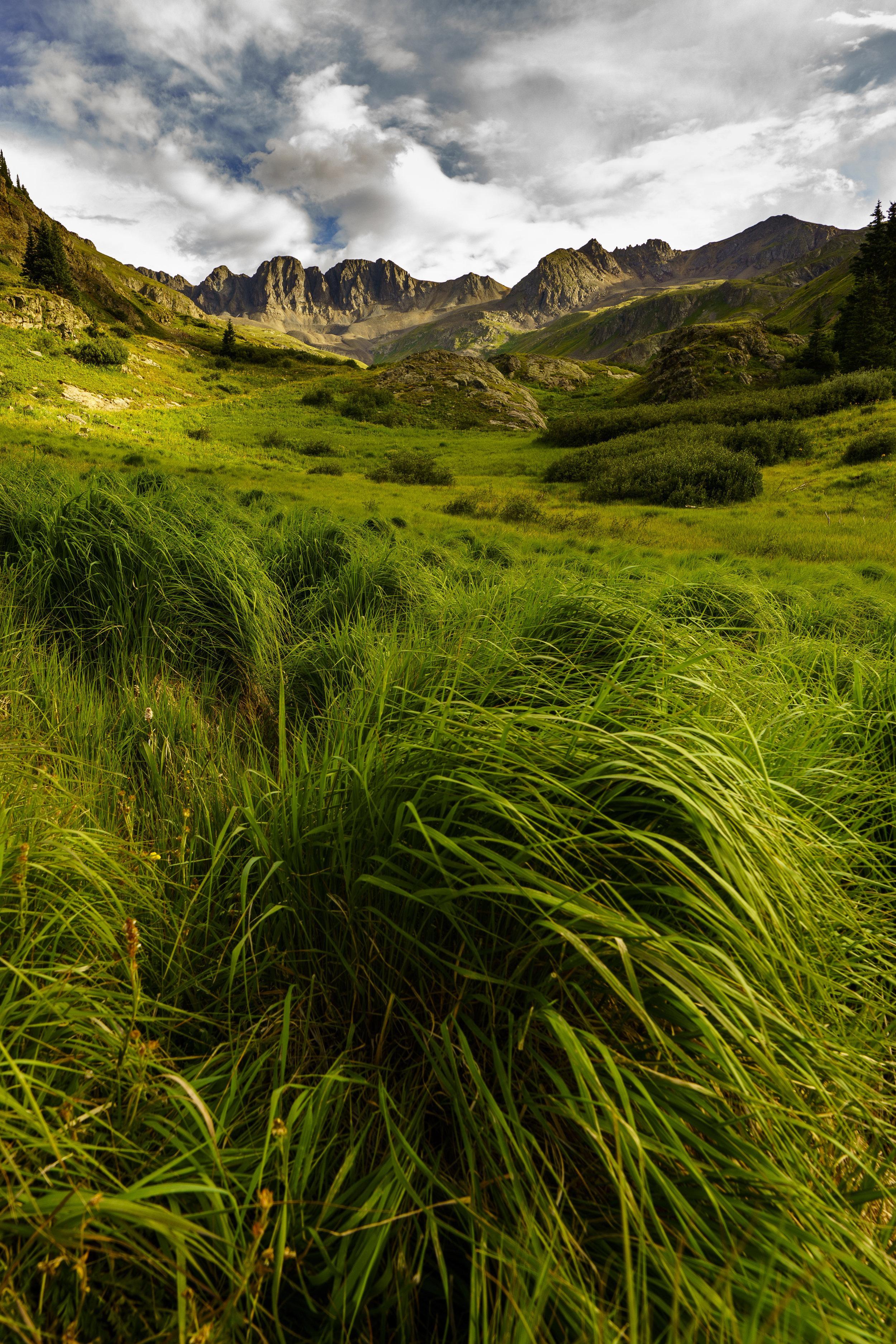
The act of discovery is something I have always relished. This set of images would fall squarely in that category of things that were just “found.” I have only been to the American Basin one other time, but I didn’t even make it out of the lower parking area and so had very little of what to expect. I had a few compositions in find; certain features and elements that I was really hoping to capture, but the shock and surprise of the variety of compositions and the richness of the colors and the heavy volume of water still cascading off of the mountain completely caught me off guard.
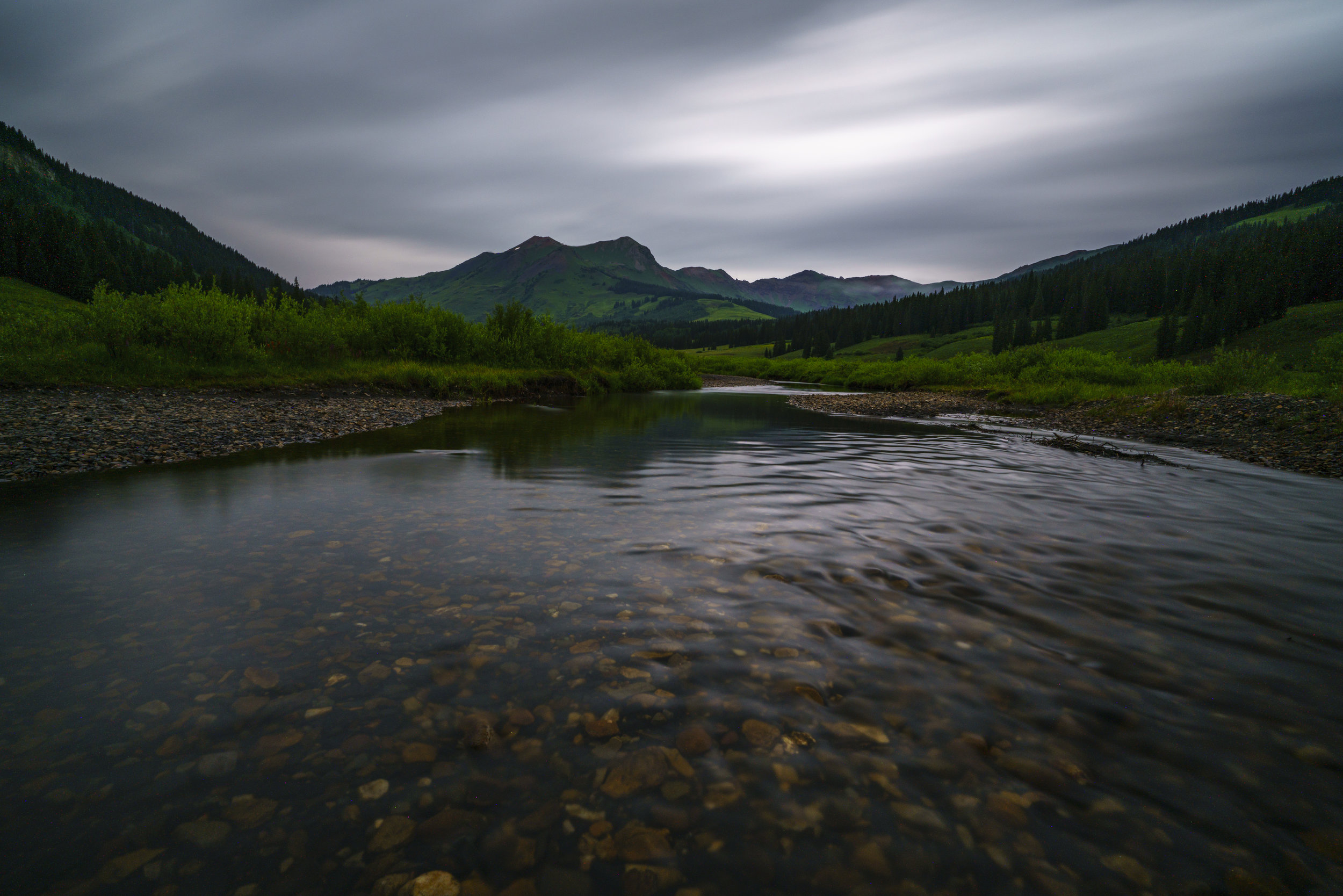
The sky wasn’t cooperating so I needed to be creative. A 10-stop Neutral-Density filter allowed for a longer exposure, giving movement and texture to the sky.
This was a four minute exposure.
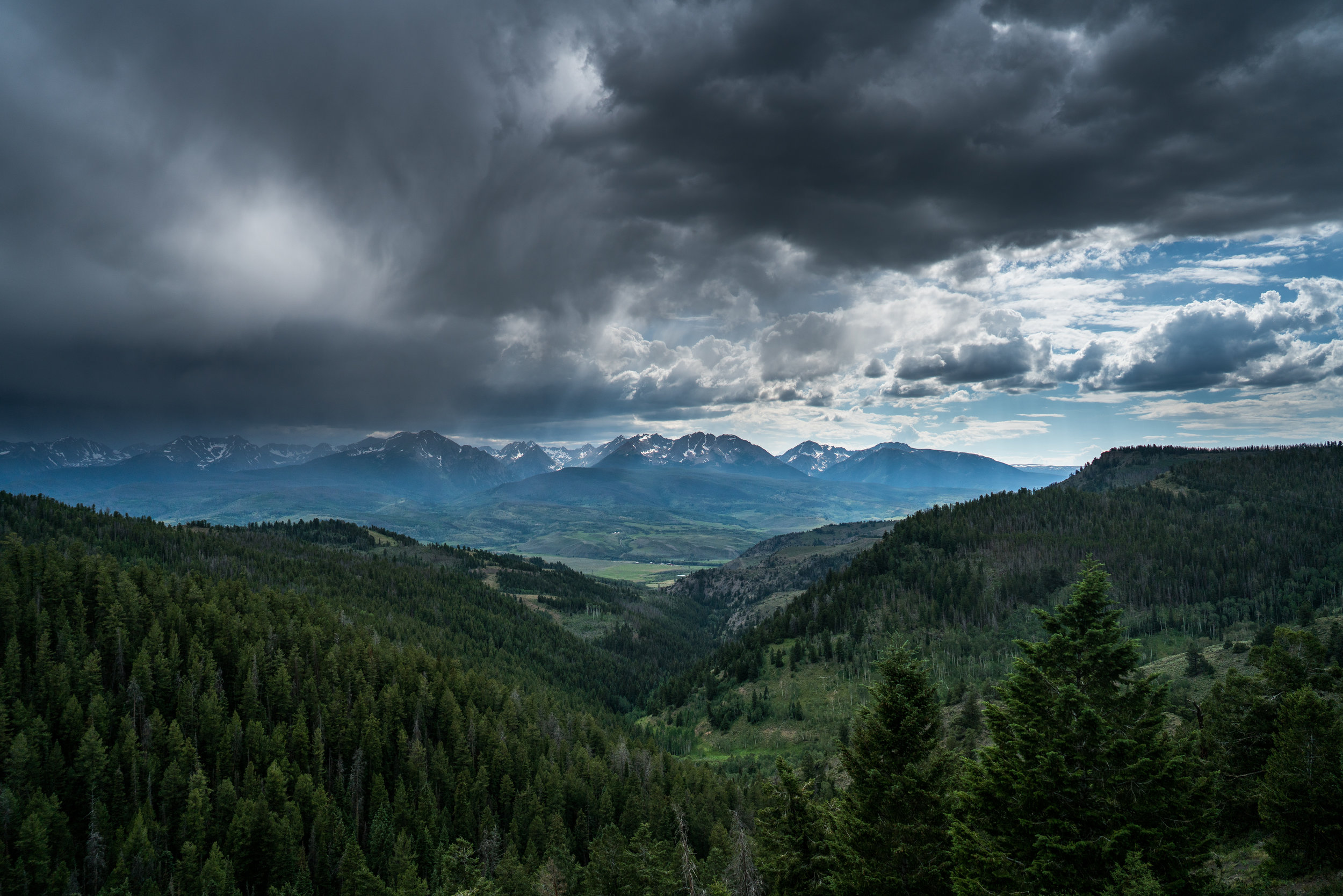
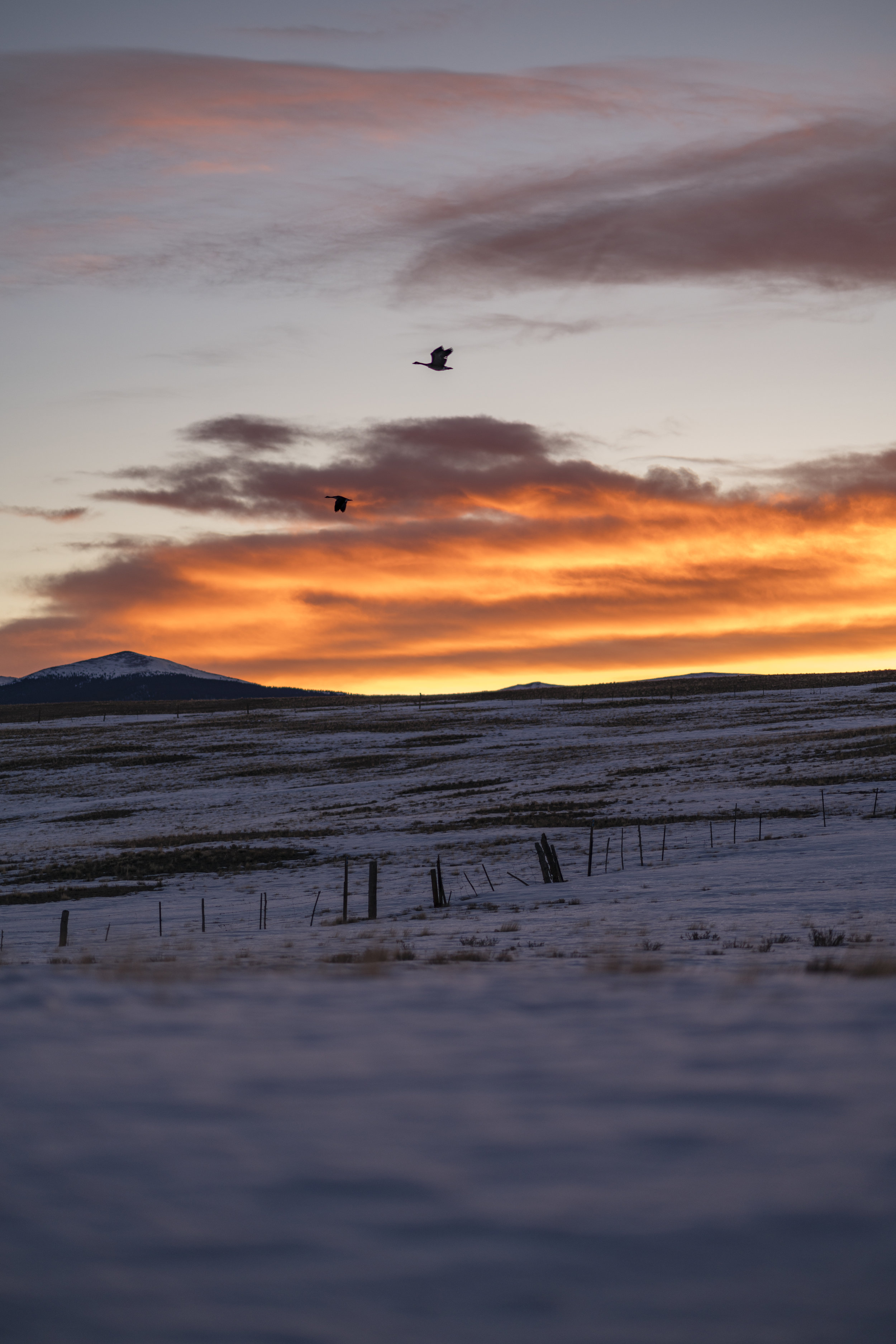
Even the geese seem to know it’s time. We will have our share of snow fall, and snow squalls in the next few months, but it is now early April, and the deep snow is receding and the rivers are filling, the days are longer and warmer, and another season is cycling through.
I was just hoping for the beautiful sunrise, but the geese caught me off guard and flew through the frame as they were making their way across South Park, I decided to keep it that way.

VERB
[WITH OBJECT]
1 Put upside down or in the opposite position, order, or arrangement.
This last twelve months has felt like an inversion. I’ve had the opportunity to show my photography at five different locations, and traveled more in the course of one school year than I think I ever have before, which actually saying quite a lot. As a parent I’ve had to let go even more, as we should, as Andrew and Tanner are taking huge steps in their own lives, and professionally, my teaching career took off in a completely new direction, and though exhausting, it feels like there’s a lot is left to do.
But, I am drained. I might take some time off from the camera, and try not to worry about it. Two years ago, I’d never have imagined what I might accomplish, and for that I am so, so grateful.
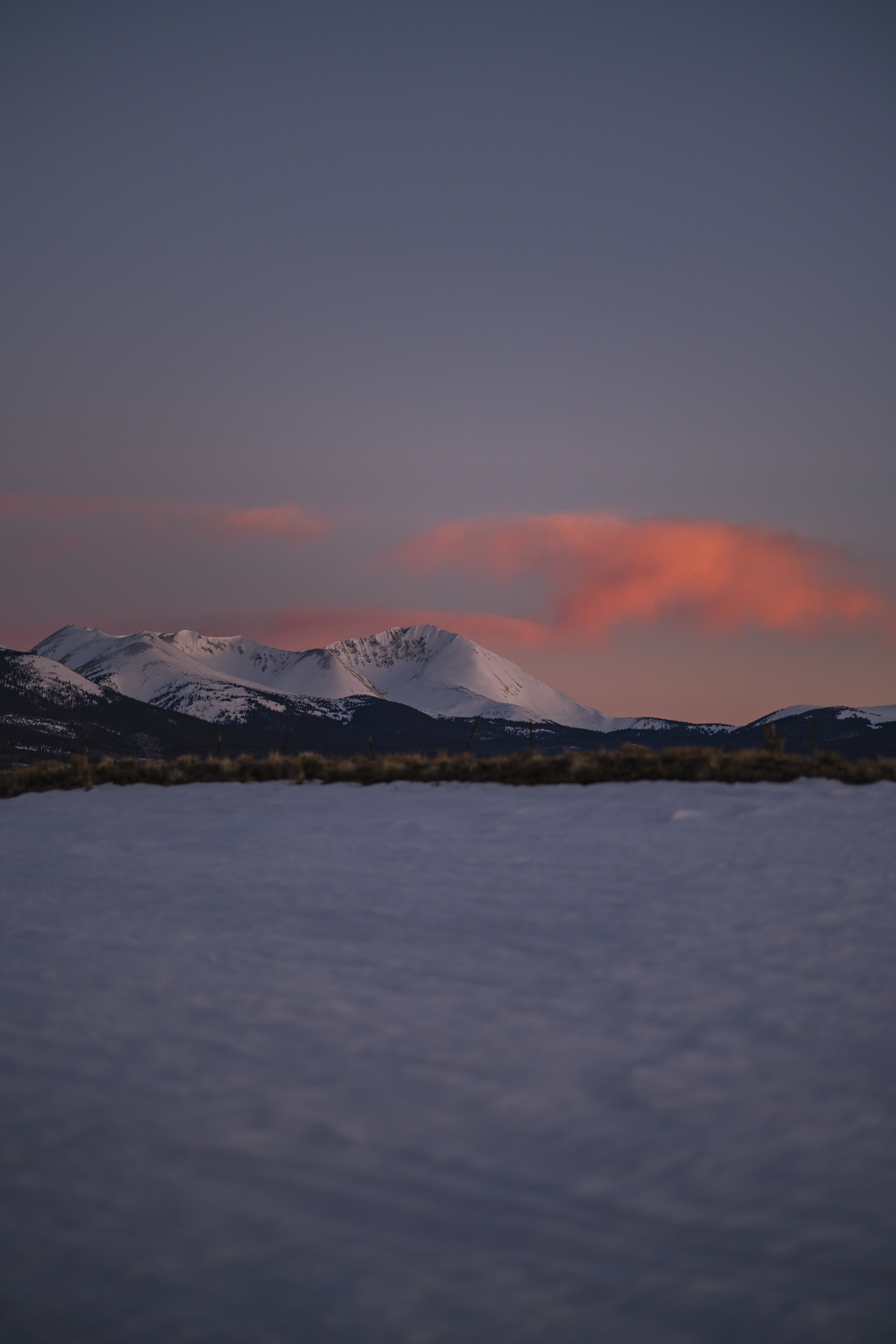
Our sunrises do light up… Mt. Guyot stands as a sentinel of South Park. With Georgia Pass on its east flank, the rises steadily on its left shoulder, a sheer and straight climb. I still need to summit it, I want to know its views.
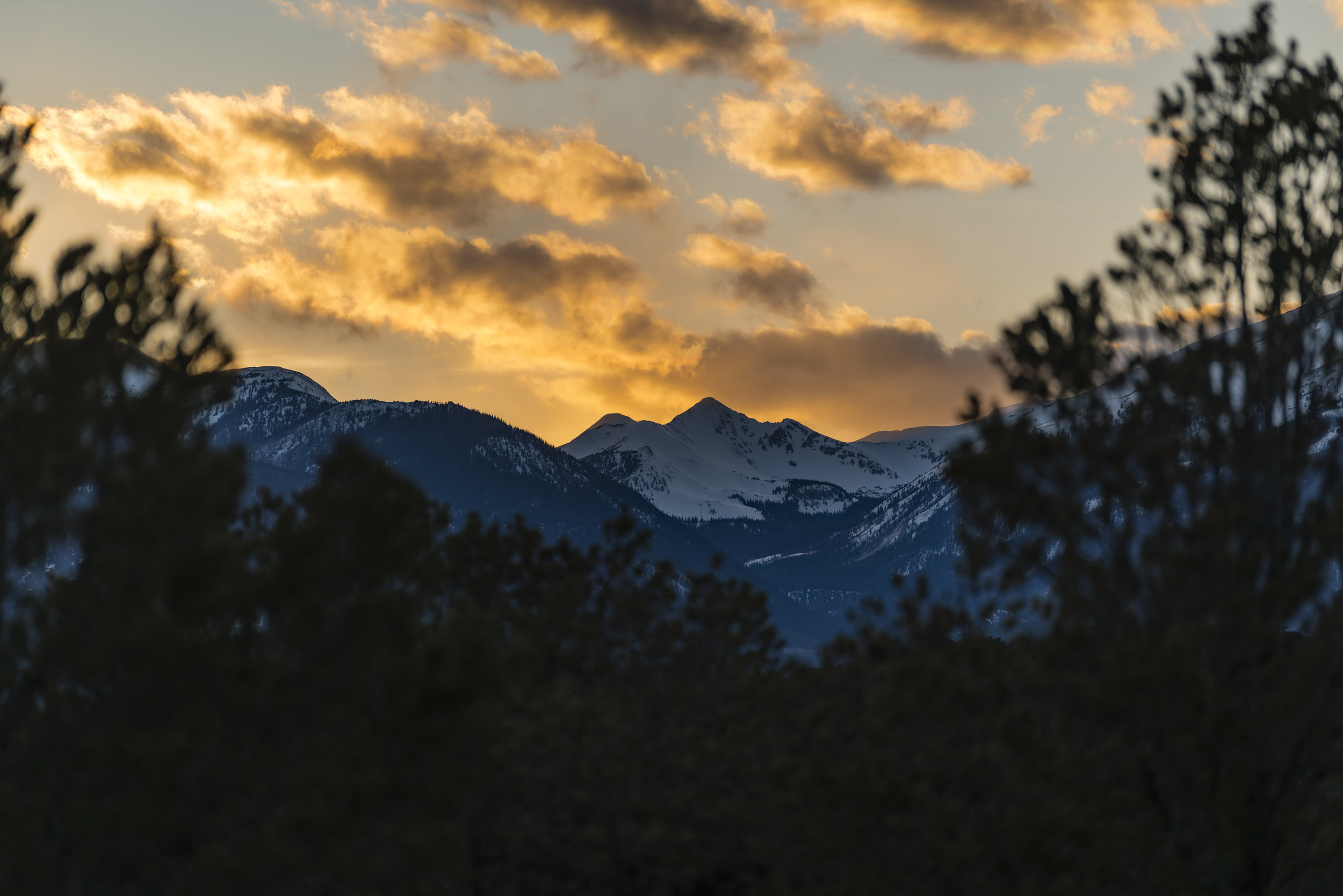
The Collegiate Peaks run through the central part of the Rocky Mountains, forming the long, western boundary of the Arkansas Valley. In all, there are 12 of Colorado’s infamous 14’ers in this range, and the most easily recognized peak would be Mt. Princeton, which towers over the valley and the town of Buena Vista. But this is Yale, nestled further west than any of the other peaks, and it offers some of this best 360 degree views of any peak the range.
This image, taken from just above Buena Vista seems to capture an intimacy that isn’t always present with these mountains. They are demanding to climb, and have taken many lives.
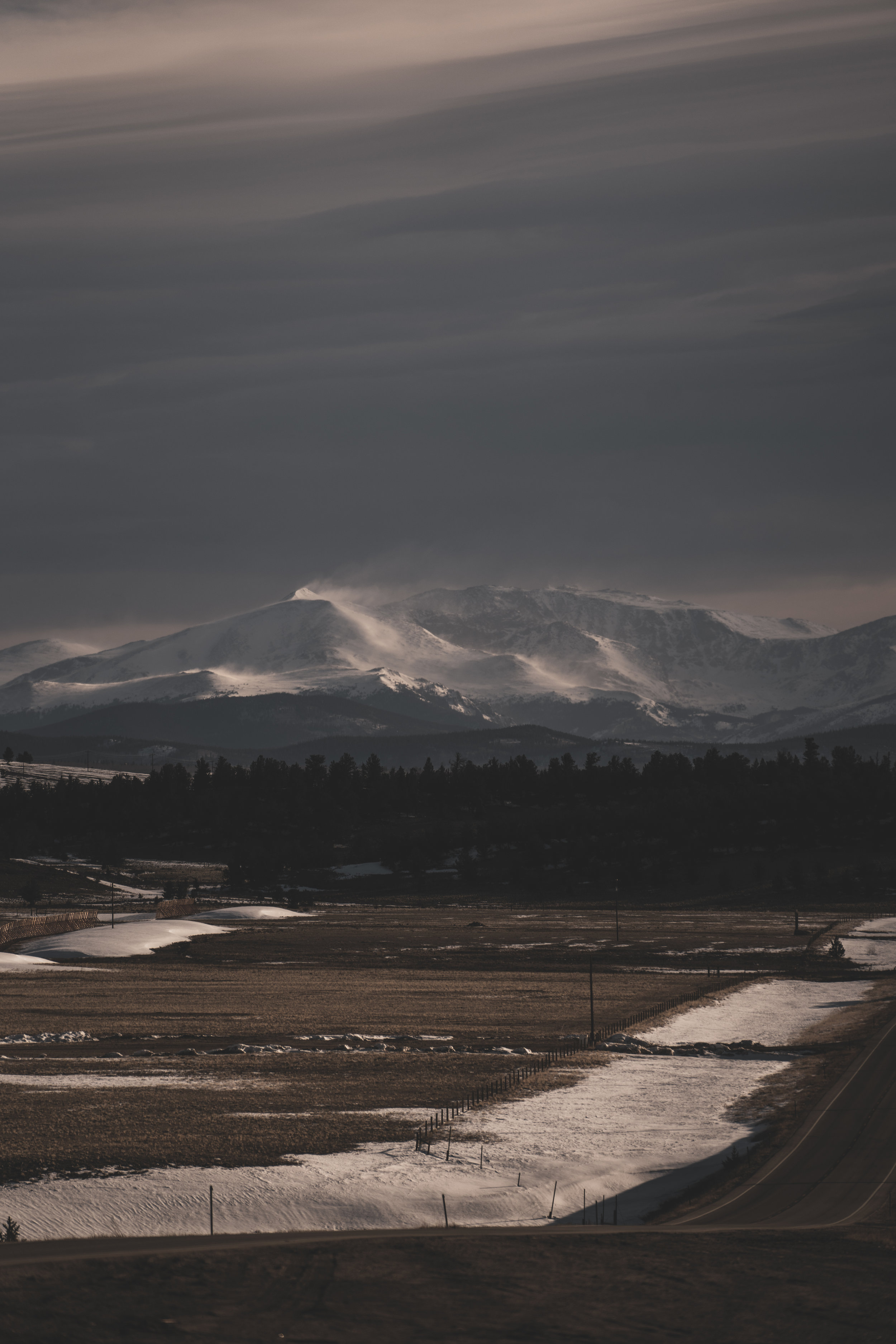
Not my usual editing practice, but this preset seemed to do the scene justice. Shot at 200mm to give scale, the mood is heightened by the red and amber hues.
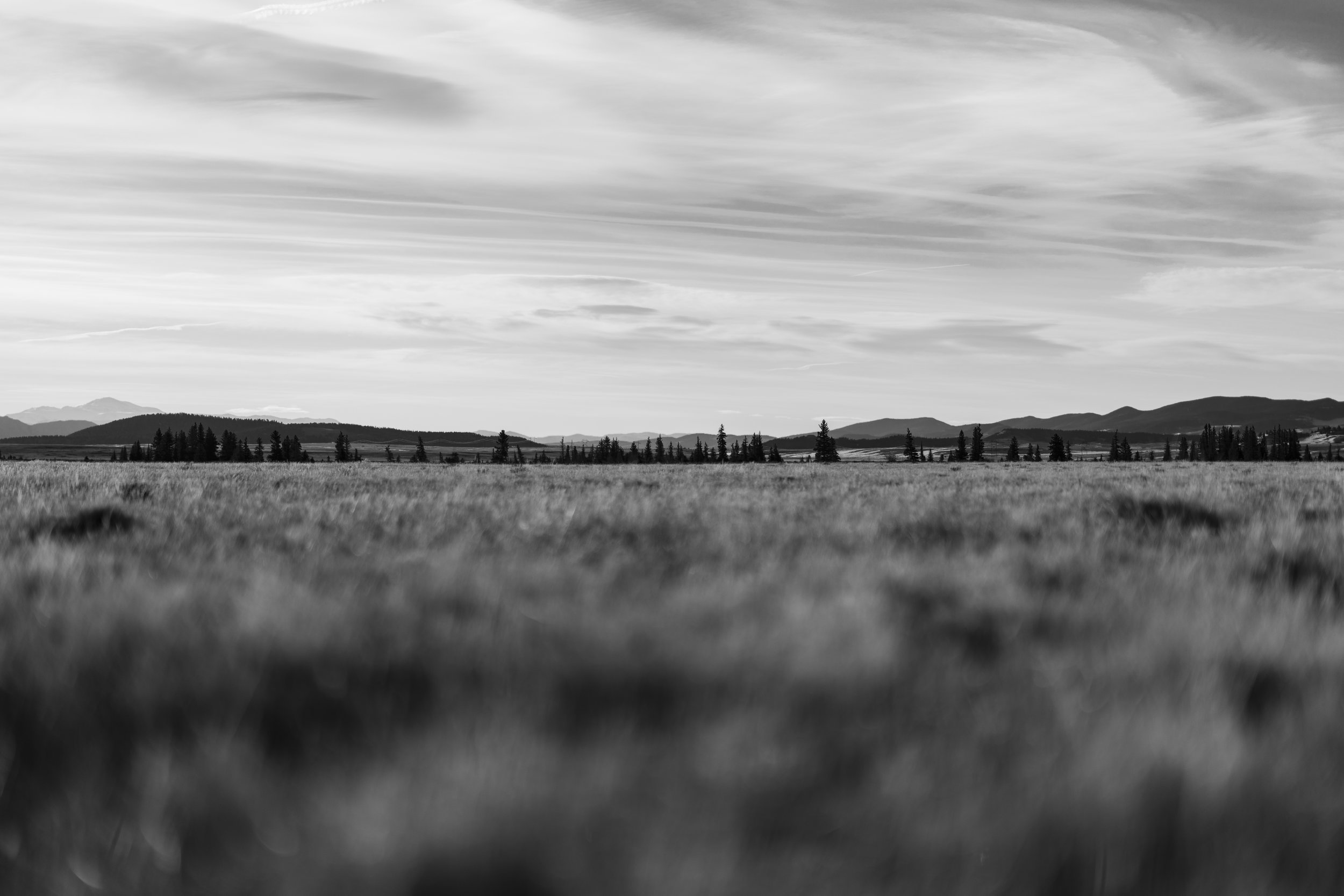
I’m sure I have a better composition in this grove, I’m hoping for fog, and the rising sun to backlight it. But for not, the contrast works.
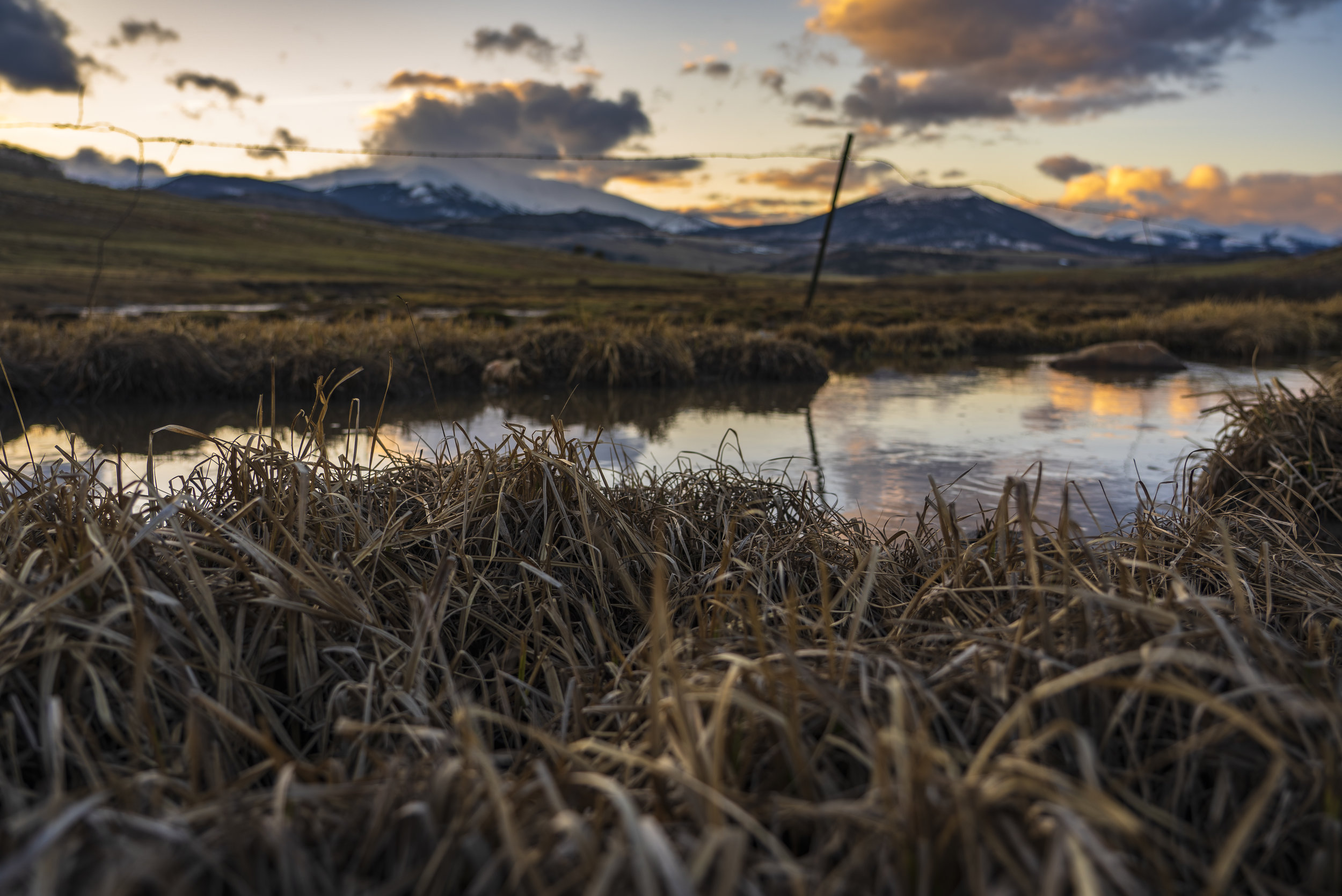
To try to convince ourselves of what is real and what isn’t we seem to need to let ourselves be emptied at some point. I don’t know why this is for me, but in some way the deprivation brings in more life.
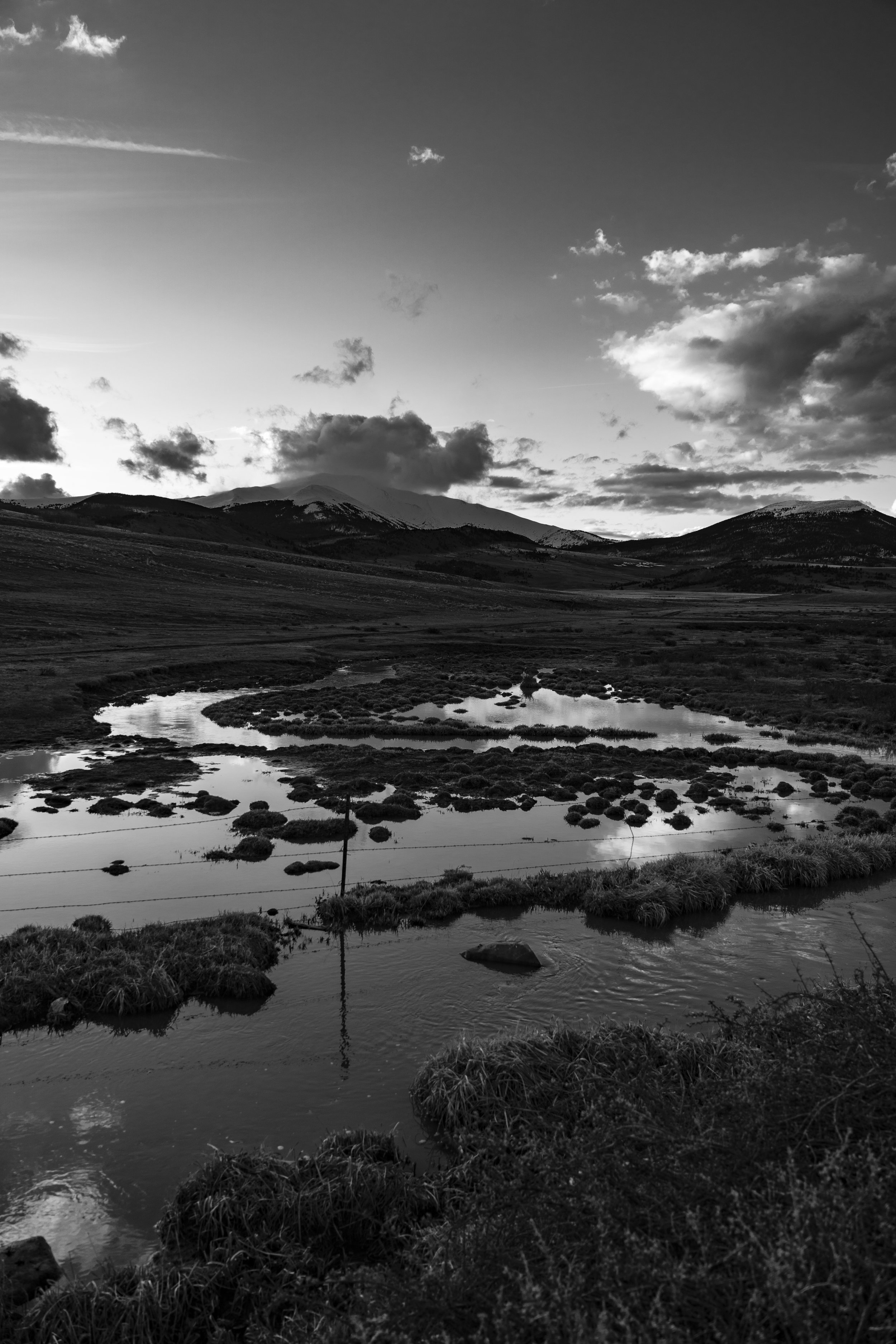
Different colors…
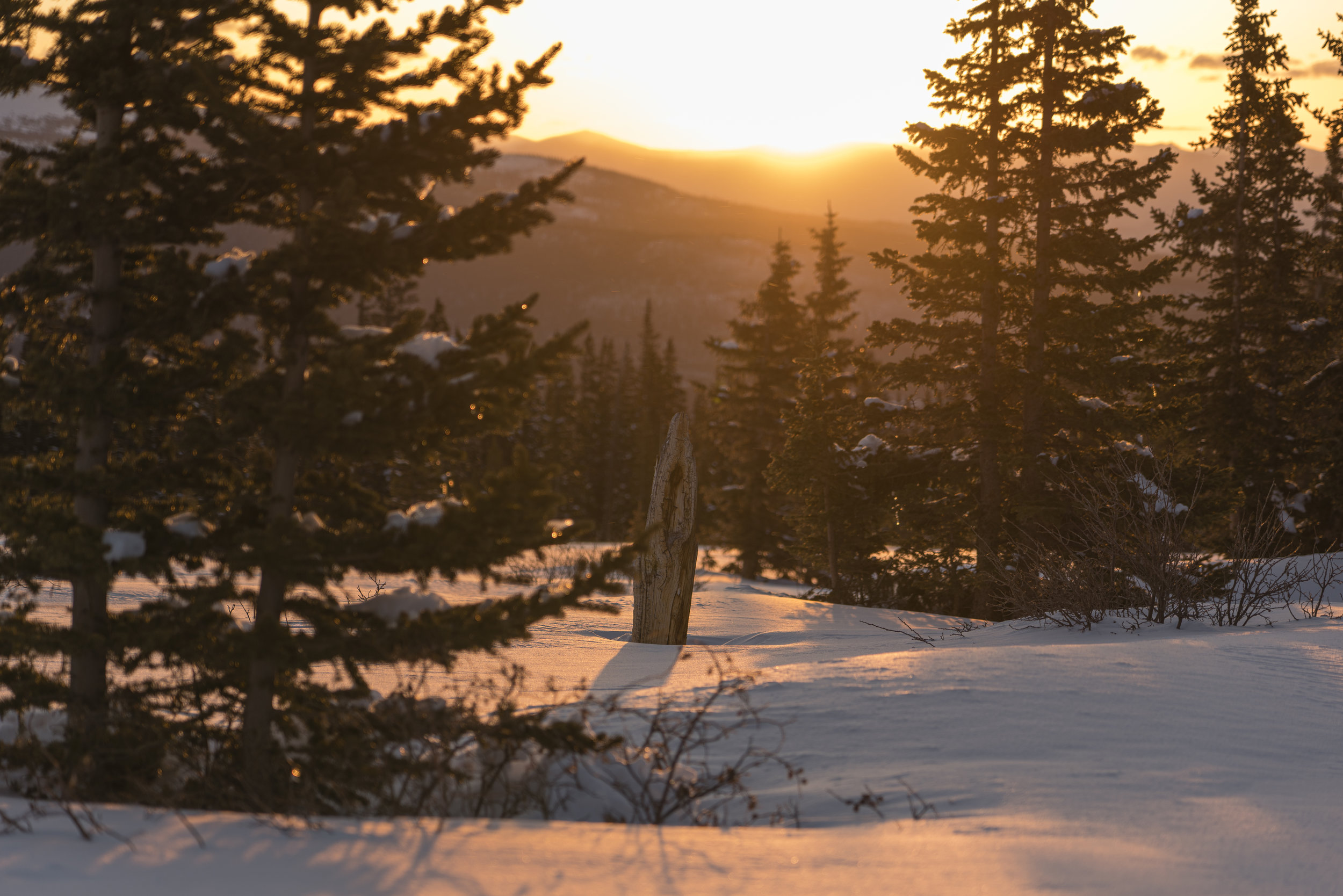
The transition, flowers will be coming on soon. But, I’ll miss winter, the snow and it’s infinite guises, how it can mask the imperfections of the world.
I have been hiking up and down this portion of Pennsylvania Mountain most of this winter. I have been in search of the night sky, on most of these trips, but I hate to waste a good sunrise or good sunset opportunity, and I’ve been graced with my fair share of each recently.

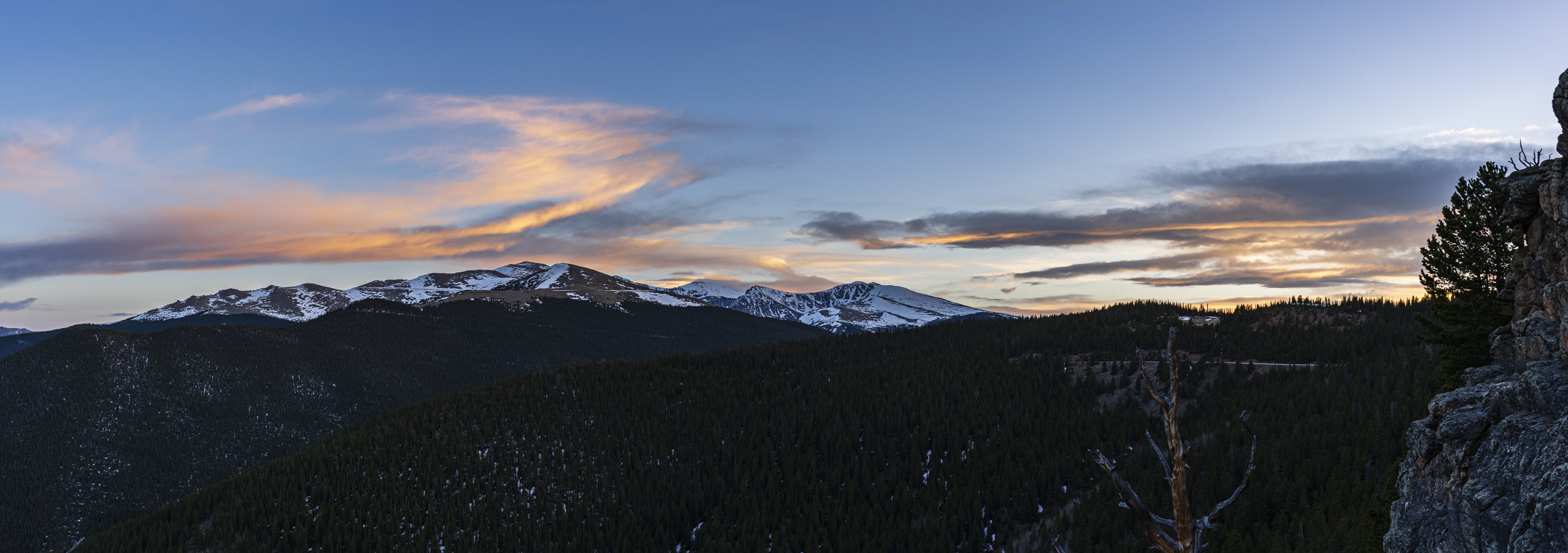
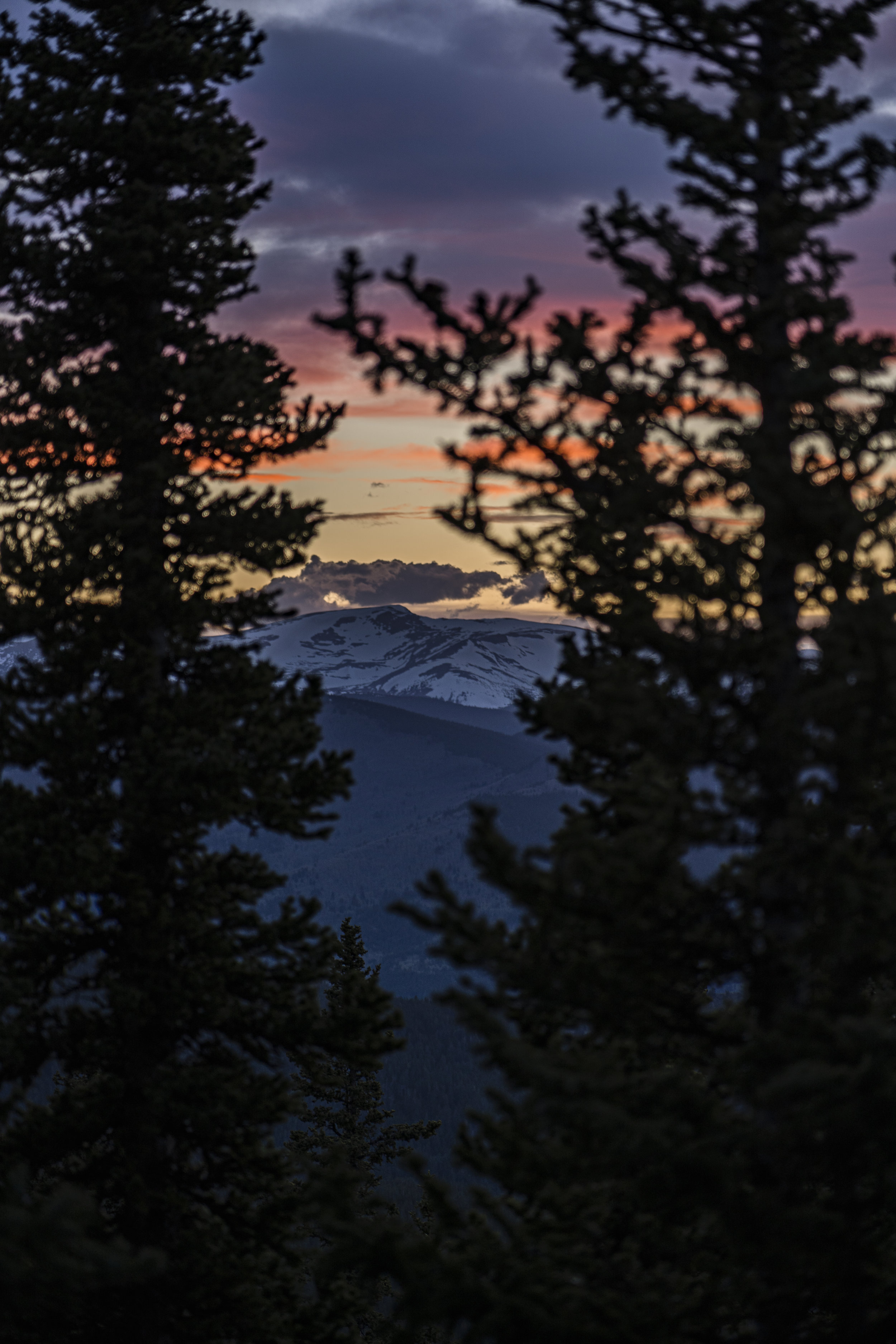
I scrambled around. I’d hiked to the fire tower, than back down to my usual spots. I wasn’t patient though. I’ve experienced time, and time again, that the best sunsets are the late ones. The light always shows up. I just keep forgetting. I wish I wouldn’t, but I just do.
This image is soft. The focus is off. I wanted to far ridge and the clouds sharp, but they aren’t. They are soft. But that color, that framing, I can’t give up on that. Does every image have to be sharp and perfect in order to draw us in? No, it doesn’t. There are other ideas conveyed.

Summer in Colorado… motorcycle tours, fishing, camping, and now photography. Tanner and I took off for a week long tour of the state. I intentionally left most of the camera gear behind, for a couple of reasons. One, it’s time with my son. Sure, a photo or two will show up, but this was more about sharing time with him and giving him a deeper look at his home. Second, it’s the motorcycle, there isn’ that much room to begin with?! So, one body and one lens, the compact camera and a drone (which never did get used.)
So, off to the Schoolhouse in Steamboat, then onto the central Rockies and Western Slope. A loop around the San Miguel River and the town of Gateway, add Telluride and Lizard Head Pass to the mix. Next on to Ouray and Durango via the Million Dollar Highway, and lastly the Silver Thread through Creede and Lake City ending in Crested Butte. I can say there were many, many beautiful sites, but most importantly time spent with one of the best people in my life, my son Tanner.
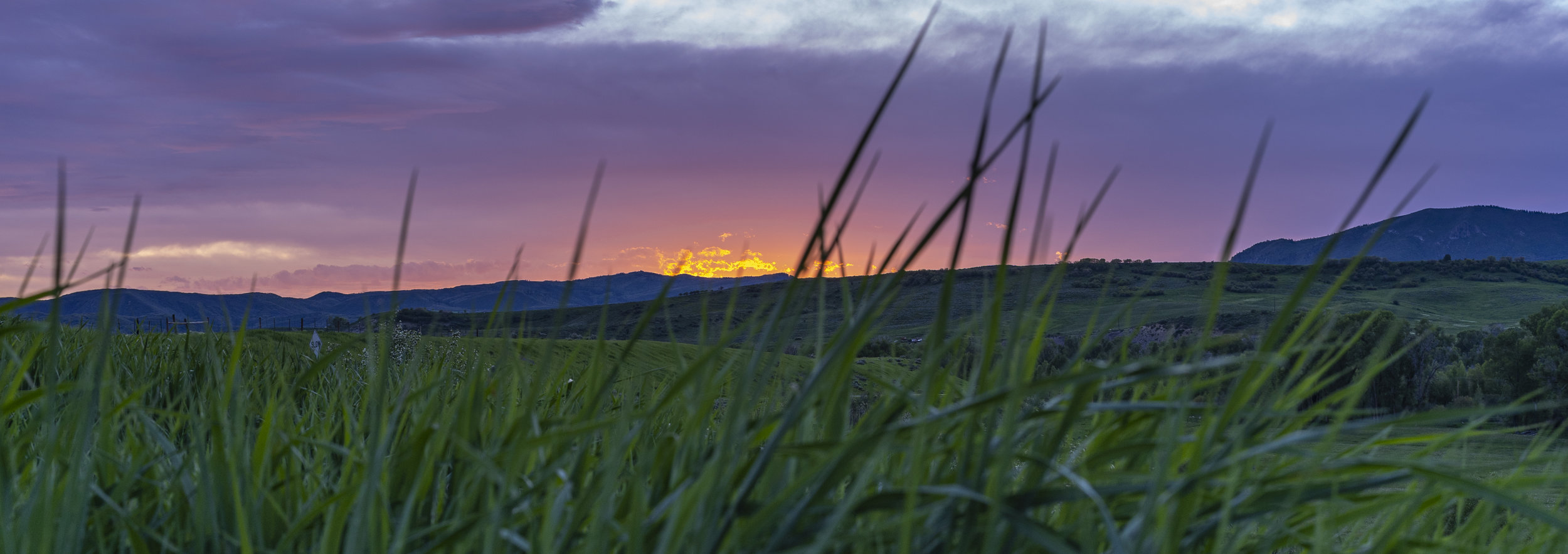
Not the first time the Sleeping Giant has been a part of a composition, but this particular night had a different splendor…

A little corral holds a couple of friendly neighbors. They were kind enough to join me for the sunset.
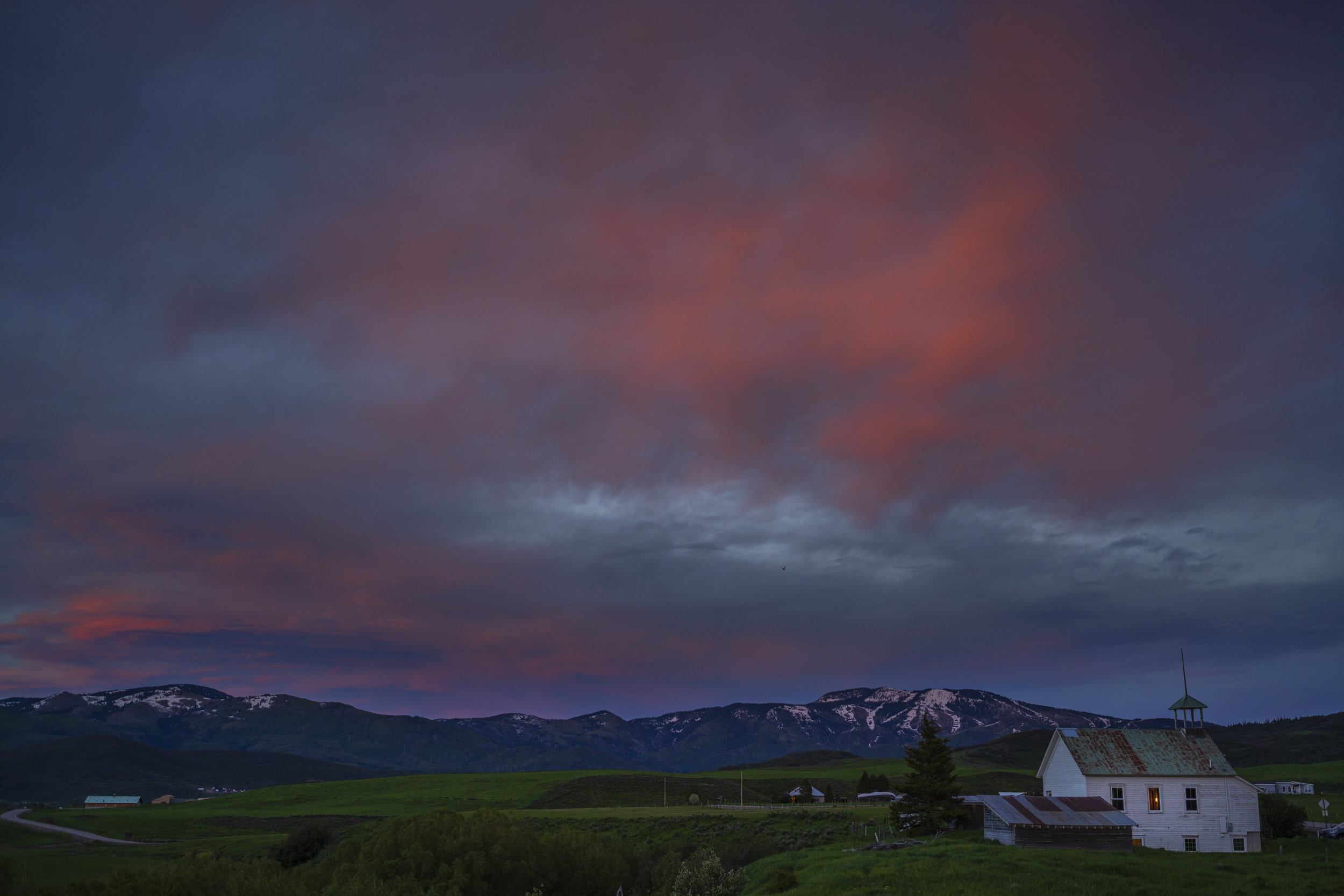
My friends have a beautiful place to stay. It’s going to get renovated, as used as an income property. I can’t blame them at all, but this place has afforded me some of my better images.
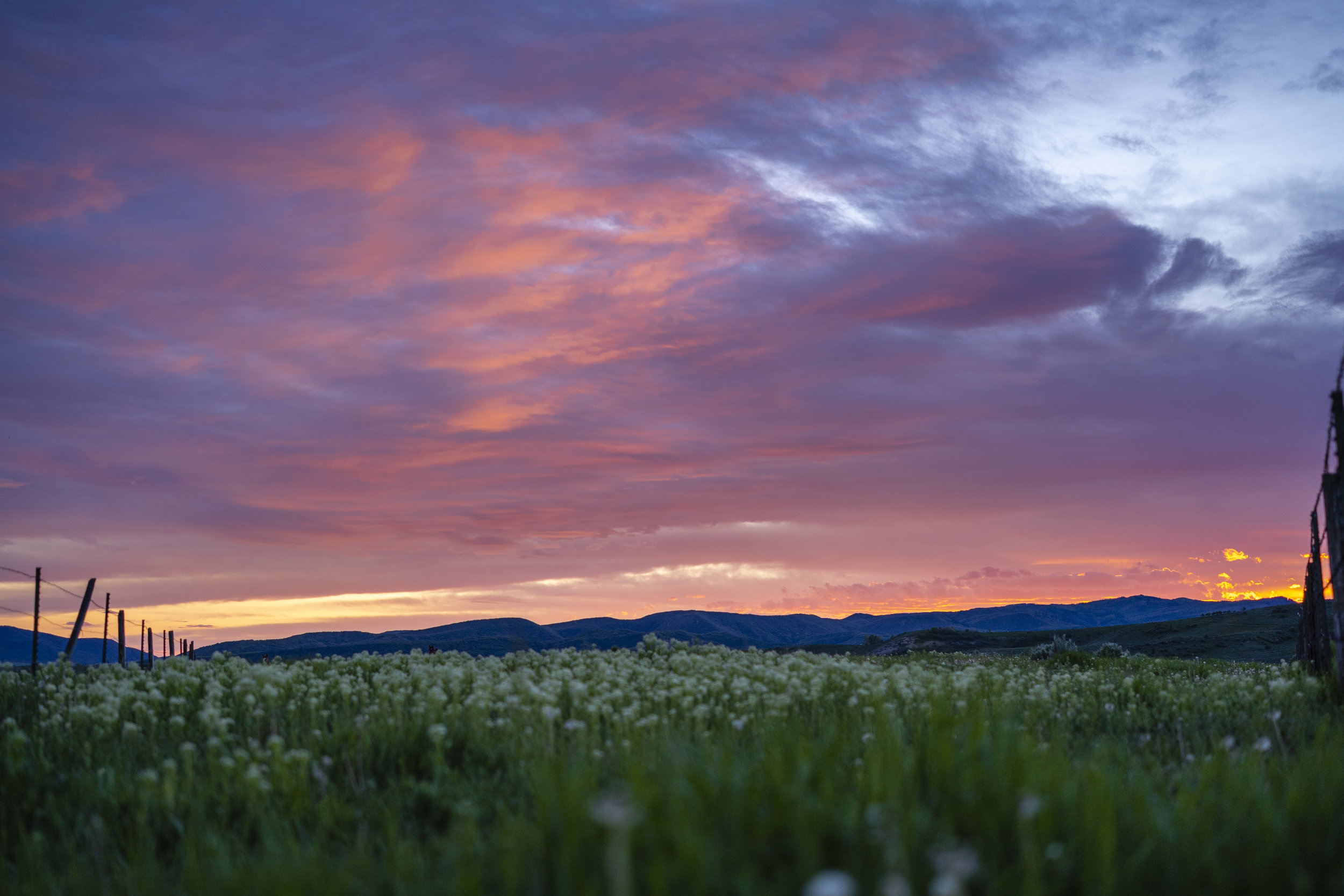
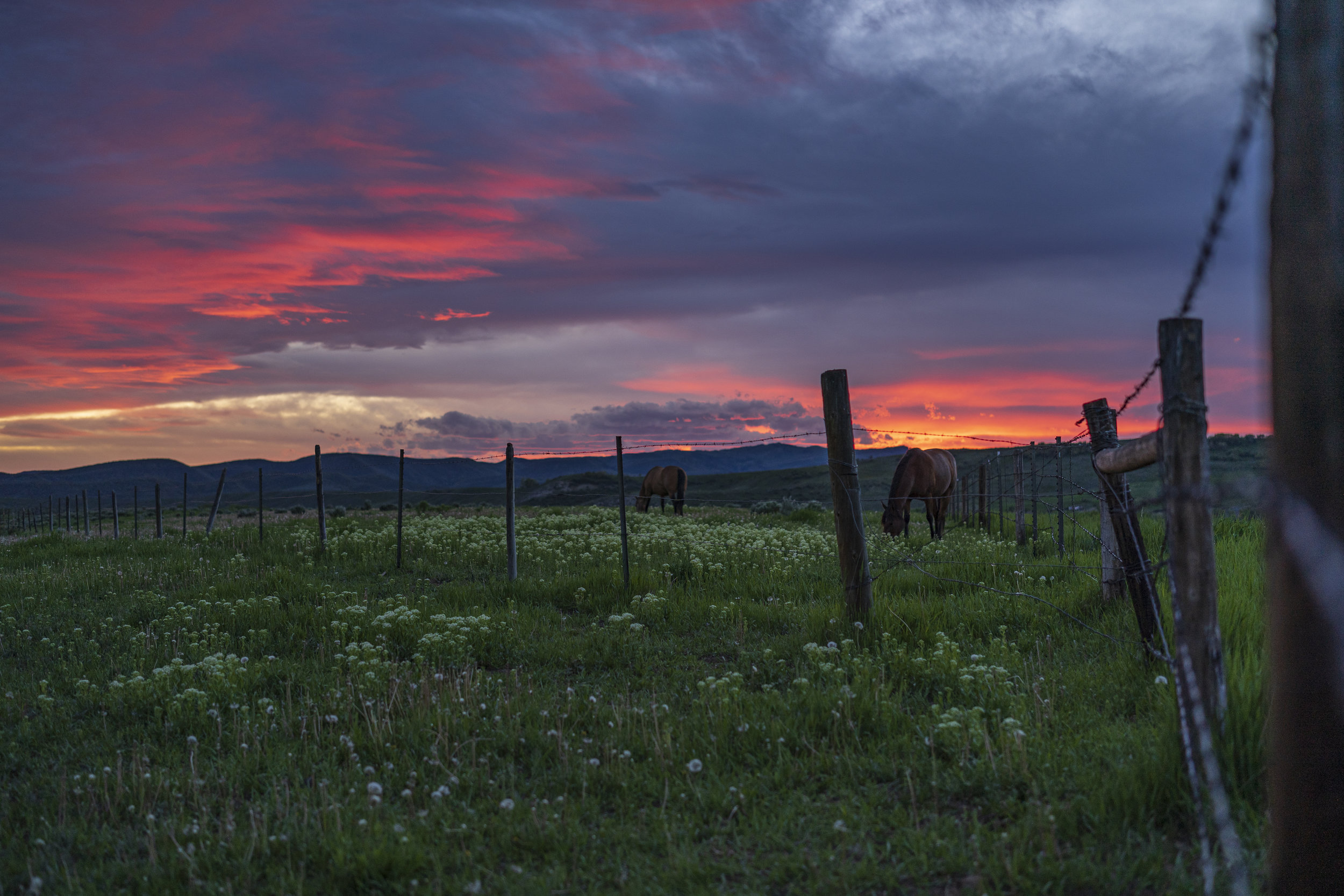
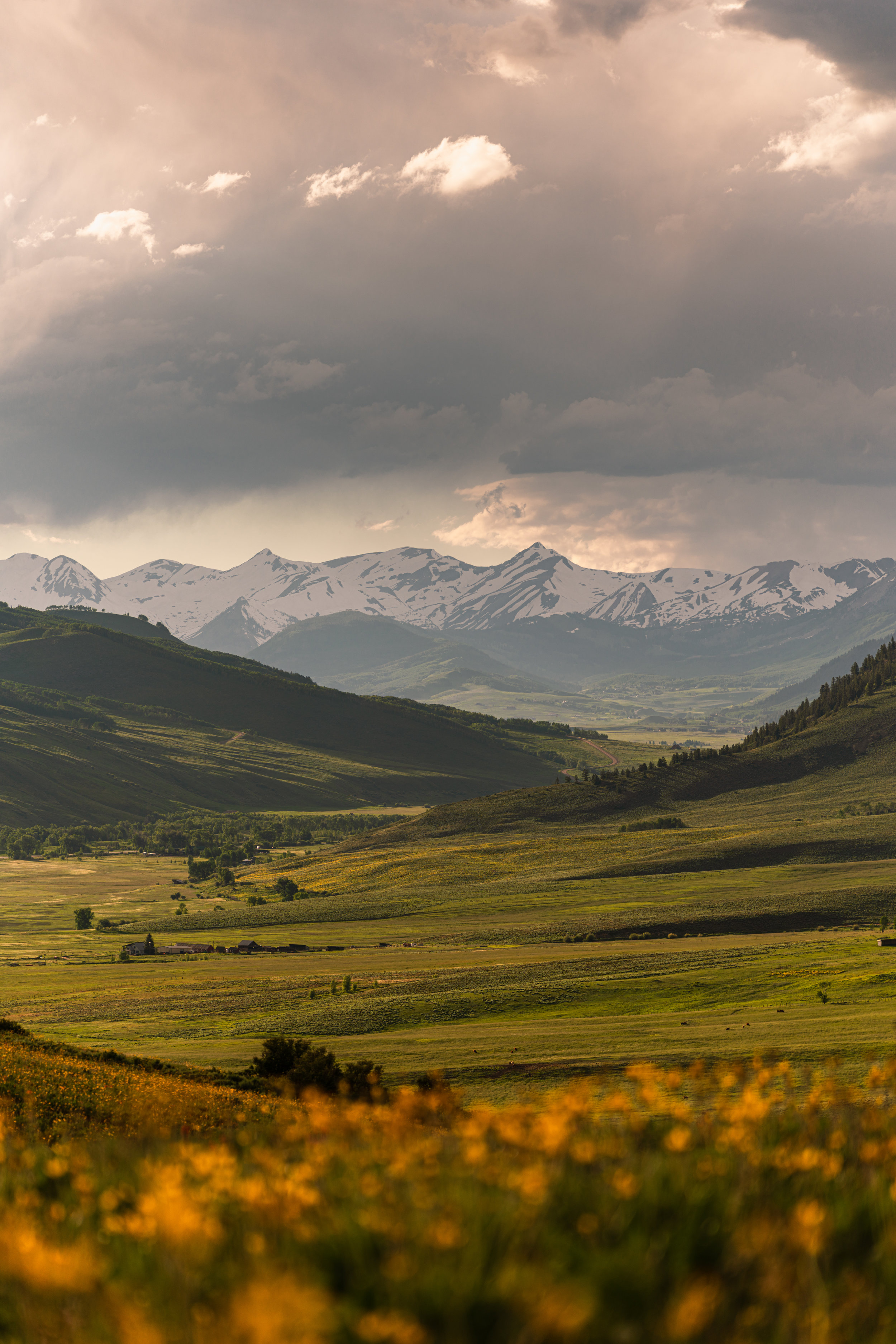
I should probably post this in the Wildflower Gallery, but the ridge in the back is the divide between Crested Butte, and the rest of the world. Paradise Divide, Yule Pass, Schofield Pass, Kebler Pass, Pearl Pass and Gothic all stand to buffer the the valley from the north, west and east. It’s only by following the plains of the Taylor Fork of the Gunnison and the East River that you can access Crested Butte. It’s a unique destination, even for Colorado.
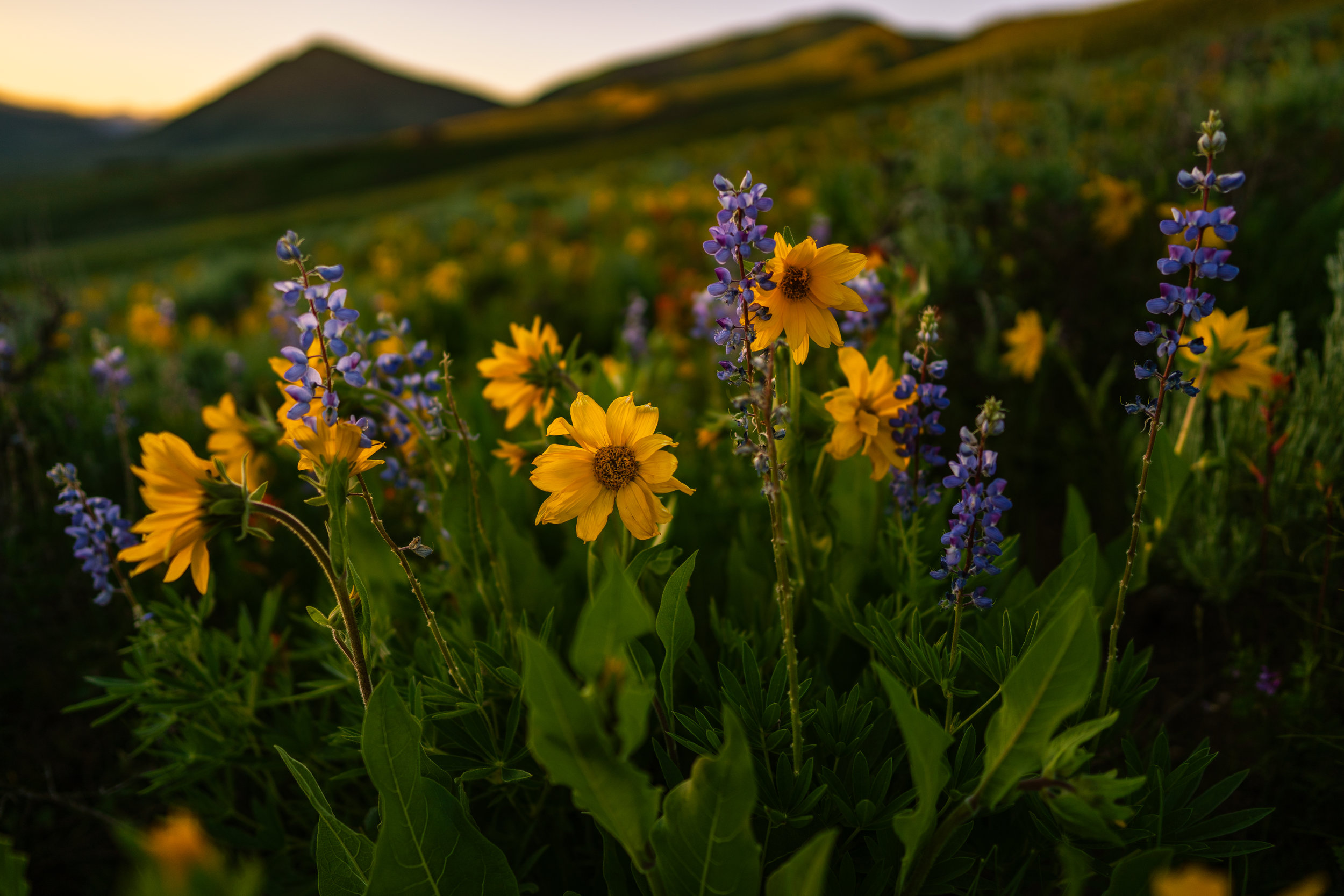
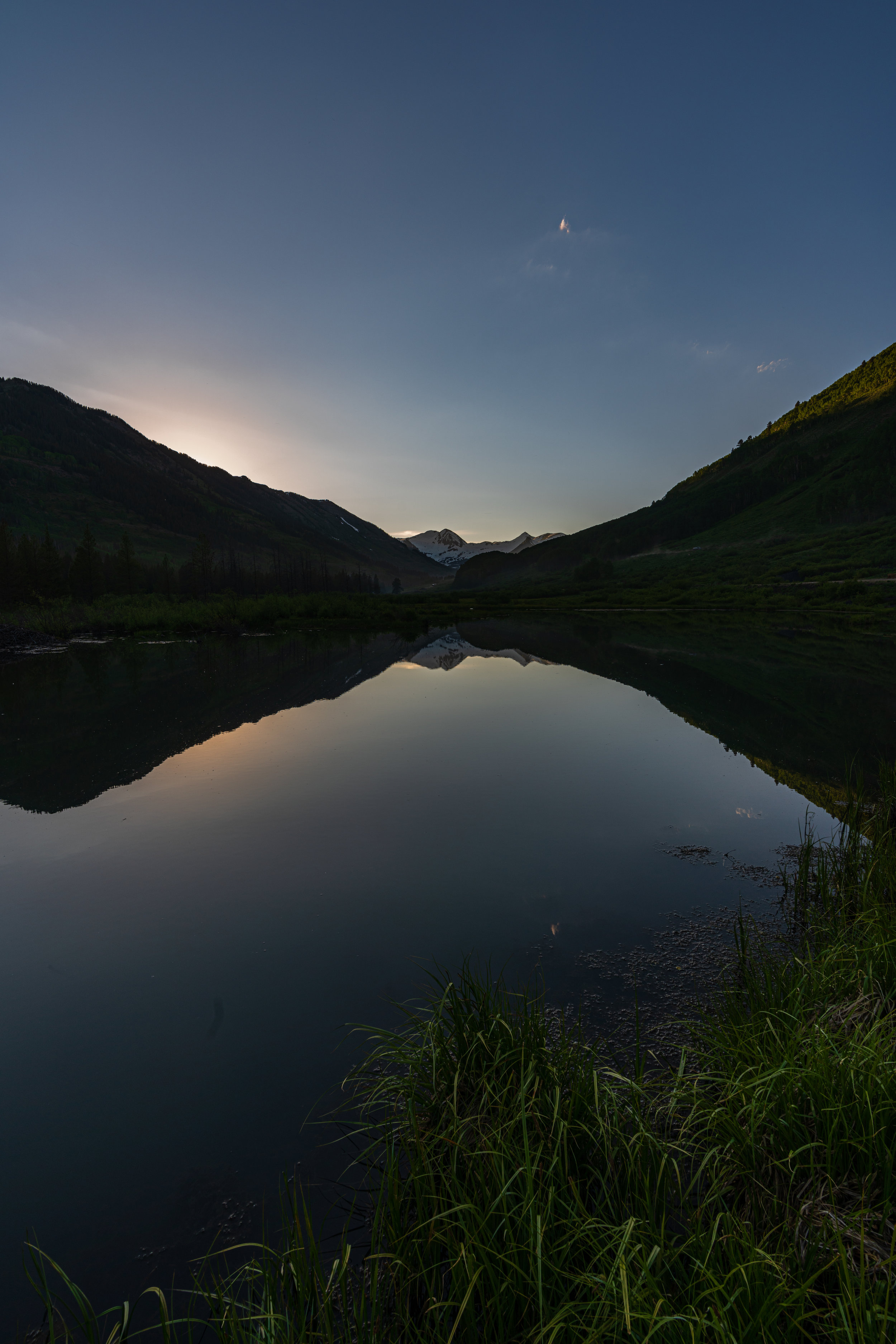
Tall grass, still water and sky, sliver of light on Yule Pass…
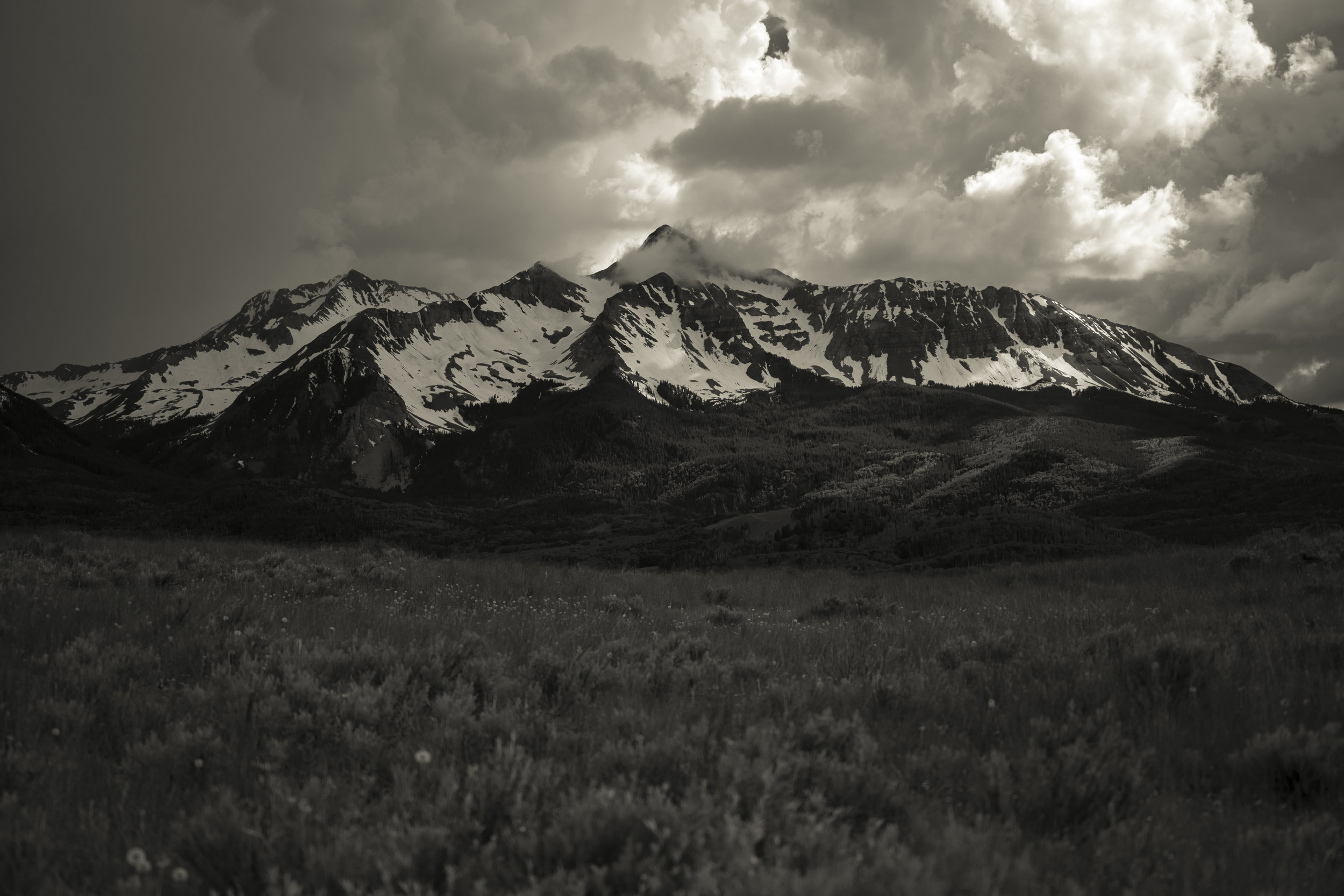
Summer storms are beginning to make their presence known in the high country. After a winter full of snow, the rains will further deepen the water tables throughout the West, a good thing for sure.
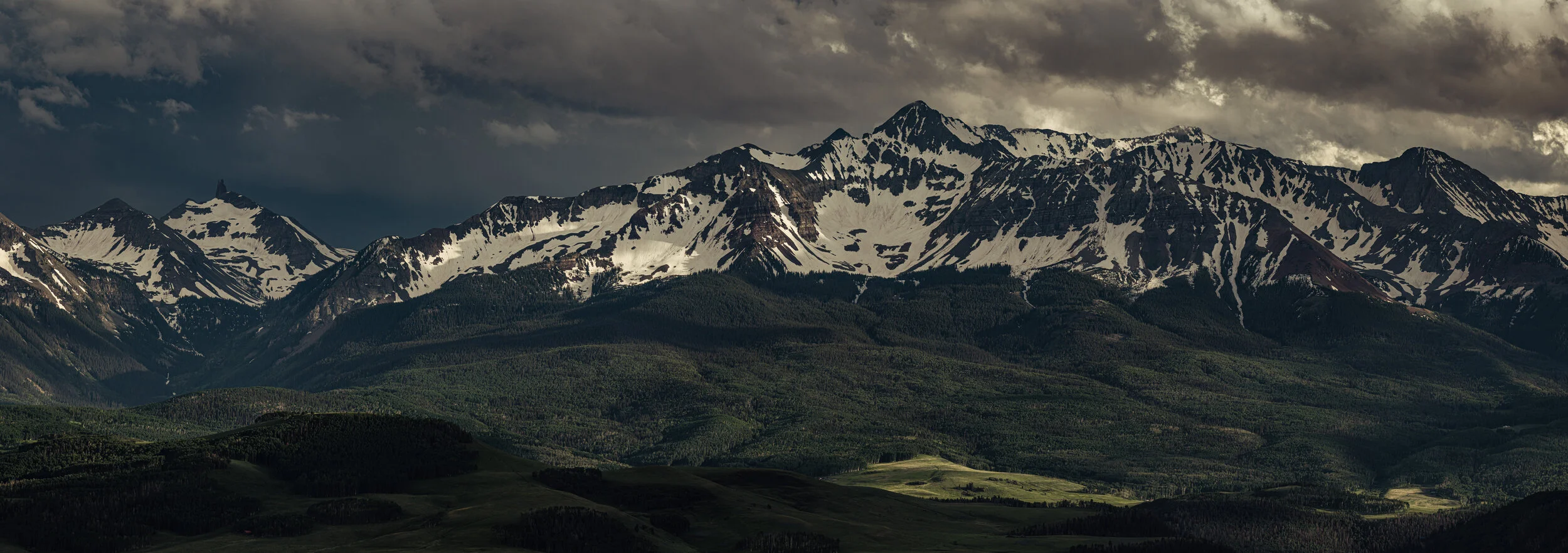
Trying to capture the scale of a mountain is no easy feat. Trying to capture the heart of a mountain seems to be even harder. I’ll continue to work on scale; the technique seems to be a long focal length and a mosaic of images stitched together in a panorama. But the heart of a mountain, that only seems possible once the mountain has taken something away from you, and that is a much harder proposition to bear.
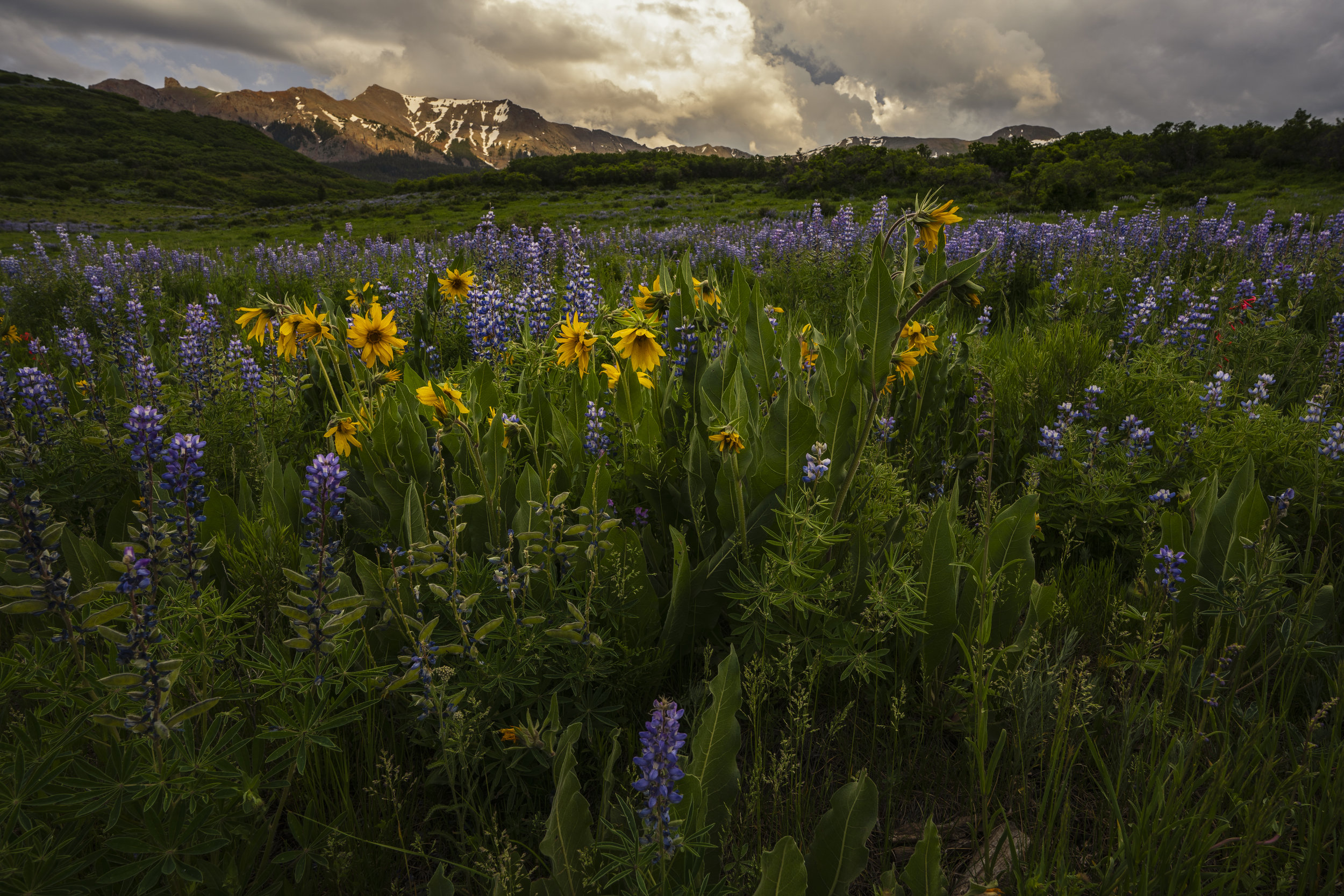
I’ve been carrying a few quotes around with me for the past few years. There have been enough events to push me off my center, and force me to come to terms with my failings and my shortcomings as a person, a partner and a parent. The last one of those is the most humbling, because even though we think we are perfect, its the rarest of us that doesn’t pick up some unfortunate habits and unwittingly pass them down to our children.
All summer long I’ve been struggling with letting me sons go. Yes, they are in their 20s and yes, they are completely capable of being functioning and beneficial members of society. But, they are still my boys, and it is still hard to let them go, to let them walk the path they choose, with all the vulnerability and uncertainty that life provides. Yet, they’ll grow, into even more amazing human beings than the already are. They need those journeys, those hurdles in order to become more certain of who they are and what their purpose is. This is such an odd transition, from parent to peer, from father to friend, but I know the rewards for all of us will be magnitudes beyond my vision.
So, when I say, “everything in my new life, will cost me everything in my old life,” it isn’t with remorse, its with the understanding that so much good is yet to unfold; because that old life was pretty damn amazing.

Morning light was odd and inconsistent; I’d been hoping for the glorious explosion of color that the San Juans are known for. Instead I was treated to subtle and surreal light that slowly built, spilling over the eastern wall, and slicing through the clouds to light up the peak and valley floor.

I've often written about how my brother Steve was the reason I moved to Colorado. July 8th is the anniversary of his passing, and this year, 2019 marks the 7th year. It doesn't get any easier, carrying the weight of the absence, but I’m better able to carry his presence, and appreciate all that he gave to me all those years ago when he said, “yeah, why don’t you take a break and stay with me for a while.” None of this, none of this at all would have appeared.

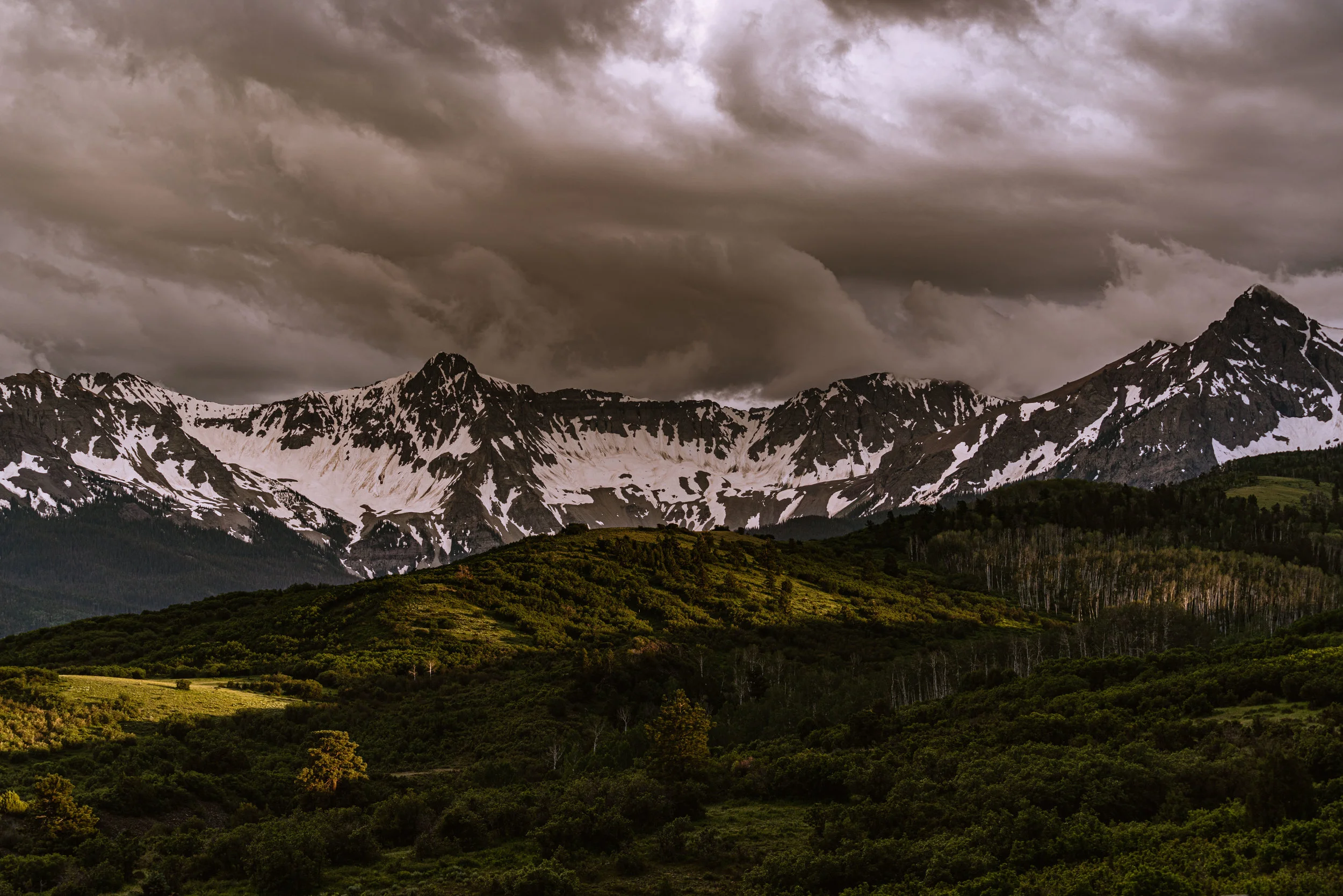
I’d rushed to get over the Last Dollar Road, not wanting to miss a sunset from the overlook. This is one of the more challenging compositions for me, and I’m still not sure that I have the image that I want. Those are my lessons, contentment and gratitude. No magentas and oranges, no blue-hour glow to settle the night in, just the bursts of lightning and the accompanying thunder, and gust of winds that blew dust and rain and forced us to pull our cameras inside and wait for these brief flashes of light.
I’ll go back, I always do.
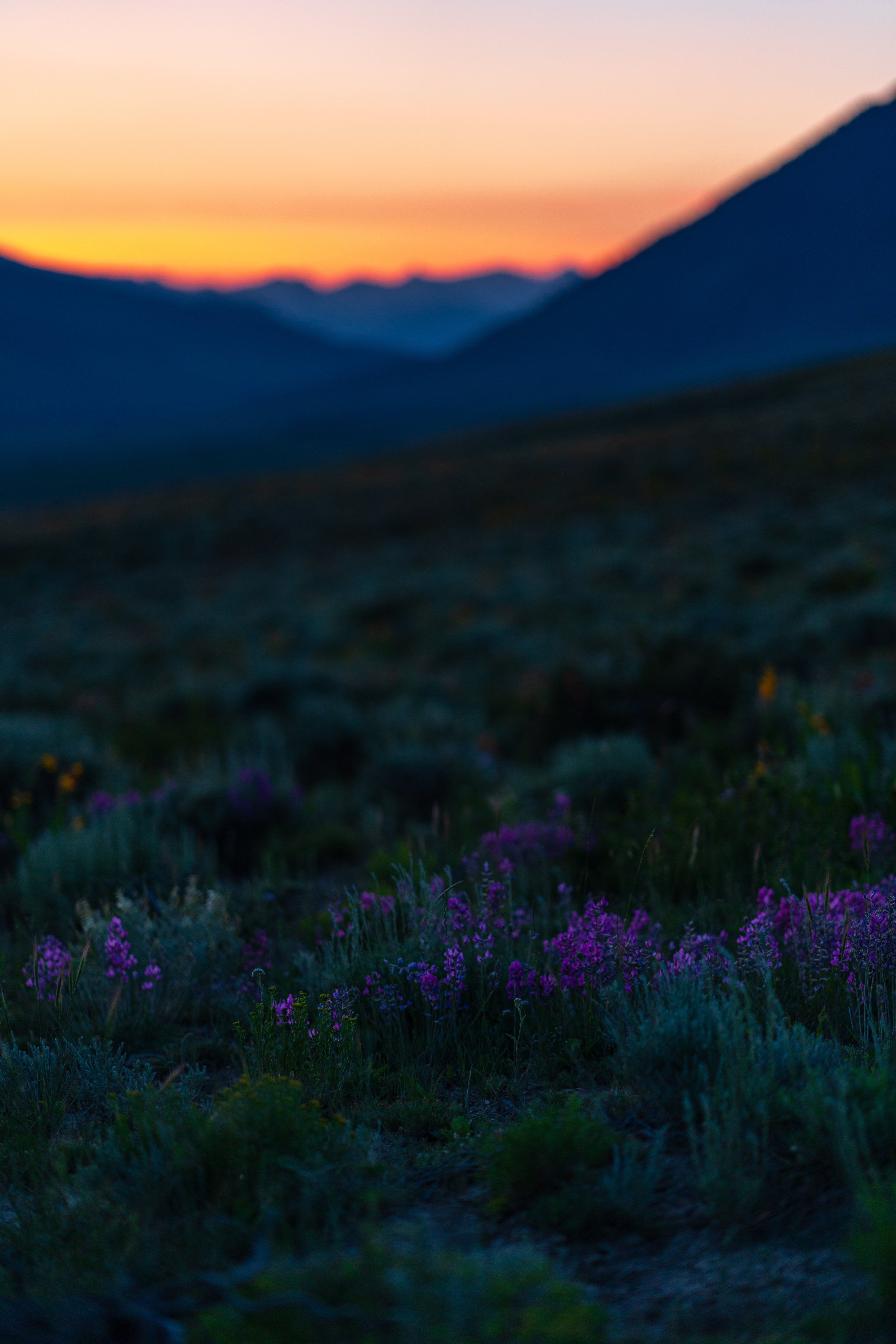
This had been a day, where I’d woken up at 11,000 feet, in a valley still littered with avalanche debris and snow, that meant not being able to hike more than two miles and being turned around at a ten-foot gap filled with a raging run-off. I decided to explore two more areas that I hadn’t yet seen, and in the process drove past Almont. I’d been under the impression that this are was spent, that the flowers were withered and the blooms had moved to higher elevations, I couldn’t have been more wrong. Some of the most beautiful and varied blooms were finally showing off, and after two hours of walking and shooting, I still didn’t want to leave. I stayed through the Blue Hour, and watched the moon rise. Locals had driven out to celebrate a birthday, and listening to the laughter in the distance animated the scene even more.

The pass is actually still inaccessible because of avalanche remnants. But, hiking along the 401 trail you can still take in all of the high alpine beauty. Big bunches of Fireweed are about to emerge, August should be an amazing month.
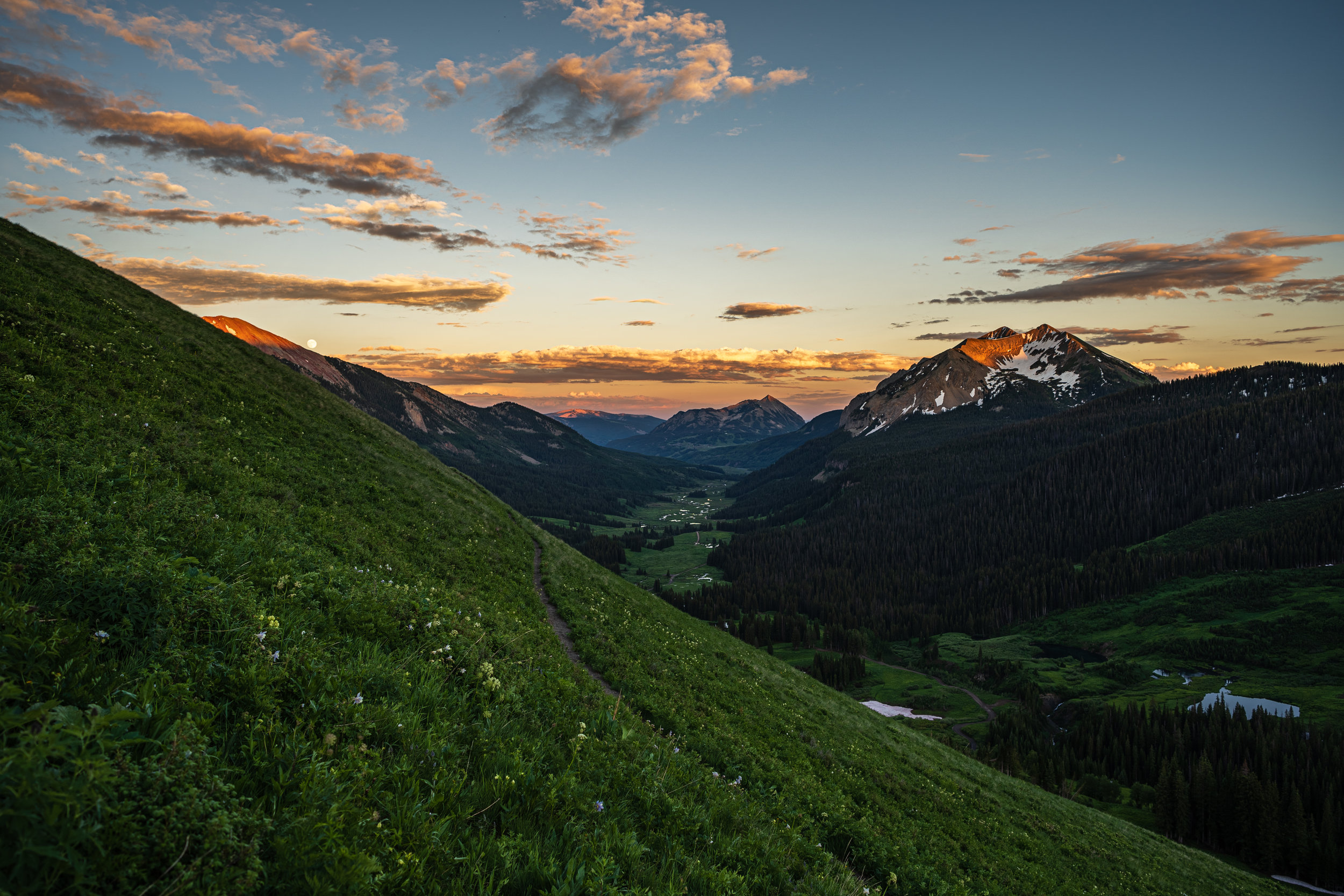
Normally, I’m much lower, and closer to town. This season I’ve been venturing further out and further up, and I have to admit it is absolutely worth it. Mt. Washington it the closest peak, with Mt. Crested Butte in the distance. The East River comes from many, different tributaries along the valley’s shoulders, and the town of Gothic is nestled in the valley’s mouth.
Crested Butte, Colorado - July, 2019
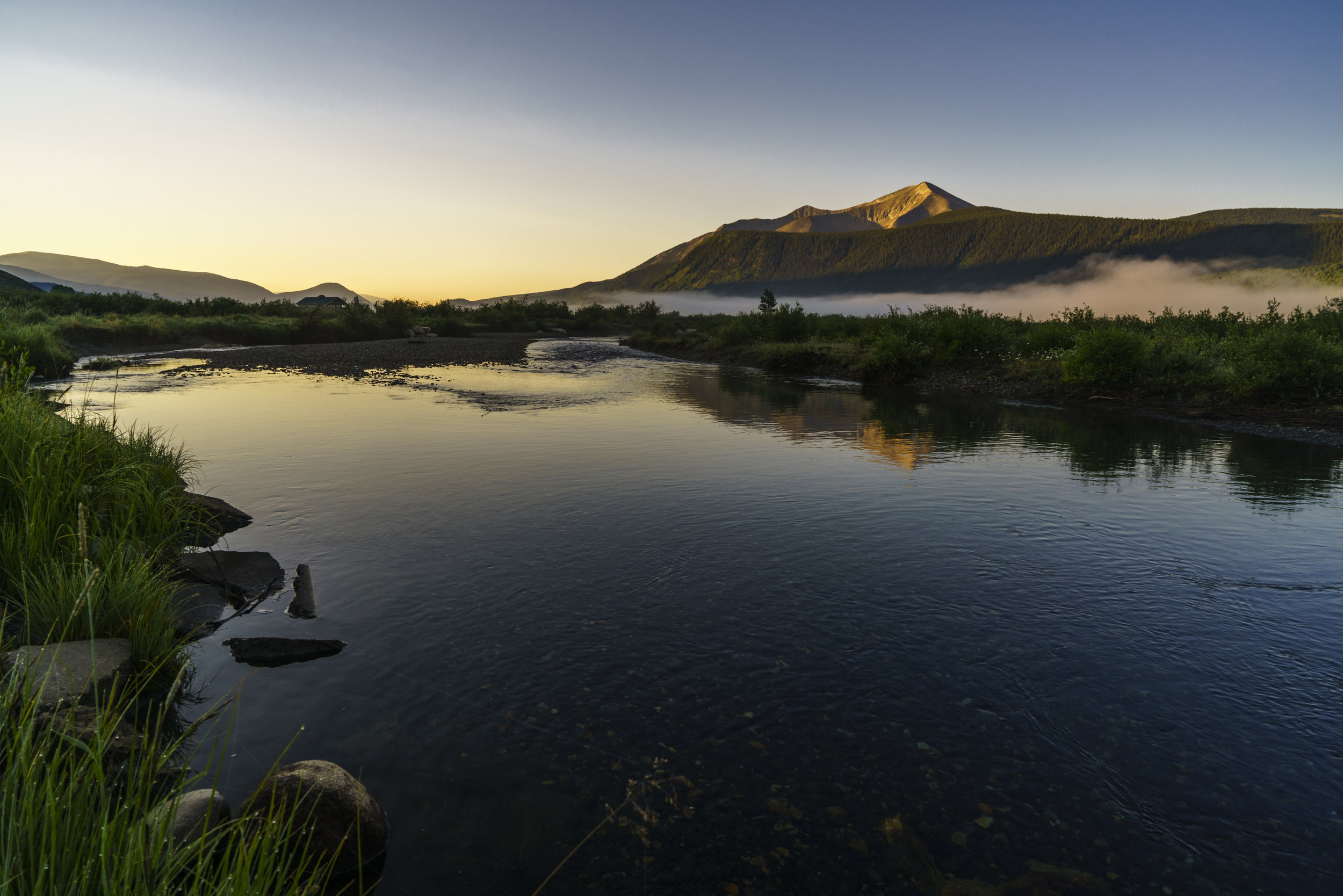
The small land trust that allows access to this stretch of river is a true gem. Whetstone Mountain proudly capturing the morning sun is reflected in this slow moving pool.
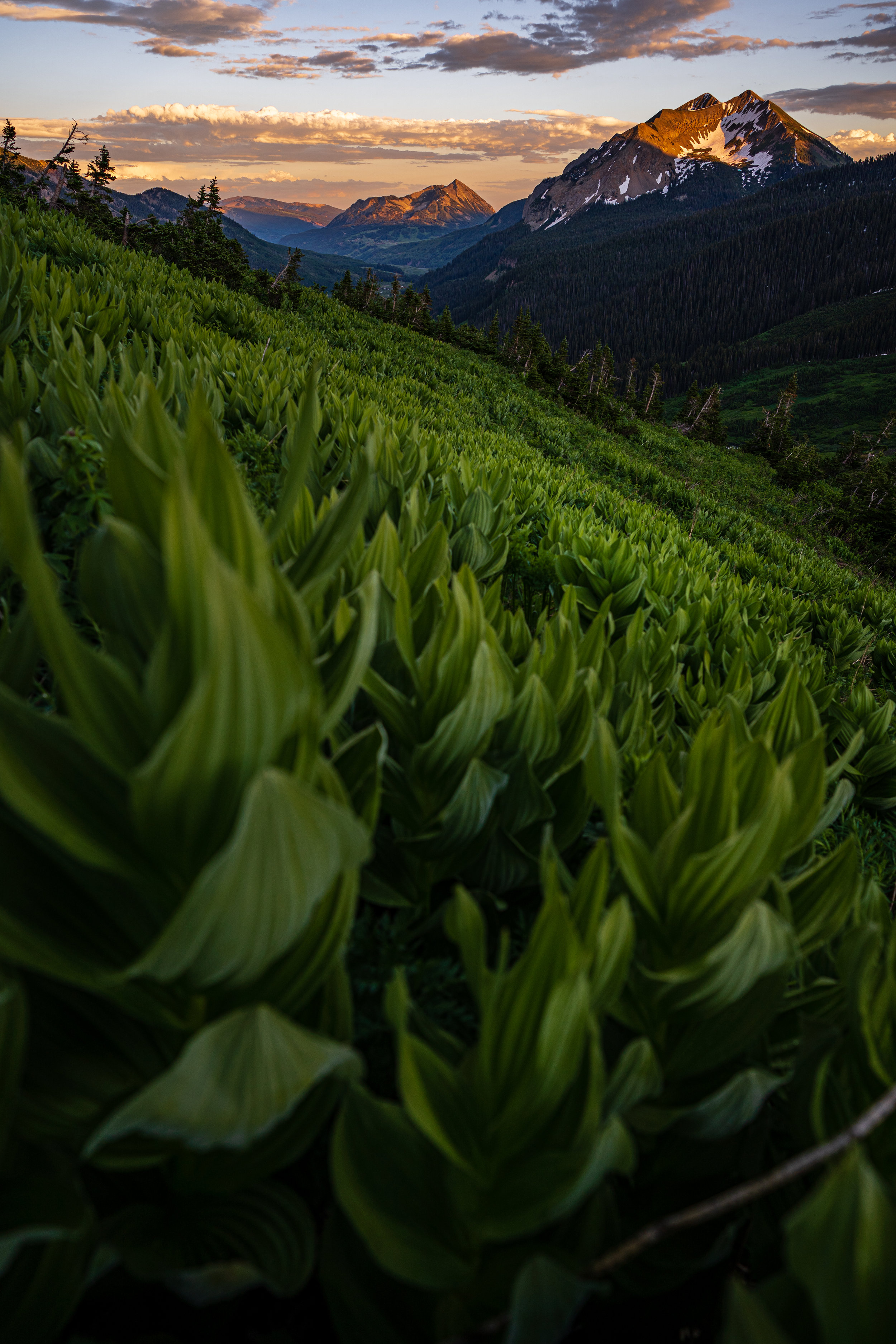
It doesn’t have a bloom, or at least not the traditional, showing assortment of petals and blossoms. But, the green, the texture, the way they can grab to light, and just glow… Watching them sway gently in a breeze, the are in fact one of my favorite flowers…
Normally, I’m much lower, and closer to town. This season I’ve been venturing further out and further up, and I have to admit it is absolutely worth it. Mt. Washington it the closest peak, with Mt. Crested Butte in the distance. The East River comes from many, different tributaries along the valley’s shoulders, and the town of Gothic is nestled in the valley’s mouth.
Crested Butte, Colorado
Corn Lily - I

It doesn’t have a bloom, or at least not the traditional, showing assortment of petals and blossoms. But, the green, the texture, the way they can grab to light, and just glow… Watching them sway gently in a breeze, the are in fact one of my favorite flowers…
5-image, horizontal panorama
Normally, I’m much lower, and closer to town. This season I’ve been venturing further out and further up, and I have to admit it is absolutely worth it. Mt. Washington it the closest peak, with Mt. Crested Butte in the distance. The East River comes from many, different tributaries along the valley’s shoulders, and the town of Gothic is nestled in the valley’s mouth.
Crested Butte, Colorado
Corn Lily - II

It doesn’t have a bloom, or at least not the traditional, showing assortment of petals and blossoms. But, the green, the texture, the way they can grab to light, and just glow… Watching them sway gently in a breeze, the are in fact one of my favorite flowers…
5-image, horizontal panorama - This one breaks the rules for horizontal plains… the tallest shoot should not stand above the background… I couldn’t pass up on the luminance.
Normally, I’m much lower, and closer to town. This season I’ve been venturing further out and further up, and I have to admit it is absolutely worth it. Mt. Washington it the closest peak, with Mt. Crested Butte in the distance. The East River comes from many, different tributaries along the valley’s shoulders, and the town of Gothic is nestled in the valley’s mouth.
Crested Butte, Colorado
Corn Lily - III

I drove up not knowing what to expect. Sometimes that’s just how it works. I have to get out of the city, it’s hot, I haven’t shot in a few days, maybe I’m tired of editing images from a recent trip… It’s never the same justification, just the need to “go.”
The trailhead was quiet, a few of the last from the days summits of Evans and Bierstadt were heading home, some overnighters were setting up dinner, I just wanted to walk around and see what the light might bring.
Guanella Pass - Reflections 3

I drove up not knowing what to expect. Sometimes that’s just how it works. I have to get out of the city, it’s hot, I haven’t shot in a few days, maybe I’m tired of editing images from a recent trip… It’s never the same justification, just the need to “go.”
The trailhead was quiet, a few of the last from the days summits of Evans and Bierstadt were heading home, some overnighters were setting up dinner, I just wanted to walk around and see what the light might bring.

I drove up not knowing what to expect. Sometimes that’s just how it works. I have to get out of the city, it’s hot, I haven’t shot in a few days, maybe I’m tired of editing images from a recent trip… It’s never the same justification, just the need to “go.”
The trailhead was quiet, a few of the last from the days summits of Evans and Bierstadt were heading home, some overnighters were setting up dinner, I just wanted to walk around and see what the light might bring.
Guanella Pass - Reflections 2

While technically 45 miles west of Denver, the parks and picnic areas scattered along the pass are part of the City of Denver Parks. This particular site is a great locate to watch the sunset, storm clouds building from the west, and even the Milky Way.

I’d decided to head out to see if I could capture the moon as it was setting in the western skies, so I headed to one of my favorite local locations to watch to moon and stars. I haven’t shot the moon much in the past three years, having held off on a longer focal length lens, something more than 200mm, because it is really challenging to get the scale of the moon, and I still haven’t gotten skilled at stacking moon images.
I have a few composition of the moon that I need to work on, but I was most happy that I stayed around for the sunrise. This composition is the result of 13 vertical images shot left to right, at 135mm. Images were edited and then stitched together in Lightroom. The original file is 77MB, making it ideal for a large panorama or triptych.
March, 2020
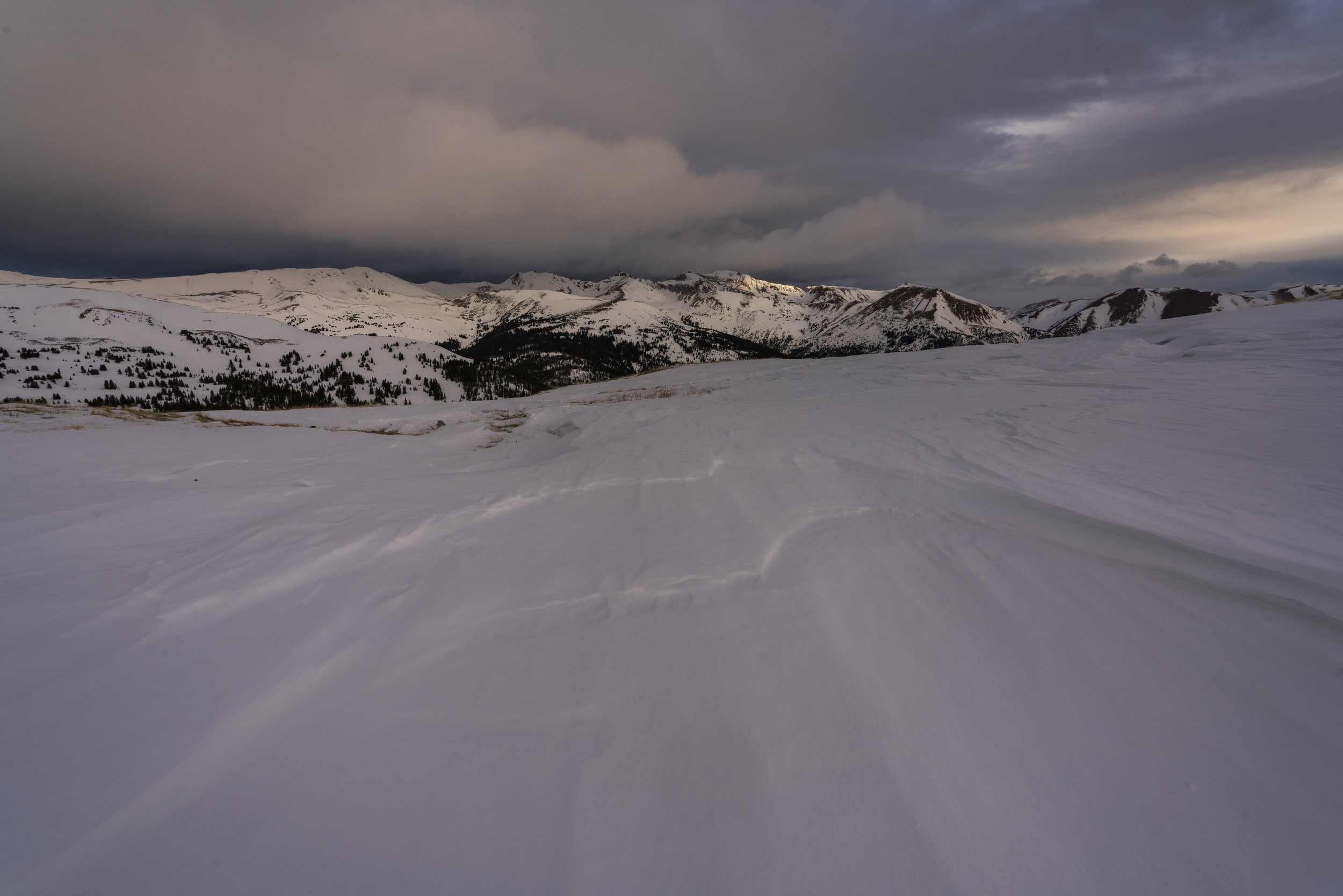
Shooting north towards the Citadel, hoping to catch the morning light. This is a winter counterpart to my summer capture of this scene.
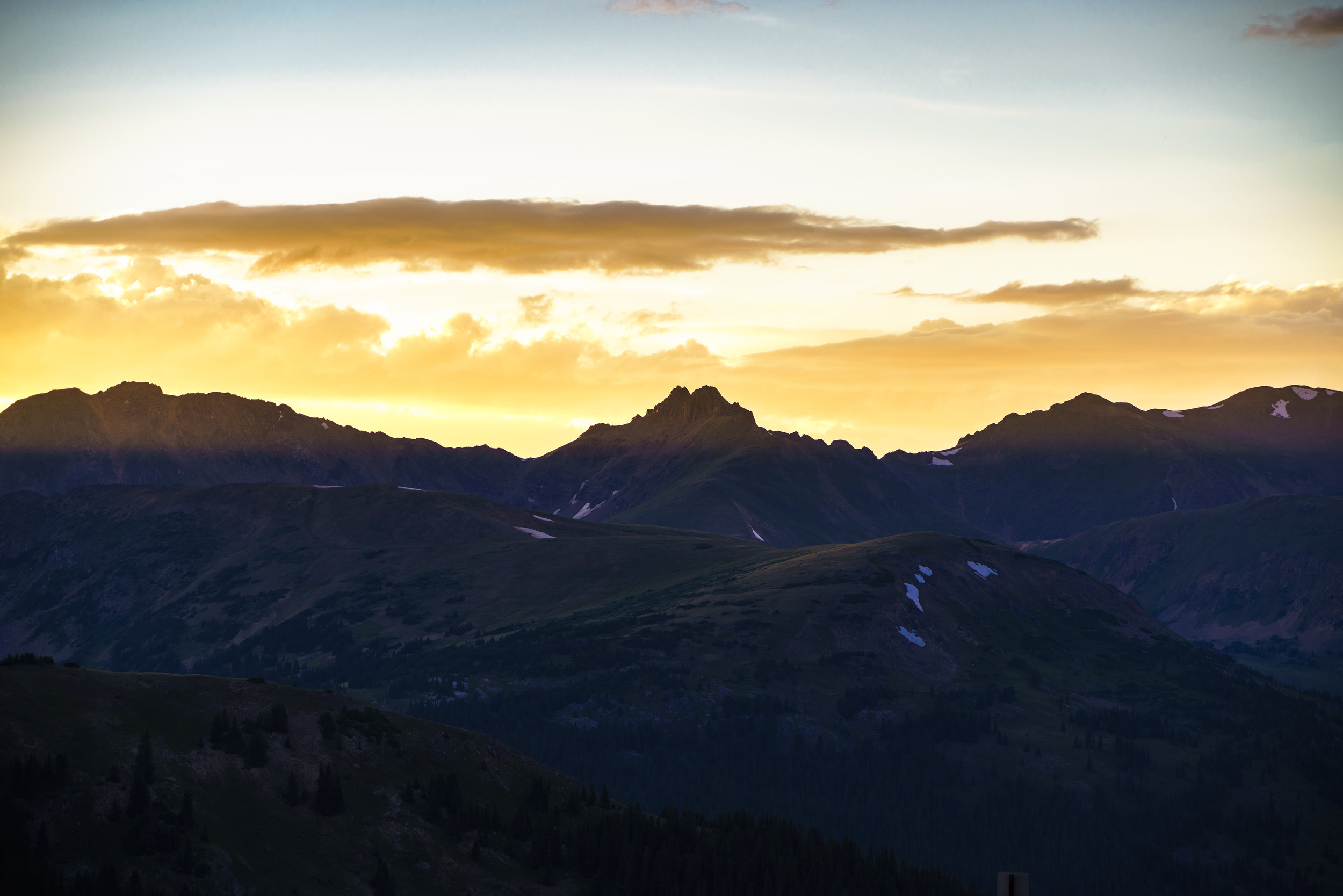
The Continental Divide sites just 65 miles west of downtown Denver. It’s a majestic presence and an inspiring site no matter the time of year. This shot was taken in route to Alma and I was experimenting with a new lens. It has grown into one of my favorites because of images like this.

I’d hoped for the moon, but happy to see this amazing light. This was the date of the last Super-moon for 2020 and having longer teaching days throughout the look-down has mad getting out to shoot just a bit of a challenge. I know I’m not losing out, with my safety and health, and with the health and wellbeing of Andrew and Tanner, so taking in a few moments to shoot; seeing the light dance and glow in the clouds and on the surface of the snow was simply the trade-off for some lost hours of sleep.
Dawn at Juniper Pass, after the super moon, May 7th, 2020
ISO 400 | F/5.6 | 1/400 sec. - 400mm

The road from Evergreen to Echo Lake follows the spine of the northern flank of Mt. Evans. It’s popular for cyclists in the summer, and families wanting a quick day-trip to the mountains, when a full weekend away is just too much. The picnic areas along the way, and Echo Lake and Mount Evans itself are part of Denver Parks & Recreation. I started to make the drive up along this road, even before I’d moved to Denver. I’d spotted it on a road map and since I was riding a motorcycle a lot at that point, it looked like an interesting route to try. I wasn’t then, and in the ensuing 30 plus years this route hasn’t disappointed yet.
I’ve ridden multiple motorcycles, run on it, ridden a bicycle along it, stopped and hiked various points, and yes now with photography to take advantage of and explore the different view points, I can appreciate this little section of roadway even more. It just seems to add weight to the argument that the most beautiful things can be right in front of you.
Dawn before the setting super moon, April 8th, 2020
ISO 100 | F/1.8 | 1/4000 sec. - 135mm

It is hard not firing off frame after frame when the light looks like this…
From Juniper Pass, May, 2020
ISO 400 | F/5.6 | 1/400 sec.

We don’t get these conditions often in Colorado, especially so close to the Front Range, so taking advantage of it this morning was an easy decision. Even though my hope had been to shoot the final Super moon of 2020, the fog was a welcome distraction from a hectic work week, and our unprecedented times.
Dawn at Juniper Pass, May 8th, 2020
ISO 100 | F/1.8 | 1/125 sec. - 135mm

Yeah, I would have loved to have seen the moon, but this worked.
Dawn at Juniper Pass, after the super moon, May 7th, 2020
ISO 400 | F/5.6 | 1/400 sec. - 400mm

an homage to that ever elusive quality, that connectedness which surely adds value to our existence - hoping that they exist more in reality than in just in our imagination…
ISO 200 | f/5.6 | 1/400 sec. - 300mm

Looking west towards the Continental Divide from the Boettcher Mansion. The clouds couldn’t make up their mind that morning, rolling and boiling along the Divide, letting out the rain and snow where they could.
Spring is always interesting that way, new life comes from the dead and brutal forces that we often don’t understand in the moment.
ISO 200 | f/5.6 | 1/800 sec. - 400mm
Golden, Colorado - May, 2020

Looking north towards the Flatirons along Colorado’s Front Range, from the Boettcher Mansion.
ISO 200 | f/5.6 | 1/400 sec. - 300mm
Golden, Colorado - May, 2020

Just green, it eventually gives way to purple, blue, red and yellow. But in this moment it was shimmering in green.
Crested Butte - June, 2020

Just that - the beautiful morning light, viewed from the Almont Triangle
Crested Butte - June, 2020

Finding stillness under a canopy of green.
ISO 100 | F/5.6 | 1/20 sec. - 20mm
July, 2020

I’ve only ever shot a rainbow one other time, and to be honest I’ve always preferred just to watch them as I never thought I could create an image that actually gave justice to the beauty inherent in these scenes. But, I had to try this, just this one time. I do think this is a once in a lift time shot, and in the few minutes of the light, some of the compositions still make my head spin.
ISO 100 | F/2.8 | 1/60 sec. - 20mm

This was the most startling and challenging series of images I’ve ever encountered. I literally had to run back to this spot to capture the light. I’d been there shooting about half an hour earlier, and decided to head out of town, but driving away the sky started to open up and a beautiful soft light started to cover the Slate River valley. I stopped to snap some images of Paradise Divide, and then looking around to see the rainbow appear. I knew what I wanted to frame, and drove back to the site, and went out with the only camera that was easy to grab, with a singe, 20mm lens.
ISO 100 | F/7.1 | 1/60 sec. - 20mm

A 20mm lens wasn’t wide enough, and with only that one lens I had to get creative - so I shot off 6 horizontal images, and then stitched them together in Photoshop and edited the final composition in Lightroom.
ISO 100 | F/2.8 | 1/60 sec. - 20mm

Memories last, even while time wears down what we’ve built and tamed. The Wilson Mesa holds many memories from the past 11 years - moments of salvation in the company of good friends, farewell journey with a son, and a chance to see all of it through new eyes.
Mesa Memories - Wilson Mesa, June, 2020

Memories last, even while time wears down what we’ve built and tamed. The Wilson Mesa holds many memories from the past 11 years - moments of salvation in the company of good friends, farewell journey with a son, and a chance to see all of it through new eyes.
Mesa Memories - Wilson Mesa, June, 2020

Mesa Memories last, even while time wears down what we’ve built and tamed. The Wilson Mesa holds many memories from the past 11 years - moments of salvation in the company of good friends, farewell journey with a son, and a chance to see all of it through new eyes.
Mesa Memories - Wilson Mesa, June, 2020

Mesa Memories last, even while time wears down what we’ve built and tamed. The Wilson Mesa holds many memories from the past 11 years - moments of salvation in the company of good friends, farewell journey with a son, and a chance to see all of it through new eyes.
Mesa Memories - Wilson Mesa, June, 2020

Memories last, even while time wears down what we’ve built and tamed. The Wilson Mesa holds many memories from the past 11 years - moments of salvation in the company of good friends, farewell journey with a son, and a chance to see all of it through new eyes.
Mesa Memories - Wilson Mesa, June, 2020

Just green; envy or naivety? Green as in vernal and new like Spring, or green that’s weathered and aged and old? In any case, it was vibrant. It was fresh. The sage so raw and pungent it perfectly complimented the scene.
The sun was just breaking over Telluride to the east, and this abandoned stockade sheltered only the new wild growth of Mesa. But what had it seen, over the last 75 years? Countless rainstorms and blizzards, farmers arriving then retreating. Developers and vagabonds all descending on this view, this amazing green view.
Ten years ago on the back side of that mountain I started to dig a trench. I started to craft my own stockade. I lined up a story to tell myself over and over again until I just couldn’t hear anymore. Fortunately that track has worn itself out. What was naive is now wiser, what was worn is now new. Given enough time a perspective can change. I feel fortunate to have had the opportunity to grow.
ISO 100 • F/9 • 1/25 sec. @16mm.

I hope I never tire of looking at this, watching light open up the day revealing what we’d put away the night before.

Unlike most rainbows that vanish in a few minutes, this one lasted nearly half an hour. In that time there were multiple images captured; but of them all, this one, at 105mm presents the sense of wonder and appreciation I felt in those 30 minutes, the best.
It seems I was destined to see many different examples of these prisms, and each one gave me that reminder of how important it is to sit and be still, for just a little longer than you usually would. This one was no exception.

Pulpit Rock is on of the prominent features accessible from the North Rim of the Black Canyon, but the better site to view it from is near the mid-way point of the Rim Drive from the south side of the canyon. Most of the afternoon was spent hiking along the river and then watching the sunset over the Painted Wall. While that view was less vibrant, the canyon would offer another opportunity to take in the color before the sun completely slipped below the horizon.
Black Canyon of the Gunnison National Monument - June, 2020

This story feels a lot like a story from five years ago - out on the road, exploring this beautiful and intoxicating state, looking for new routes and new images, and what do I find, a trail that I really shouldn’t have been on. This last time I did this I was on a motorcycle, at the end of five days on the road, with too little information, too little daylight and too little self-regulation, I set off to cross Taylor Pass and make camp near Taylor Reservoir. The 20 hour ordeal that I was about to embark on was one of the most frustrating and humbling adventures I’ve ever encountered.
This trip, of an equal distance down Engineer Mountain trail was different in that I was in a four-wheel vehicle and it was begun early in the morning, but was similar in that the information I was going off of was wildly off base having mistook this trail for a much tamer Poughkeepsie Gulch, which was compounded by the fact that while a stock 4Runner is capable of such a descent, it really should have better tires and suspension, especially on a rain soaked trail, and while the trail is not marked as a one-way, it is pretty clear from the traffic that I encountered that I was definitely going the wrong direction.
In the end I was able to make the descent, with only a few scuffs and scratches to the undercarriage, but a whole lot more appreciation for having the right information for each and every situation.
ISO 100 | F/11 | 1/60 sec. - 16mm
July, 2020

This photographic journey started a little over four years ago. In that time a few thousand miles have been driven and countless sunrises and sunsets have passed before me. I’ve learned how to be patient and read the light, I’ve learned how to persist and see in the dark. I’ve learned that being is more important than doing, and that letting go of expectations is the best reward.
This trip along Kebler Pass felt ordinary enough to begin with. Hoping for the clouds along the horizon to break seemed unrealistic at the start as the rain washed in and out with each mile. Nearing the half-way point, and the sun already setting I’d given up on reaching the pass over-look of Beckwith Mountain. In that moment though this glow appeared in the rearview mirror, and with my only thought of capturing the light I pulled over as quickly as I could and gratefully found the patch of Asters.
While not as heroic of a capture as I would have liked, it still produced became a dynamic image that will be stay in my memory for a very long time. Crested Butte did that to me more than once in 2020.
ISO 200 | F/2.8 | 1/4 sec. @ 16mm - Sony a7riii - Sony FE 16-35GM
Kebler Pass - July, 2020

Too many emotions have been cast out into this bit of the Slate River over the past few summers. What I wanted to happen, but what did happen ended up being very, very different.
Crested Butte has given me some incredible photos, but honestly not enough memories, and I’m not sure if that will ever change.
Crested Butte, July 2020

While they didn’t produce the bruising storm they hinted they would, the foreboding clouds shutter the sunset light and cast an uneasy mood over the evening. The clouds would hold on through the night, blocking the starry night I hoped to shoot. Such is landscape photography.
Clouded Illusions - Paradise Divide
Crested Butte, June, 2020

While they didn’t produce the bruising storm they hinted they would, the foreboding clouds shutter the sunset light and cast an uneasy mood over the evening. The clouds would hold on through the night, blocking the starry night I hoped to shoot. Such is landscape photography.
Clouded Illusions - Paradise Divide
Crested Butte, June, 2020

While they didn’t produce the bruising storm they hinted they would, the foreboding clouds shutter the sunset light and cast an uneasy mood over the evening. The clouds would hold on through the night, blocking the starry night I hoped to shoot. Such is landscape photography.
Clouded Illusions - Paradise Divide
Crested Butte, June, 2020

One of the more intimidating scenes from this summer. Hiking out in the faintest morning light after spending a rainy night above Gothic, I didn’t expect the weight of the fog to be so heavy and for it to stay around so long.
I couldn’t for the life of me figure out a composition. I so wanted to capture the motion and the scale, something I felt I could only do if I was closer, and something I felt a time lapse would only really convey in that moment.
But there was that tension, that feeling that no matter what I did, the scale and scope would be lost. Then, just as startling, the realization of the impermanence and the imperfection. I remembered how a rainbow was more about the moment then the specific technique. Yes, to capture a moment is often what makes the photo, more valuable than the photo. The likelihood of standing high above Crested Butte, engulfed in an inversion, a second time, much less the fortune of seeing it once wasn’t lost on me. In the moment to be seized by the thought that “life is for the living” brought me to switch out a lens, frame the breaking sun on the top of the mountain and click away at the shutter in order to capture the moment.
ISO 100 • F/1.8 • 1/500 sec. @ 135mm.
July, 2020

The Continental Divide Trail is a monumental trek, with one end on the US-Canadian border and the other on the US-Mexico border. It is over 3,100 miles long and as its name suggests it follows the course of the backbone of the United States. With so many high peaks throughout Colorado the 300 plus miles of the Colorado portion are no easy feet.
This portion of the trail crosses over Cottonwood Pass, hugging 12,000 feet or more in one of the more demanding portions, though the San Juans hold the title of the most dangerous stretch in Colorado.
ISO 100 | F/11 | 1/160 sec. - 35mm
A beautiful panorama made of nine vertical images, shot at 35mm each and stitched together to create 52MB of detail. Captured the first weekend of September, with the grass and scrub oak just starting to loss the color, creating a tapestry of green, yellow, and gold in the late afternoon light.
September, 2020

Evolutionary development and geological strata which are marked by isolated episodes of rapid speciation, or change, between long periods of little or no change.
Our own intellectual and emotional evolution may reflect this pattern; period of stasis or at at least a slow, unapologetic meandering, punctuated by events and interactions that cause great upheaval and disorder followed by time to integrate and adapt.
Watching nature cycle through its seasons is our most practical antidote; following the excitement and anticipation for these changes, while accepting the unknown flow of this metamorphosis, consolidating the experiences into a set of lessons and memories which can punctuate our internal journey.
ISO 100 • F/4 • 1/200 sec. - @105mm.

While the snow fall this winter wasn’t as prolific across the state as we’d all hoped for, the Front Range is still seeing snow deposited by late spring storms.
This view of the twin 14’ers from Squaw Pass Road shows that heavy layers are still building, and the volume of water running through downtown in the South Platte river is evidence of all this accumulation.
Sony a7riii and Sony FE 100-400GM - ISO 100 | F/5.6 | 1/2500 at 400mm
Late Storms - Squaw Pass - May, 2021

While the snow fall this winter wasn’t as prolific across the state as we’d all hoped for, the Front Range is still seeing snow deposited by late spring storms.
This view of the Continental Divide from Squaw Pass road shows that heavy layers are still building, and the volume of water running through downtown in the South Platte river is evidence of all this accumulation.
Sony a7riii and Sony FE 100-400GM - ISO 100 | F/5.6 | 1/2500 at 400mm
Late Storms - Squaw Pass - May, 2021

While the snow fall this winter wasn’t as prolific across the state as we’d all hoped for, the Front Range is still seeing snow deposited by late spring storms.
This view of the Continental Divide from Squaw Pass road shows that heavy layers are still building, and the volume of water running through downtown in the South Platte river is evidence of all this accumulation.
Sony a7riii and Sony FE 100-400GM - ISO 100 | F/5.6 | 1/2500 at 400mm
Late Storms - Squaw Pass - May, 2021

Summer is here according to the calendar, if not quite the planets celestial journey. In the high country that means that snow is melting, trails are clearing, and projects that have been ignored for the last 9 months need to be addressed. And, of course photography has its place in all of this.
This spot was one of my first stops last summer and since I was working in Alma for a few days it was just a logical step to head up a little higher to capture the sunset at one of my favorite sites.
The Bristlecone are not as common in Colorado as they are in California, but we have three different groves of this ancient trees, and I intend to photograph all three this summer.
ISO 100 | F/8 | 1/500 sec. - 14mm
Windy Ridge - Sunset Study 2021 I

Summer is here according to the calendar, if not quite the planets celestial journey. In the high country that means that snow is melting, trails are clearing, and projects that have been ignored for the last 9 months need to be addressed. And, of course photography has its place in all of this.
This spot was one of my first stops last summer and since I was working in Alma for a few days it was just a logical step to head up a little higher to capture the sunset at one of my favorite sites.
The Bristlecone are not as common in Colorado as they are in California, but we have three different groves of this ancient trees, and I intend to photograph all three this summer.
ISO 100 | F/8 | 1/500 sec. - 50mm
Windy Ridge - Sunset Study 2021 II

Summer is here according to the calendar, if not quite the planets celestial journey. In the high country that means that snow is melting, trails are clearing, and projects that have been ignored for the last 9 months need to be addressed. And, of course photography has its place in all of this.
This spot was one of my first stops last summer and since I was working in Alma for a few days it was just a logical step to head up a little higher to capture the sunset at one of my favorite sites.
The Bristlecone are not as common in Colorado as they are in California, but we have three different groves of this ancient trees, and I intend to photograph all three this summer.
ISO 100 | F/8 | 1/500 sec. - 20mm
Windy Ridge - Sunset Study 2021 III

A quick trip to the mountains to do some work necessitated an overnight stay. I headed up early to capture the Milky Way one night in one location, and was rewarded with a second night in another.
On the third trip up I decided to explore a bit more, first heading up Mosquito Gulch, but the pass over to Leadville was still snowed in at Oliver Twist Lake. While this would have offered I beautiful view of the night sky, the sunset would have been in the immediate shadow of the London and Buckskin Mountains. While I debate a trip back over to Loveland Pass, the idea to explore Como Junction and Boreas Pass came to mind. I was reasonably certain that the pass itself would still be snowed in, but knowing it is a smooth and accessible road regardless, I decided to head up.
While the gate sign said the pass was closed, the route all the way to the station house at the top was completely free of snow. I headed over the summit, crossing the Continental Divide to see how much further the road as passable. I drove without a need to backtrack all the way to the famous watering tank, and decided to turn around to have a better sunset view of the Ten-Mile Range above Breckenridge.
The few hours before sunset gave me time to scout around for a composition, which lead me to the grove of felled Ponderosa pine. The railroad grade of the Denver and South Park Railroad serves now as Boreas Pass road, and the construction of the route, along with the silver mines of Breckenridge, took a heavy tool on these forests. It’s tragic to see so many stumps, trees taken down well over 100 years ago, have not be replaced by new growth. So the landscape provides a haunting testament to humans’ impact on nature.
Waiting around for the sun to set, meant hiking to an from the location, the sun did set peacefully over the mountains, giving me ample time to scramble around creating this series of compositions.
ISO 100 | F/11 | 1/50 at 14mm - Sony a7riii and Sony FE 14GM
June, 2021 - Boreas Pass I

A quick trip to the mountains to do some work necessitated an overnight stay. I headed up early to capture the Milky Way one night in one location, and was rewarded with a second night in another.
On the third trip up I decided to explore a bit more, first heading up Mosquito Gulch, but the pass over to Leadville was still snowed in at Oliver Twist Lake. While this would have offered I beautiful view of the night sky, the sunset would have been in the immediate shadow of the London and Buckskin Mountains. While I debate a trip back over to Loveland Pass, the idea to explore Como Junction and Boreas Pass came to mind. I was reasonably certain that the pass itself would still be snowed in, but knowing it is a smooth and accessible road regardless, I decided to head up.
While the gate sign said the pass was closed, the route all the way to the station house at the top was completely free of snow. I headed over the summit, crossing the Continental Divide to see how much further the road as passable. I drove without a need to backtrack all the way to the famous watering tank, and decided to turn around to have a better sunset view of the Ten-Mile Range above Breckenridge.
The few hours before sunset gave me time to scout around for a composition, which lead me to the grove of felled Ponderosa pine. The railroad grade of the Denver and South Park Railroad serves now as Boreas Pass road, and the construction of the route, along with the silver mines of Breckenridge, took a heavy tool on these forests. It’s tragic to see so many stumps, trees taken down well over 100 years ago, have not be replaced by new growth. So the landscape provides a haunting testament to humans’ impact on nature.
Waiting around for the sun to set, meant hiking to an from the location, the sun did set peacefully over the mountains, giving me ample time to scramble around creating this series of compositions.
ISO 100 | F/11 | 1/50 at 14mm - Sony a7riii and Sony FE 14GM
June, 2021 - Boreas Pass I

A quick trip to the mountains to do some work necessitated an overnight stay. I headed up early to capture the Milky Way one night in one location, and was rewarded with a second night in another.
On the third trip up I decided to explore a bit more, first heading up Mosquito Gulch, but the pass over to Leadville was still snowed in at Oliver Twist Lake. While this would have offered I beautiful view of the night sky, the sunset would have been in the immediate shadow of the London and Buckskin Mountains. While I debate a trip back over to Loveland Pass, the idea to explore Como Junction and Boreas Pass came to mind. I was reasonably certain that the pass itself would still be snowed in, but knowing it is a smooth and accessible road regardless, I decided to head up.
While the gate sign said the pass was closed, the route all the way to the station house at the top was completely free of snow. I headed over the summit, crossing the Continental Divide to see how much further the road as passable. I drove without a need to backtrack all the way to the famous watering tank, and decided to turn around to have a better sunset view of the Ten-Mile Range above Breckenridge.
The few hours before sunset gave me time to scout around for a composition, which lead me to the grove of felled Ponderosa pine. The railroad grade of the Denver and South Park Railroad serves now as Boreas Pass road, and the construction of the route, along with the silver mines of Breckenridge, took a heavy tool on these forests. It’s tragic to see so many stumps, trees taken down well over 100 years ago, have not be replaced by new growth. So the landscape provides a haunting testament to humans’ impact on nature.
Waiting around for the sun to set, meant hiking to an from the location, the sun did set peacefully over the mountains, giving me ample time to scramble around creating this series of compositions.
ISO 100 | F/11 | 1/25 at 14mm - Sony a7riii and Sony FE 14GM
June, 2021 - Boreas Pass III

A quick trip to the mountains to do some work necessitated an overnight stay. I headed up early to capture the Milky Way one night in one location, and was rewarded with a second night in another.
On the third trip up I decided to explore a bit more, first heading up Mosquito Gulch, but the pass over to Leadville was still snowed in at Oliver Twist Lake. While this would have offered I beautiful view of the night sky, the sunset would have been in the immediate shadow of the London and Buckskin Mountains. While I debate a trip back over to Loveland Pass, the idea to explore Como Junction and Boreas Pass came to mind. I was reasonably certain that the pass itself would still be snowed in, but knowing it is a smooth and accessible road regardless, I decided to head up.
While the gate sign said the pass was closed, the route all the way to the station house at the top was completely free of snow. I headed over the summit, crossing the Continental Divide to see how much further the road as passable. I drove without a need to backtrack all the way to the famous watering tank, and decided to turn around to have a better sunset view of the Ten-Mile Range above Breckenridge.
The few hours before sunset gave me time to scout around for a composition, which lead me to the grove of felled Ponderosa pine. The railroad grade of the Denver and South Park Railroad serves now as Boreas Pass road, and the construction of the route, along with the silver mines of Breckenridge, took a heavy tool on these forests. It’s tragic to see so many stumps, trees taken down well over 100 years ago, have not be replaced by new growth. So the landscape provides a haunting testament to humans’ impact on nature.
Waiting around for the sun to set, meant hiking to an from the location, the sun did set peacefully over the mountains, giving me ample time to scramble around creating this series of compositions.
ISO 100 | F/8 | 1/80 at 50mm - Sony a7riv and Sony FE 50G
A vertical panorama, created using 5 images - 60MB
June, 2021 - Boreas Pass IV

A quick trip to the mountains to do some work necessitated an overnight stay. I headed up early to capture the Milky Way one night in one location, and was rewarded with a second night in another.
On the third trip up I decided to explore a bit more, first heading up Mosquito Gulch, but the pass over to Leadville was still snowed in at Oliver Twist Lake. While this would have offered I beautiful view of the night sky, the sunset would have been in the immediate shadow of the London and Buckskin Mountains. While I debate a trip back over to Loveland Pass, the idea to explore Como Junction and Boreas Pass came to mind. I was reasonably certain that the pass itself would still be snowed in, but knowing it is a smooth and accessible road regardless, I decided to head up.
While the gate sign said the pass was closed, the route all the way to the station house at the top was completely free of snow. I headed over the summit, crossing the Continental Divide to see how much further the road as passable. I drove without a need to backtrack all the way to the famous watering tank, and decided to turn around to have a better sunset view of the Ten-Mile Range above Breckenridge.
The few hours before sunset gave me time to scout around for a composition, which lead me to the grove of felled Ponderosa pine. The railroad grade of the Denver and South Park Railroad serves now as Boreas Pass road, and the construction of the route, along with the silver mines of Breckenridge, took a heavy tool on these forests. It’s tragic to see so many stumps, trees taken down well over 100 years ago, have not be replaced by new growth. So the landscape provides a haunting testament to humans’ impact on nature.
Waiting around for the sun to set, meant hiking to an from the location, the sun did set peacefully over the mountains, giving me ample time to scramble around creating this series of compositions.
ISO 100 | F/8 | 1/200 at 50mm - Sony a7riv and Sony FE 50G
A vertical panorama, created using 7 images - 60MB
June, 2021 - Boreas Pass V

A quick trip to the mountains to do some work necessitated an overnight stay. I headed up early to capture the Milky Way one night in one location, and was rewarded with a second night in another.
On the third trip up I decided to explore a bit more, first heading up Mosquito Gulch, but the pass over to Leadville was still snowed in at Oliver Twist Lake. While this would have offered I beautiful view of the night sky, the sunset would have been in the immediate shadow of the London and Buckskin Mountains. While I debate a trip back over to Loveland Pass, the idea to explore Como Junction and Boreas Pass came to mind. I was reasonably certain that the pass itself would still be snowed in, but knowing it is a smooth and accessible road regardless, I decided to head up.
While the gate sign said the pass was closed, the route all the way to the station house at the top was completely free of snow. I headed over the summit, crossing the Continental Divide to see how much further the road as passable. I drove without a need to backtrack all the way to the famous watering tank, and decided to turn around to have a better sunset view of the Ten-Mile Range above Breckenridge.
The few hours before sunset gave me time to scout around for a composition, which lead me to the grove of felled Ponderosa pine. The railroad grade of the Denver and South Park Railroad serves now as Boreas Pass road, and the construction of the route, along with the silver mines of Breckenridge, took a heavy tool on these forests. It’s tragic to see so many stumps, trees taken down well over 100 years ago, have not be replaced by new growth. So the landscape provides a haunting testament to humans’ impact on nature.
Waiting around for the sun to set, meant hiking to an from the location, the sun did set peacefully over the mountains, giving me ample time to scramble around creating this series of compositions.
ISO 100 | F/8 | 1/80 at 50mm - Sony a7riv and Sony FE 50G
A vertical panorama, created using 8 images - 70MB
June, 2021 - Boreas Pass VI

Colorado’s summer weather pattern seems to be influx once again this coming week. June began with rain and cooler temperatures, but this quickly turned extreme heat, with multiple 90 degree and even a few 100 degree days. So far summer has been productive with one major rental property project completed, another one stands waiting to start, a second round of teacher training is finished up in preparation for the 2021-2022 school year, and a quick trip to the San Juans was taken in to find the early season Lupine and get back on track for wildflower photography.
All around Telluride the snow has retreated at the lowest elevations and only a few tendrils still cling to the higher reaches of the mountains. To say that the vegetation has turned a vibrant green would be an understatement. Corn Lily stood tall and lush, and hopefully these conditions will hold up for a few more weeks, but certainly the highest basins have yet yo bloom.
June, 2021 - San Juans - Mt. Wilson #1
Sony a7riv and Sony FE 50G

Colorado’s summer weather pattern seems to be influx once again this coming week. June began with rain and cooler temperatures, but this quickly turned extreme heat, with multiple 90 degree and even a few 100 degree days. So far summer has been productive with one major rental property project completed, another one stands waiting to start, a second round of teacher training is finished up in preparation for the 2021-2022 school year, and a quick trip to the San Juans was taken in to find the early season Lupine and get back on track for wildflower photography.
All around Telluride the snow has retreated at the lowest elevations and only a few tendrils still cling to the higher reaches of the mountains. To say that the vegetation has turned a vibrant green would be an understatement. Corn Lily stood tall and lush, and hopefully these conditions will hold up for a few more weeks, but certainly the highest basins have yet yo bloom.
June, 2021 - San Juans - Mt. Wilson #2
Sony a7riv and Sony FE 50G

Colorado’s summer weather pattern seems to be influx once again this coming week. June began with rain and cooler temperatures, but this quickly turned extreme heat, with multiple 90 degree and even a few 100 degree days. So far summer has been productive with one major rental property project completed, another one stands waiting to start, a second round of teacher training is finished up in preparation for the 2021-2022 school year, and a quick trip to the San Juans was taken in to find the early season Lupine and get back on track for wildflower photography.
All around Telluride the snow has retreated at the lowest elevations and only a few tendrils still cling to the higher reaches of the mountains. To say that the vegetation has turned a vibrant green would be an understatement. Corn Lily stood tall and lush, and hopefully these conditions will hold up for a few more weeks, but certainly the highest basins have yet yo bloom.
June, 2021 - San Juans - Mt. Wilson #3
Sony a7riv and Sony FE 50G

Colorado’s summer weather pattern seems to be influx once again this coming week. June began with rain and cooler temperatures, but this quickly turned extreme heat, with multiple 90 degree and even a few 100 degree days. So far summer has been productive with one major rental property project completed, another one stands waiting to start, a second round of teacher training is finished up in preparation for the 2021-2022 school year, and a quick trip to the San Juans was taken in to find the early season Lupine and get back on track for wildflower photography.
This is by far the earliest that I have been in to see this grove of Aspens. While the phenomena of their bent trunks isn’t unique, the small bunch is distinct in its resiliency. The belief is that the combination of loose soil and avalanche flows are responsible for the shape. Just a few winters ago a large chute broke free, and wiped out trees just a few feet away. I was relieved to see the Brother’s standing again, evidence that they’d made it through another winter.
June, 2021 - San Juans - Brother’s Grimm #1
Sony a7riii and Sony FE 14GM

Colorado’s summer weather pattern seems to be influx once again this coming week. June began with rain and cooler temperatures, but this quickly turned extreme heat, with multiple 90 degree and even a few 100 degree days. So far summer has been productive with one major rental property project completed, another one stands waiting to start, a second round of teacher training is finished up in preparation for the 2021-2022 school year, and a quick trip to the San Juans was taken in to find the early season Lupine and get back on track for wildflower photography.
This is by far the earliest that I have been in to see this grove of Aspens. While the phenomena of their bent trunks isn’t unique, the small bunch is distinct in its resiliency. The belief is that the combination of loose soil and avalanche flows are responsible for the shape. Just a few winters ago a large chute broke free, and wiped out trees just a few feet away. I was relieved to see the Brother’s standing again, evidence that they’d made it through another winter.
June, 2021 - San Juans - Brother’s Grimm #2
Sony a7riii and Sony FE 14GM

Colorado’s summer weather pattern seems to be influx once again this coming week. June began with rain and cooler temperatures, but this quickly turned extreme heat, with multiple 90 degree and even a few 100 degree days. So far summer has been productive with one major rental property project completed, another one stands waiting to start, a second round of teacher training is finished up in preparation for the 2021-2022 school year, and a quick trip to the San Juans was taken in to find the early season Lupine and get back on track for wildflower photography.
This is by far the earliest that I have been in to see this grove of Aspens. While the phenomena of their bent trunks isn’t unique, the small bunch is distinct in its resiliency. The belief is that the combination of loose soil and avalanche flows are responsible for the shape. Just a few winters ago a large chute broke free, and wiped out trees just a few feet away. I was relieved to see the Brother’s standing again, evidence that they’d made it through another winter.
June, 2021 - San Juans - Brother’s Grimm #3
Sony a7riii and Sony FE 14GM

Colorado’s summer weather pattern seems to be influx once again this coming week. June began with rain and cooler temperatures, but this quickly turned extreme heat, with multiple 90 degree and even a few 100 degree days. So far summer has been productive with one major rental property project completed, another one stands waiting to start, a second round of teacher training is finished up in preparation for the 2021-2022 school year, and a quick trip to the San Juans was taken in to find the early season Lupine and get back on track for wildflower photography.
This is by far the earliest that I have been in to see this grove of Aspens. While the phenomena of their bent trunks isn’t unique, the small bunch is distinct in its resiliency. The belief is that the combination of loose soil and avalanche flows are responsible for the shape. Just a few winters ago a large chute broke free, and wiped out trees just a few feet away. I was relieved to see the Brother’s standing again, evidence that they’d made it through another winter.
June, 2021 - San Juans - Brother’s Grimm #4
Sony a7riii and Sony FE 14GM

Colorado’s summer weather pattern seems to be influx once again this coming week. June began with rain and cooler temperatures, but this quickly turned extreme heat, with multiple 90 degree and even a few 100 degree days. So far summer has been productive with one major rental property project completed, another one stands waiting to start, a second round of teacher training is finished up in preparation for the 2021-2022 school year, and a quick trip to the San Juans was taken in to find the early season Lupine and get back on track for wildflower photography.
This is by far the earliest that I have been in to see this grove of Aspens. While the phenomena of their bent trunks isn’t unique, the small bunch is distinct in its resiliency. The belief is that the combination of loose soil and avalanche flows are responsible for the shape. Just a few winters ago a large chute broke free, and wiped out trees just a few feet away. I was relieved to see the Brother’s standing again, evidence that they’d made it through another winter.
June, 2021 - San Juans - Brother’s Grimm #5
Sony a7riii and Sony FE 14GM

Colorado’s summer weather pattern seems to be influx once again this coming week. June began with rain and cooler temperatures, but this quickly turned extreme heat, with multiple 90 degree and even a few 100 degree days. So far summer has been productive with one major rental property project completed, another one stands waiting to start, a second round of teacher training is finished up in preparation for the 2021-2022 school year, and a quick trip to the San Juans was taken in to find the early season Lupine and get back on track for wildflower photography.
This is by far the earliest that I have been in to see this grove of Aspens. While the phenomena of their bent trunks isn’t unique, the small bunch is distinct in its resiliency. The belief is that the combination of loose soil and avalanche flows are responsible for the shape. Just a few winters ago a large chute broke free, and wiped out trees just a few feet away. I was relieved to see the Brother’s standing again, evidence that they’d made it through another winter.
June, 2021 - San Juans - Brother’s Grimm #6
Sony a7riii and Sony FE 14GM
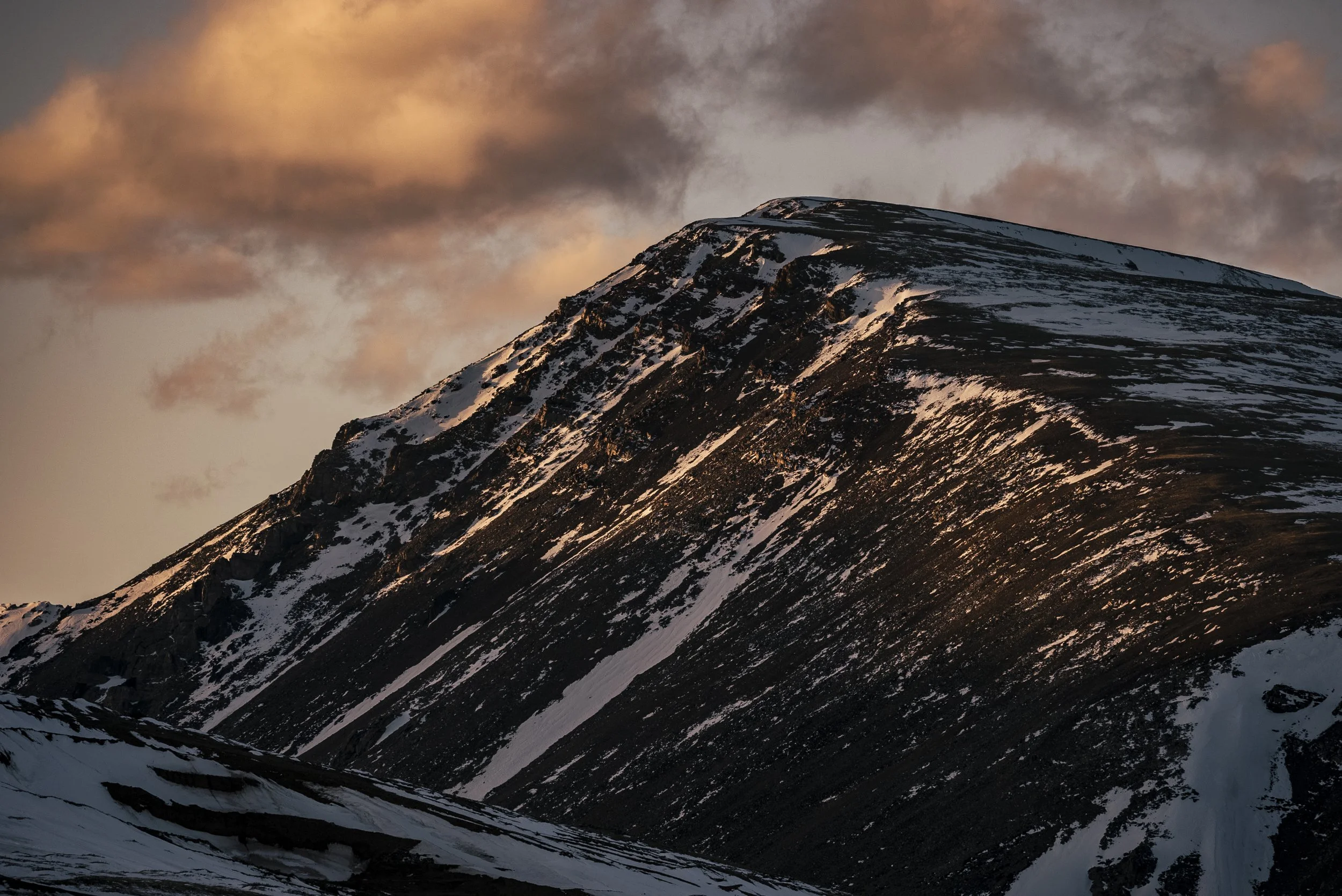
Spring 2022 in the Mosquito Range, winter has lingered with random storms and random property maintenance, along with exploring some favorite haunts and flying the drone.
In the high country the telephoto lens can isolate scenes and draw details that the standard and wide angle lenses just can’t. I’ve relied heavily on the FE100-400GM most of these outings, and have been very happy with the results.
Sony A7siii w/ Sony FE100-400GM
ISO 320 | F/5.6 | 1/200 sec. ~ 200mm

Spring 2022 in the Mosquito Range, winter has lingered with random storms and random property maintenance, along with exploring some favorite haunts and flying the drone.
In the high country the telephoto lens can isolate scenes and draw details that the standard and wide angle lenses just can’t. I’ve relied heavily on the FE100-400GM most of these outings, and have been very happy with the results.
Sony A7siii w/ Sony FE100-400GM
ISO 320 | F/5.6 | 1/200 sec. ~ 200mm

Spring 2022 in the Mosquito Range, winter has lingered with random storms and random property maintenance, along with exploring some favorite haunts and flying the drone.
In the high country the telephoto lens can isolate scenes and draw details that the standard and wide angle lenses just can’t. I’ve relied heavily on the FE100-400GM most of these outings, and have been very happy with the results.
Sony A7siii w/ Sony FE100-400GM
ISO 320 | F/5.6 | 1/200 sec. ~ 200mm

Spring 2022 in the Mosquito Range, winter has lingered with random storms and random property maintenance, along with exploring some favorite haunts and flying the drone.
In the high country the telephoto lens can isolate scenes and draw details that the standard and wide angle lenses just can’t. I’ve relied heavily on the FE100-400GM most of these outings, and have been very happy with the results.
Sony A7siii w/ Sony FE100-400GM
ISO 320 | F/5.6 | 1/200 sec. ~ 200mm

Spring 2022 in the Mosquito Range, winter has lingered with random storms and random property maintenance, along with exploring some favorite haunts and flying the drone.
In the high country the telephoto lens can isolate scenes and draw details that the standard and wide angle lenses just can’t. I’ve relied heavily on the FE100-400GM most of these outings, and have been very happy with the results.
Sony A7siii w/ Sony FE100-400GM
ISO 320 | F/5.6 | 1/200 sec. ~ 200mm

Spring 2022 in the Mosquito Range, winter has lingered with random storms and random property maintenance, along with exploring some favorite haunts and flying the drone.
In the high country the telephoto lens can isolate scenes and draw details that the standard and wide angle lenses just can’t. I’ve relied heavily on the FE100-400GM most of these outings, and have been very happy with the results.
Sony A7siii w/ Sony FE100-400GM
ISO 320 | F/5.6 | 1/200 sec. ~ 200mm

That stormy spring morning, after a night out chasing the stars in the Sangre de Christos, provided the colors that the Rocky Mountains are known for. This is a set of images that I’ve been trying to capture over the South Colony Basin, but I haven’t made enough trips to the area to see all of its moods and I can just hope this is the beginning.
In the high country the telephoto lens can isolate scenes and draw details that the standard and wide angle lenses just can’t. I’ve relied heavily on the FE100-400GM most of these outings, and have been very happy with the results.
Sony A7siii w/ Sony FE100-400GM
ISO 320 | F/5.6 | 1/200 sec. ~ 200mm

That stormy spring morning, after a night out chasing the stars in the Sangre de Christos, provided the colors that the Rocky Mountains are known for. This is a set of images that I’ve been trying to capture over the South Colony Basin, but I haven’t made enough trips to the area to see all of its moods and I can just hope this is the beginning.
In the high country the telephoto lens can isolate scenes and draw details that the standard and wide angle lenses just can’t. I’ve relied heavily on the FE100-400GM most of these outings, and have been very happy with the results.
Sony A7riii w/ Sony FE100-400GM
ISO 320 | F/5.6 | 1/200 sec. ~ 200mm

That stormy spring morning, after a night out chasing the stars in the Sangre de Christos, provided the colors that the Rocky Mountains are known for. This is a set of images that I’ve been trying to capture over the South Colony Basin, but I haven’t made enough trips to the area to see all of its moods and I can just hope this is the beginning.
In the high country the telephoto lens can isolate scenes and draw details that the standard and wide angle lenses just can’t. I’ve relied heavily on the FE100-400GM most of these outings, and have been very happy with the results.
Sony A7riii w/ Sony FE100-400GM
ISO 320 | F/5.6 | 1/200 sec. ~ 200mm